#though I am a bit more interested in seeing what will be the flagship games than any of the hardware
Explore tagged Tumblr posts
Text

Apparently, Nintendo's Twitter account changed their banner to Mario and Luigi gesturing at an empty space, and a lot of people theorize that it's because there's a Switch 2 announcement on the horizon...
#nintendo#super mario brothers#very curious#though I am a bit more interested in seeing what will be the flagship games than any of the hardware#Mario Kart 9 is a given but... what else...
75 notes
·
View notes
Text
Beware MAJOR spoilers for season 3 of Star Trek: Picard
Something about my Star Trek fandom that I’ve talked about elsewhere but only ever really hinted at on Tumblr is how and when I first got into Star Trek. Strictly speaking, my first encounter with the franchise was when I would have been about 11 or 12, I think. A TV channel was showing a one-per-week marathon of all the Star Trek movies (Nemesis was out by this point, but 2009 was still a ways off). I was too young to really appreciate it at the time, I guess; I have small memories of seeing bits of Search For Spock, Voyage Home, First Contact and Nemesis during that TV marathon, and I liked it, but I didn’t get that into it at the time. I saw the 2009 movie when it came out, but as someone with only a little bit of Star Trek experience, I simply enjoyed it as a summer blockbuster and moved on with my life.
But then around 2011, a friend on Steam messaged me asking if I liked Star Trek - apparently some online game had just gone free-to-play, and the friend wondered if I was interested in trying it out. Since I had a passing familiarity with the movies and remembered enjoying them as a kid, I figured why not and then my whole life changed forever.
Star Trek Online was (and still is) full of so many pieces of lore and information and references to past shows that it utterly piqued my interest and prompted me to start watching all the shows.
As a result of STO being my main introduction to Star Trek though, be it in its original 'Odyssey Class' configuration or its (non-canon) 'Yorktown-Type' refit configuration, the Enterprise-F is "my" Enterprise, in much the same way as those who grew up watching the early movies call the Constitution-Refit “their” enterprise, or those who grew up watching TNG call the Galaxy Class "their" Enterprise and so on. That was the big hero-flagship when I was getting into Star Trek for the first time. There was a point (like a decade ago) in the game where you could go see the Enterprise any time you wanted by looking out the window in the ship requisitions room on Spacedock. I remember standing there and being in awe of it as it loomed over the requisitions room.
I am THRILLED that Star Trek Picard made the ‘Oddy’ canon. Yes, it was disappointing that "my" Enterprise was sidelined after about 30 seconds on screen; we'd known for some time that the Enterprise-F was to be slated for "early decommission" in Picard season 3, and I'd gotten used to that fact, but I wasn't ready to see an Enterprise-G quite so soon. I actually briefly went through the stages of grief over it, not going to lie, but I've made peace with it now.
I look forward to seeing what adventures Captain Seven and First Officer Raffi have on the Enterprise-G (Star Trek: Legacy?), and I'm hoping that at some point, we might get a show, or at least flashbacks, set on or around the Enterprise-F during its prime (maybe Prodigy, since its about the right point in the timeline, as per Terry Matalas and Dave Blass’ lore about when the canon version of the ‘F’ launched).
As much as I would have liked to see more of it in those episodes, the Odyssey Class Enterprise-F, "my" Enterprise, will forever be part of Star Trek canon now and I am so grateful!

#startrek#startrekpicard#star trek#star trek picard#startrekonline#star trek online#sto#uss enterprise#trekkie origin story#the enterprise has a canonically bi captain and thats cool#also im glad raffi is back in starfleet#michelle hurd looks crazy good in a starfleet uniform
180 notes
·
View notes
Note
HI THERE!! A fellow FFVII pleb here 🙌🏼🙌🏼
But I have not played Ever Crisis, and your art is
💥mega💥 from it.
May you infodump at your will where these outfits are from in the game, if you have any reference pics, and what the game covers?
If not, that is fine too 🌷
Thanks!
Thank you for the nice comment about my art! I've been in a slump recently on account of the world being on fire and having chronic pain in my hands, so I'm glad people are still enjoying what I have put out there.
Most of the EC outfits are only really "in-game" as related to non-canon seasonal "Portal" events, referred to as such due to their existence being explained via the existence of a spell of the same name, originally developed by Shinra before being ruled useless and put on a shelf. The materia for the spell was apparently stolen at some point in the early '90s, and it periodically crops up due to fiends, Cetra, or other nonhuman entities creating an excuse for the cast to get into alternate universe hijinks. The lore indicates that the Portal materia may have been stolen by the A.I. that ran the simulator originally used to train P-0 Class SOLDIERs during the course of the First SOLDIER Battle Royale, which eventually developed a form of sentience and literally ran away. This seems to be what caused that training program to shut down in-universe. (IRL the game was shut down because of real world financial fraud perpetrated by one of the co-creators of Sonic the Hedgehog, because we live in the weirdest timeline. Getting some closure on it in-game was super interesting, though.)
The game itself is intended to be a sort of abridged version of the entire Compilation of Final Fantasy VII (not the funny youtube haha kind of "abridged") told in short sections with frequent breaks, allowing it to be played basically anywhere.
There are currently three active titles:
Final Fantasy VII: The OG, but make it bite-sized. The pacing here is pretty poor, but mostly because the devs seem intent on pushing it as the flagship title of Ever Crisis even though it is not the one that they use in advertisement. (Current chapter: recruiting Vincent in Nibelheim.)
Crisis Core: Everyone's favorite gay tragedy. The pacing on this one is about the same as it is in the original, although there are a couple new little bits. The translation is still ass due to "no homo," and recently they seem to be working very hard to retcon Angeal being a self-righteous trashbag for some reason, which is kind of ruining the whole storyline, but we'll see if they fix that. (Current chapter: Genesis' siege on Shinra HQ.)
The First SOLDIER: Not to be confused with the battle royale title of the same name mentioned above, this game starts with three unenhanced P-0 Class SOLDIER randos (they're relevant to Rebirth) and segues into the backstory of Sephiroth starting around age 13-14. This is what they used in advertisement, and then delayed updates on so many times that the ending was spoiled by Tseng during a board meeting in Rebirth. I am not joking. (Current chapter: Act I end.)
The game is intended to eventually also include Dirge of Cerberus and even Before Crisis (which has never been released outside Japan and hasn't been playable even in Japan for over a decade), but not until after the OG and CC's storylines finish. There is roughly one chapter update to a single active title every 4-8 weeks, so it's going to take a while.
All that said, there are currently around 80 alternate outfits spread over 13 playable characters (some are more favored than others, Aerith has about a dozen while Barret has three), and I don't actually even have half of them altogether. I do have a lot, though, so I'll put details under the cut of what I have and if there are any specific ones you'd like to see I can get screenshots for reference purposes.
— Cloud [5/9] Murasame, Bandaged Coat aka Death Gigas cosplay, Festive Garb, Saber Style, and Bahamut Garb. Missing Battlefield Garb, Maritime Sailor, Zidane, and Glavenus Armor.


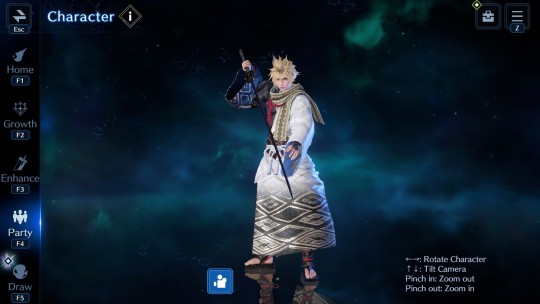


— Barret [2/3] Fiery Cape and Electroarmor. Missing Scrap Armor.


— Tifa [2/10] Metalfoot and Fairy of the Holy Flame. Missing Lifeguard, Amarant, Guide Uniform, Bunny Bustier, Feather Style, Kirin Suit, Passion Mermaid, and the upcoming Bahamut gear that I will not be pulling for.
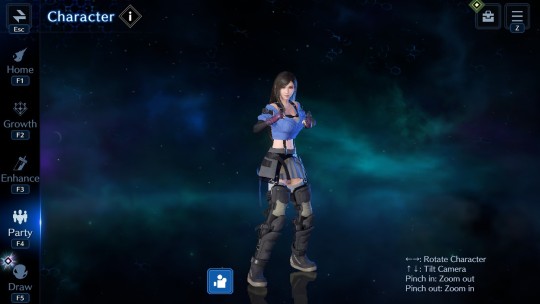

— Aerith [2/11] Rosy Battle Suit aka postcanon Genesis cosplay and Chocobo Suit. Missing Sunny Robe, Prism Dress, Garnet, Fairy of Snowfall, Floral Gown, Classic Coney, Kamura Dress, Citric Dress, and Bahamut Robe.


— Nanaki [2/4] Seaside Aloha and Canyon Duds. Missing Rubber Harness and The Hellhound aka the Sonic OC recolor skin.


— Yuffie [1/5] Puckish Lion. Missing Winter Moogle, Sparkling Skater, Shinobi Hawk, Summer Moogle, and Bahamut Mantle.
(No image because I hit the limit and it's a disaster tbh.)
— Cait Sith [2/3] Marching Jacket and Felyne Kamura. Missing Party Jacket.


— Vincent [3/3] Bouncer Suit, Stray Dog, and Formal Attire.
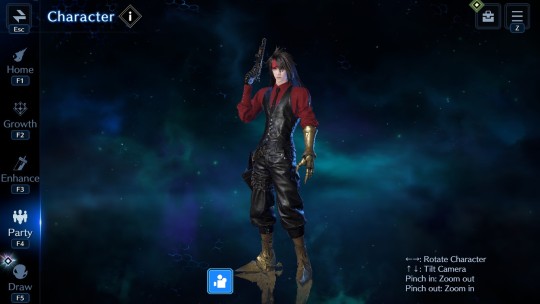
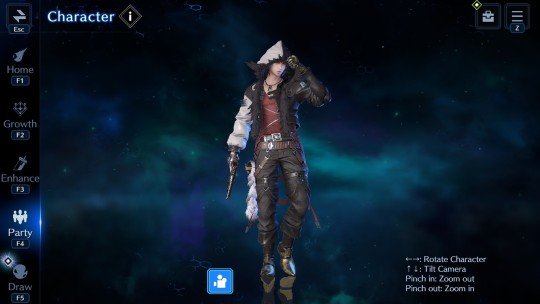
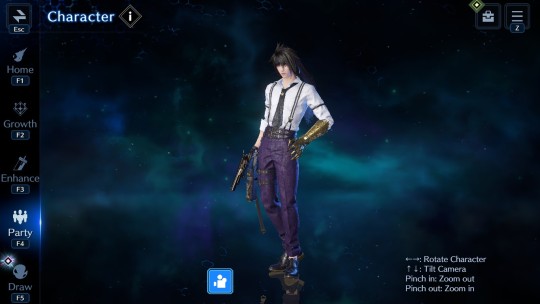
— Zack [4/8] Tropical Beach, Guardian Style, Glacier Armor, and Zinogre Armor. Missing Valiant Suit, Black Hound, Holiday Suit, and Shinra Full Dress Uniform.
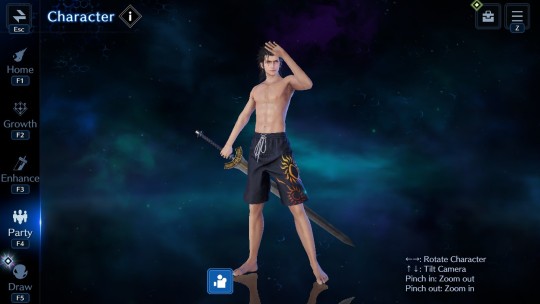
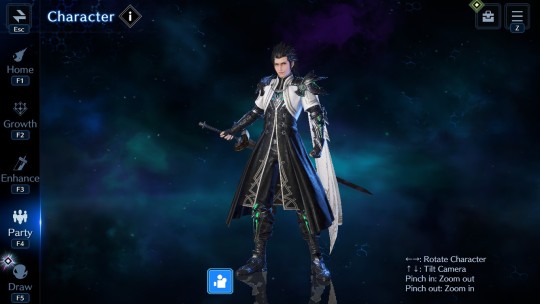
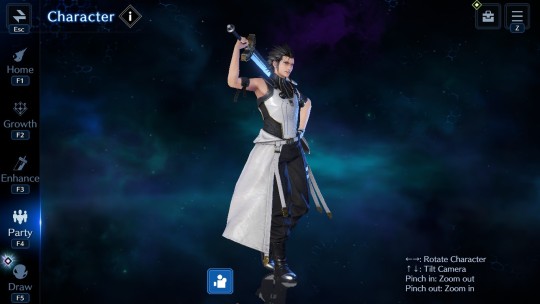
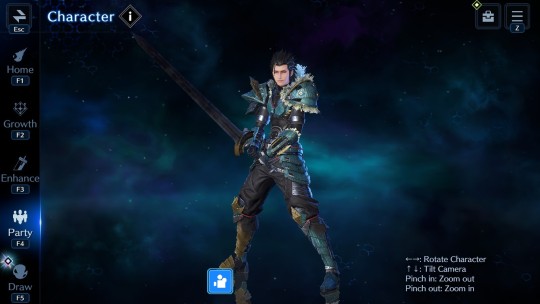
— Sephiroth [8/9] Aeroglider, Edged Wings, Dark Harbinger aka the half-Galian Beast cosplay, Kuja, Celebratory Garb, Lethal Style, Shinra Formal Uniform, and Natant Jacket. Missing Dark Attire because it was running the same time as one of Vincent's outfits and I didn't have the crystals for both. (sob)

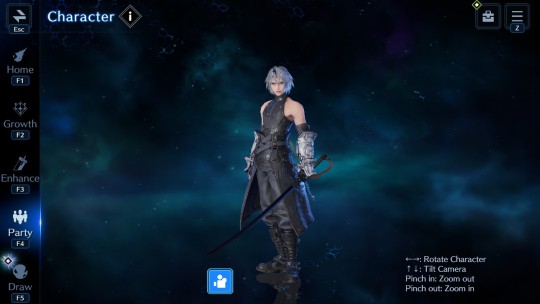


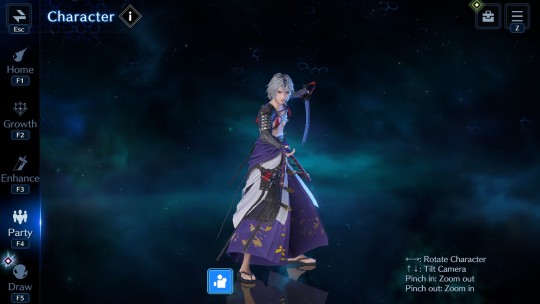



— Glenn/Matt/Lucia [1/who cares] I only have 1 proper alternate outfit for each of them and only because the game gave them to me, plus Lucia's Vivi, which is just a recolor of the first alternate outfit with a hat on top.
No images because I hit the limit and I don't care for any of these people.
#final fantasy 7 ever crisis#ff7 ever crisis#ff7ec#ever crisis#long post#not gonna tag characters on this one#so as not to clutter up the tags#but they're basically all here
16 notes
·
View notes
Text
Star Wars Battlefront II (the good one)
My nonfunctional internet is preventing me not only from finishing off my essay, not only from watching the lecture that I would have shown up for were it not for mediary COVID restrictions, but it’s also stopping me from writing anything here that would require any sort of research or confirming details. That leaves me with less options that I would have thought.
Browsing through my Steam collection for ideas on what to talk about, and something jumped out at me pretty quickly.
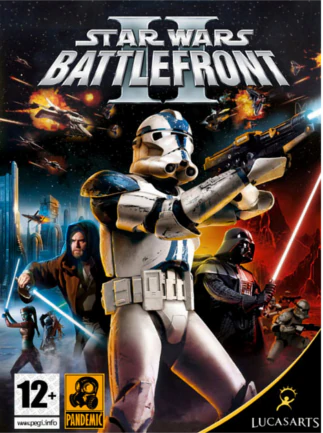
Star Wars Battlefront II (the 2005 game, not Star Wars Battlefront 2, the sequel to the EA remake much maligned for malicious microtransactions) is a first/third person shooter that, while showing its age, remains one of the best games the franchise has ever put out. This is, of course, an opinion coming from someone who has yet to play Knights of the Old Republic, but it feels like Star Wars as a franchise has more misses than hits. So what makes this one land?
While I’m woefully unfamiliar with the early 00s shooters that Battlefront II was competing with (aside from Counter-Strike Source, but I’d argue that’s a different target market), I am extremely familiar with this one. I think part of why Battlefront II is so fondly remembered is on account of it being almost a gateway game for people getting into shooters in general- I for one played it extensively on my mate’s PS2 in primary school, and later on someone else’s PSP, and I doubt I would later have clicked so strongly with Halo if I hadn’t.

But what Battlefront II has more than anything else I feel is ambition. After the conclusion of the prequel trilogy, Star Wars’s universe was big, and the developers seemed interested in representing about as much of what we see of it’s style of warfare as they possibly could. As a result, the maps are a glorious smattering of worlds and terrains, loving and detailed recreations of places from the various films as well as a few that are probably new (I might just not remember them), each drizzled with vehicles and turrets and resources. Each of the game’s four factions share the basic units with very few differences (except for the Super Battle Droid), making them easy to understand and grasp for newer/younger players, with the complexity of each’s unique units paying off those willing to grapple with their weakness and play to their strengths. Some are definitely better than others, but that isn’t especially obvious at first. The basic classes reflect tropes seen in other games and while again some falter it’s not by enough that picking them in the wrong situation is a guaranteed blunder.
There are, of course, the heroes, major characters from the series granted to a player who’s doing pretty well, and I feel like this is another pretty well handled mechanic, even if a little awkward. There are enough of them, and they’re distributed enough between maps and factions, that they don’t tend to feel stale, and it’s pretty obvious that while they can absolutely ruin a team it’s also pretty easy to mishandle them. Unfortunately, heroes are related to one of my biggest complaints about the game, but we’ll get to that later.

One of the biggest selling points in my eyes are the dogfight levels. Now, I’ve never played X-Wing or the like, in fact my experiences with dogfighting games is extremely limited. But this part of the game fucks so hard. The design ideas begun with the class selection continue with the (admittedly small) range of starfighters you can pilot, with specialised interceptors, bombers, and landing craft to go alongside the effective all-rounders. The mode offers a variety of playstyles, between hunting down opponent’s fighters to bombing their flagships to boarding said flagships and destroying their systems from the inside. There is also the option of manually controlling the turrets, as well as acting as a gunner for someone else’s bomber/lander, but these positions are unfortunately underpowered and underexplored- they’re also, ultimately, less fun. But the dogfighting just feels right. I can’t really explain it, but moving in that 3-dimensional space feels not only satisfying but accurate to the source material in a way I don’t think any future Star Wars game has yet replicated.
I suppose the various game modes are worth discussing. Skirmishing on whatever map you want is the standard, at least in multiplayer, but there are a few unique offerings you won’t see in other modes- Hunt, where it’s a faction versus some of the series’s wildlife in a mode that always feels imbalanced towards one side or the other. There’s obviously Assault- the standard name for the space dogfights but on one ground map (Mos Eisley) it is of course the ever-popular heroes free-for-all, a chaotic mess but one where you can test out each one and figure out what their abilities actually do. But in the broader strokes, you’ve got the story, and the Galactic Conquest, as the two main other modes.

(oof, they really didnt build this with this resolution in mind huh)
That’s right, this game has a story, and it’s…okay? Ultimately it’s just a series of missions with the 501st, as they fight in the clone wars, turn on the Jedi, and ultimately become the Empire’s tool of oppression, separated by exposition. You get to run through some scenes from the movies, including the boarding at the start of the first movie and the Battle of Hoth, though some of the missions feel harder than intended- no matter how good the player is, the AI is not going to fare well in the tougher missions and you have a solid chance of ending up on your own.

Galactic Conquest is the game’s more unique selling point, being something like a basic version of Risk but with the dice-rolling battles replaced with Star Wars Battlefront II. You earn credits over time and through victory that you can spend unlocking types of units, getting new fleets to improve how many fronts you can wage war on, and unlock powerups for use in the actual battles. It’s largely fine, feeling like a bit more controlled and strategic version of just playing randoms in Instant Action, but it suffers the most from the biggest problem this game has.
The game’s truest flaw is its AI. They are dumb as a sack of potatoes, and the main thing holding the game back from perfection. And it was the early 00s so imperfect AI was to be expected, but it’s a bit more than imperfect here, I guess. Robits standing still while shooting you (or just at all, while you’re sniping them), extremely questionable vehicle and turret usage, and literally crashing starships into you, your flagship, or their own flagship. Bumping their difficulty up doesn’t really help, either. Even more egregious is the AI’s usage of heroes- or rather, that they don’t. If you’re playing single player, the game will always give earned heroes to you rather than your robot teammates, will not let one of them take if it if you decline to use the character, and you will never see one on the opposite side. This would imply that there wasn’t code for the Ais to use them, except there clearly is because Assault Mos Eisley exists- and they’re arguably much better there than in any other mode! It’s a real shame, because the low quality of the AI combined with the nature of the games means that victory is extremely polarised based on the player’s skill- if you bad all the way up to pretty decent at the game, your input basically doesn’t affect the outcome, whether you win or lose. If you’re good at the game, you will never lose at singleplayer, possible exception again being Assault Mos Eisley. It’s a little absurd, honestly. Also, I’m not even sure they go for the flag in CTF in space.
I am, however, willing to look past these flaws. The game is far from perfect, but it’s just incredibly fun. It’s a type of gameplay that they’ve tried to replicate, but never quite recaptured- and I think part of the reason for that is because the awkwardness is part of the charm. It’s nostalgic- both for those who played it when they were younger and just those in my generation who grew up on the Prequels. It’s also way more expensive on steam (bruh 14.5 AUD for real?) than I expected, but it goes on hard sales pretty often (I think I paid like a buck fifty for it), so it’ll be within budget at some point. I don’t know if I can recommend it for those who aren’t nostalgic, though, solely on account of those awkward features you likely wouldn’t be able to ignore like I do. And that’s a shame, because it’s not like they’ve made a better version of this game.
Fuck EA, basically.
3 notes
·
View notes
Text
Heart’s Choice Author Interview: RoAnna Sylver, “Dawnfall”
Find true love and family with a pirate crew at the ends of the universe, where aliens, ghosts, and portals open the space between worlds...and your heart. You are a Navigator, one who creates and guards portals from one dimension to another, wary of the liminal sea between them.
Your universe is made of two worlds: one contains the magic-infused world of Zephyria, and the other, the dystopian space station Eclipse. The worlds are balanced, until one day, an explosive disaster, a deadly energy storm, and an infamous pirate—the Ghost Queen—upend your life and plunge you into a race to save both worlds.
Dawnfall is a 232,000 word interactive romance novel by RoAnna Sylver, one of the first set of games releasing with the launch of Heart’s Choice. I sat down with the author, RoAnna Sylver, to talk about writing interactive romance. Heart’s Choice games release December 2nd.
Dawnfall has frankly an insanely wonderful setting for a romance game. Tell me about the aliens, the pirates, the ghosts, and the alien-pirate-ghosts.
Hi there! I’m so glad you think this sounds fun! Yeah, Dawnfall is weird as heck, and that’s one of the things I love about this story. It’s weird in a way I don’t think we’ve seen much of before. I really just tried to put in everything I find fun or interesting, and that I’ve always wanted to write. Dawnfall started out as a total brain-candy project, and runs on pure Rule of Cool. Pirates? Yes. Magic? Yes. A slice of cyberpunk? Hell yes. Eerie ghosts and faerie-tale influences and memory-sharing potions? Giant bird people? The power of rock n’roll? Yes, yes, yes.
And also everybody’s dateable, and in a couple cases, dating each other. We weave a tangled web, but I think it’s a pretty badass and spectacular web.
You seem to really neatly straddle the genre fence here with a romance and sci-fi/fantasy. What was challenging about cramming all of that into one game?
Thank you so much for saying that. I’ve always adored SFF, and there’s so much in this genre-collection, so many extremes and concepts and contrasting colors, that I couldn’t limit myself to picking just one to play with. This weird game-book is kind of a love letter to fantasy and science fiction and haunted house stories and cyberpunk adventures—I thought a lot about the Disney movie Treasure Planet for its genre-blending beauty, and the Bioware game Mass Effect for its array of fascinating, multidimensional alien cuties to interact with and date… and then turned it up to eleven.
I guess you’d expect the challenge to be in making it all fit together/be “believable,” but I kind of threw that out the window. I don’t expect anyone to find it ‘realistic’ (setting-wise anyway; I tried to make every character ring true of course), and I don’t really care if someone thinks it’s silly, or doesn’t take it seriously. It is silly in a lot of ways. DAWNFALL is a giant ridiculous queer space magic pirate adventure, and the only goal is fun. If you have fun, I’ve done my job, and there should be something fun in here for everyone.
Did you have a favorite NPC you enjoyed writing most?
Honestly I love them all so much in different ways, and I know them so well by now it’s really second nature. Their voices come so easily and they’re all so much fun. The Queen’s swagger is awesome though, and her mental voice/mannerisms probably come through especially clearly. I love Zenith’s vulnerable moments when xie lets xir guard down and lets go of the need to entertain or please. I love Averis’s journey and growth from cute wibbly nerd to a confident swashbuckler (who is also still a cute wibbly nerd). I love how deeply Oz feels, how strongly he loves and remembers and honors memory, and how unafraid he is to show softness and warmth. And I love a certain spoilery ghost-babe and how they’re so full of joy at the beauty of life.
I do want to give special mention to Aeon, though. This is a story about connection, and I wanted to show that sibling bonds are every bit as important and strong as romantic or any other. I also wanted to show a complex, multidimensional antagonist figure who holds heartbreaking secrets along with authority, and is genuinely trying to do what she thinks is the best thing, and wants what’s best for you, the PC, even if you might not always agree. Her balance between being so emotionally guarded and determined and unyielding, while hopefully being extremely easy to read and tell what she wants and fears and loves—spoiler: you; she loves you!—was a challenge I hope I pull off.
…Also I enjoy any time Vyranix gets his pompous feathered ass handed to him. I think we all know a Vyranix, or at least of one, and it’s always fun to take them down, even in fantasy.
Who would you be romancing as a player?
I’m gonna say “everyone,” and here it won’t actually be cheating, because you can romance everyone! At once! In varying degrees/relationship dynamics and attractions. You don’t see a lot of polyamory-friendly games or books or anything really, and this is an incredibly important thing for me. The second I got the idea for Dawnfall I knew it had to let players romance anyone they wanted and show polyamory in a realistic, healthy light. I’m also a-spec (asexual and aromantic), and having not just good representation but being actively included and welcomed and celebrated in fiction is so huge too.
Dawnfall is a romance of course, being part of Heart’s Choice, but one of the single most vital elements for me is making it inclusive for aromantic and asexual players and player-characters. Essentially, I wanted to write a romance that didn’t penalize players for not experiencing the attractions the way we’re otherwise expected or required—and I’m so grateful that my amazing editors and community not only accepted but supported everything I was trying to do here. (It’s so refreshing not to have to fight for inclusion and freedom. It shouldn’t be, but it is.)
And that’s where the concept of “Heart-Stars” and “Same-Feathers” came from. I’ve never seen anything honor queerplatonic relationships like I’m trying to do here, and I want everyone, of every sexuality and attraction, to feel like they have a place here and can experience this adventure without limits. And I wanted to show that it’s a very normal thing, hence this being the same for the human characters as well as alien. (One of the nonbinary characters being human is also no mistake. I love me some wild alien genders, but there are tons of awesome nonbinary humans too!)
…That being said, I think I gave Averis most of my anxiety-issues, and would really just like to curl up with Oz and watch The Great British Bake-Off. That sounds like a perfect night in my books.
What were some of the things you found surprising about the game-writing process?
Coding was definitely the biggest learning curve. I’d never coded anything before in my life, and it’s such a new skillset to learn, entirely different from any kind of writing I’ve ever done. Sometimes it felt rewriting my brain, which did not at all do this intuitively—and also sometimes like I bit off much more than I could chew (first game ever being not only a huge piece of interactive fiction, but a polyamorous romance with aro and ace possibilities, and so many more variables than expected!), but it’s been worth it. Entirely. If my writing makes anyone feel seen and accepted and invited to have fun as they are, it’s worth every bit of struggle.
Also, oddly, interactive fiction is in some ways easier for me than writing a plain old book! Probably because I love AUs so much, and every choice in a game is like writing a tiny AU of the story, so I get to do the same scenes several different ways. My ADHD-brain finds something about this extremely satisfying, most likely because it somehow feels more like multitasking! Several stories in one, and if I like two ideas, I don’t have to pick just one to write!
Honestly though, I think the most surprising part is just being done, and…that I could do this at all. It was so huge, and took so long, and I learned so much, and every day I’m just kind of going “who the hell am I?” about doing all of this. I’m proud of it. I did a cool thing. And trying to get better at saying that.
And, what are you working on now?
I always have about 8 active projects going at once (which shouldn’t come as a surprise after last question!), but my next interactive fiction game is with Tales/Fable Labs! It’s shaping up to be a Dawnfall-sized project, but a little faster-moving and action-y.
It’s called Every Beat Belongs To You, and it’s a romantic thriller that feels like Twin Peaks meets Mr. Robot, with a smattering of Repo: The Genetic Opera. A creepy Pacific Northwest town with a secret (and a rash of ritualized murders), a super-slick medical research company whose flagship product is a 100% perfect synthetic heart, a mysterious new-age group, and a sister who went missing just before discovering how it’s all connected. Also five simultaneously-dateable (including ace and aro ships!) cuties of varying genders! Who will you trust with your heart?
I’m very excited about Everybeat, which should be just as queer, polyam, exciting, and weird as all my stuff! Aside from that, I’m working on Stake Sauce Book 2, its companion f/f vampire series Death Masquerade, and Chameleon Moon Book 3. I’m not always working…sometimes there are videogames, and sleep. But I really hope to have a lot more fun things to share soon!
Oh, and depending on how this weird, fun thing goes, I do have some ideas for prequel Dawnfall stories; maybe games, maybe books, but the ideas are there. The world—worlds, really—is so huge, and I’m not done playing in it yet! I also have some character art drawn, and I want to do a lot more of them. It’s another way to show love.
So thank you so much! I really hope Dawnfall is as fun to everyone to read/play as it was for me to write. I can’t wait to share it with you!
13 notes
·
View notes
Text
My Amateur European Travel Guide
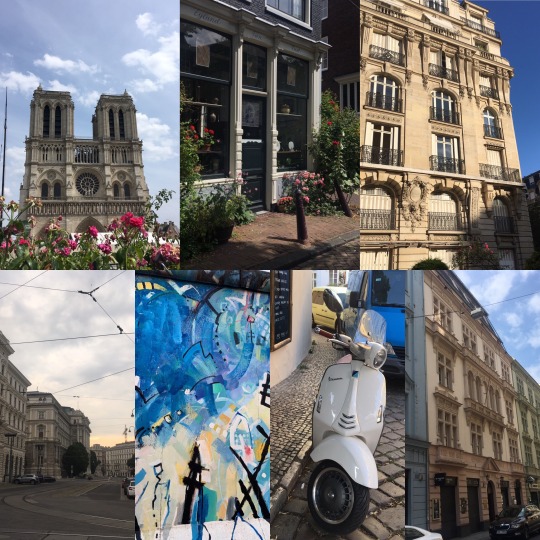
Hi to anyone who’s reading!
I spent just over a month in Europe over the summer and have far too many good food pics that deserve more than sitting in my camera roll untouched and thus I thought I’d do my very shitty, amateurish version of a travel guide, basically a run down of my favourite things that we did in each city. From touristy shit like the Colosseum and the Roman Forum to some equally beautiful but lesser known places, getting an inter-rail pass gives you the time to see everything whilst not spending an absolute fortune.
I went with a friend and we did the basic, first-time traveller route: Paris, Amsterdam, Berlin, Prague, Vienna, Budapest, Ljubljana, Venice, Rome and Milan. The pass, which allowed us to use domestic and international trains on 10 separate days within a month, for students only cost £230. We did then have to pay extra for the Eurostar from St.Pancras to Paris, and additional “reservation” fees to get seats on the trains in Italy and between France and The Netherlands, but all in all this didn’t cost us anymore than about £50. The flight back from Milan to Southend Airport cost £30, though be warned that it’s actually pretty hard to get from Southend to central London; if we hadn’t been able to get a lift, we probably would’ve spent an extra £30 getting home from there.
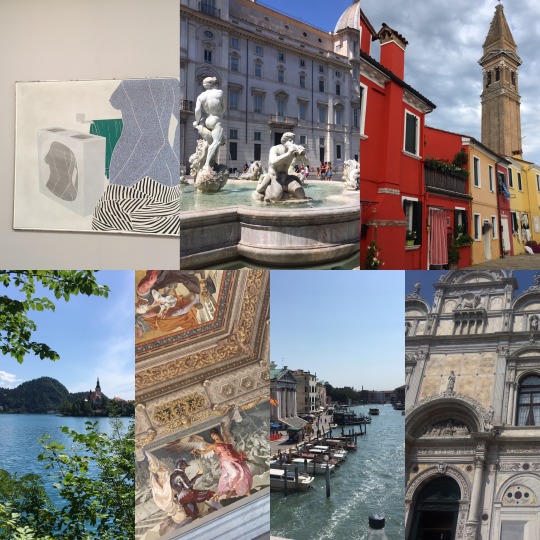
We were away for 3 weeks and 4 days in total, and on top of the approx. £700/£800 we spent on hostels and air b&bs, I spent about £1500 whilst I was away. You could probably get away with taking about £1000 with you if you’re willing to cook while you’re away. We did a couple of nights whilst we were in air b&bs, but on the whole, we usually ate out. The hostel kitchens were a bit of a nightmare, though I’m not going to pretend it was anything other than a combination of laziness and gluttony that stopped me from cooking, lol. HOW CAN YOU GO TO ITALY AND NOT GO OUT FOR PASTA EVERY NIGHT?! It can’t be done. With my non-existent self-control anyway.
Once I got back from inter-railing, I also then spent a week with my family staying in the cutest seaside town about half an hour outside of Barcelona, Sitges, which we’ve visited a few times before. For that reason, I thought I’d write about some of my favourite things to do in and around Barcelona, not just from this trip but from all the times we’ve visited over the last few years.
I’ll start, though, with the first place we visited on our inter-railing trip: Paris.
Paris, France
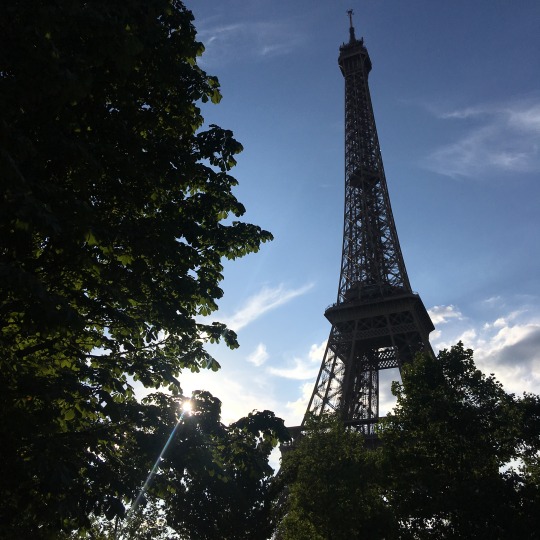
It might be because it was the first place we went and the place where I had the most energy and drive to explore, lol, but Paris was my absolute favourite of the cities we visited. I know a lot of people seem to be disappointed with it but there’s just so much to do and so much culture; gorgeous architecture, art, fashion, food, I feel that it lives up to its reputation in every way if you really utilise your time there properly. The public transport is easy to understand and use and my only gripe with the hostel is that it was a little far out. This didn’t really limit us in any way though, so it didn’t bother me.
The Hostel

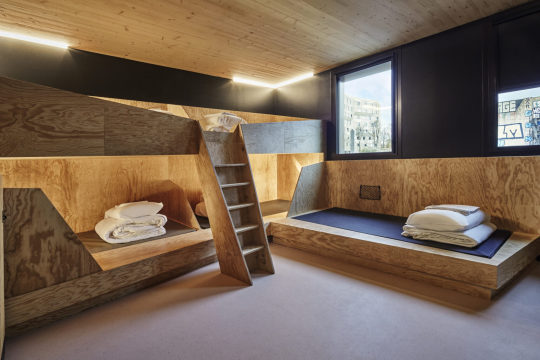
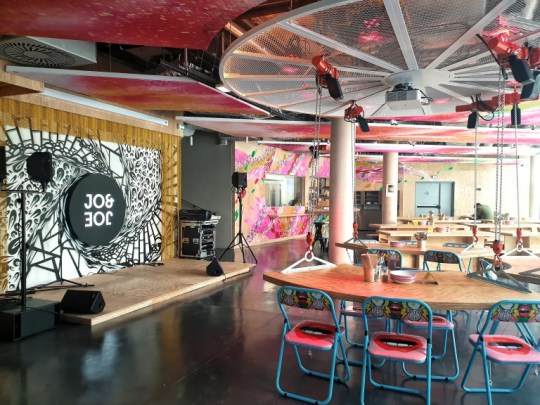
Our first hostel, Jo&Joe’s in Gentilly, was a really cool place. I believe it was around £30 a night (one of the more expensive hostels we stayed in) to stay in a room like the one I've included a photo of. The beds were comfy and you had a decent amount of space, and the wi-fi was good. My only issue is that there wasn’t much privacy in terms of the bathroom; there was one toilet room and one shower room in the actual bedroom to be shared between the 6 of us. There didn’t really seem to be much about in Gentilly but to be honest, we didn’t venture very far and there’s more than enough to do in central Paris.
Paris Top Things to do:
1. Palais de Tokyo
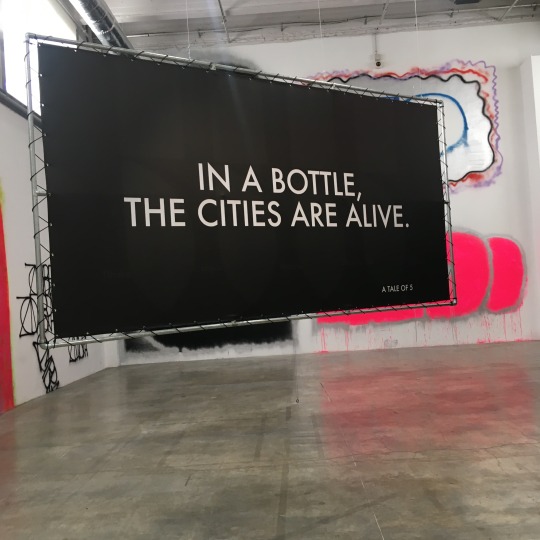
Probably my favourite art museum we visited our entire trip, Palais de Tokyo was...an experience.

Costing £8 for a student ticket, almost every piece of artwork in there was strange as hell. That being said, it was all very immersive and interactive and like nothing I’d seen before which is why I liked it so much.
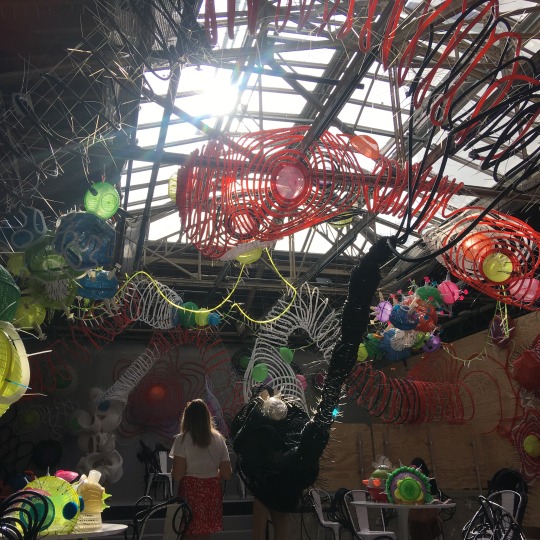
Well, apart from the dirty sock. Literally. There was a dirty sock on display. Art, right?
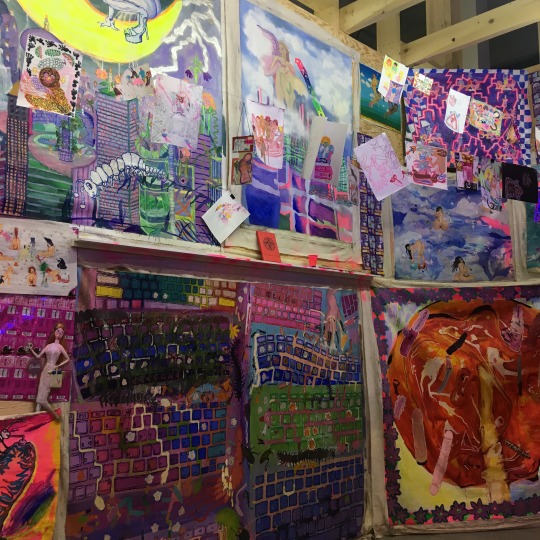
2. Musee D’Orsay
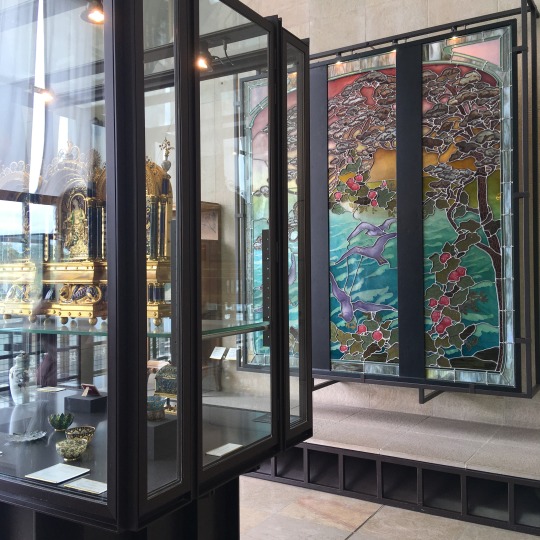
I’d say if you only had time to do one of the “big” art museums in Paris, do Musee D’Orsay, not the Louvre.

It’s a lot more compact and has a wider range of styles, plus a lot more modern art, including some Van Gogh and several Degas. I had so many favourite pieces from Louise Abbema’s Allegories of Spring and Winter, to Thomas Couture’s Romans in their Decadence:
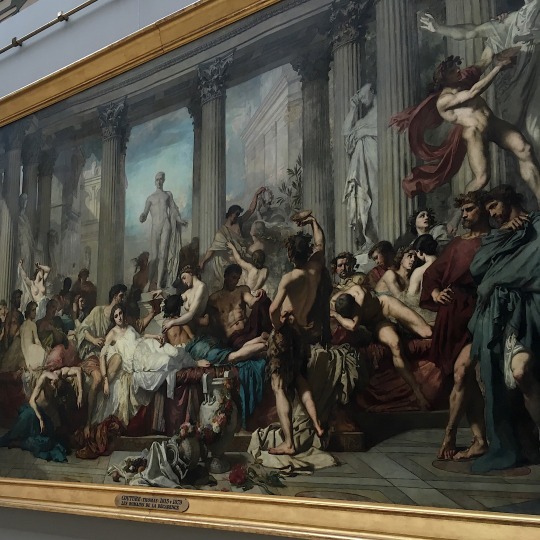
Plus I’d take Amaury Duval’s portrait of Marie-Anne Detourbay over the Mona Lisa any day. The staring into your soul game she’s got going on is unparalleled.

3. Eiffel Tower
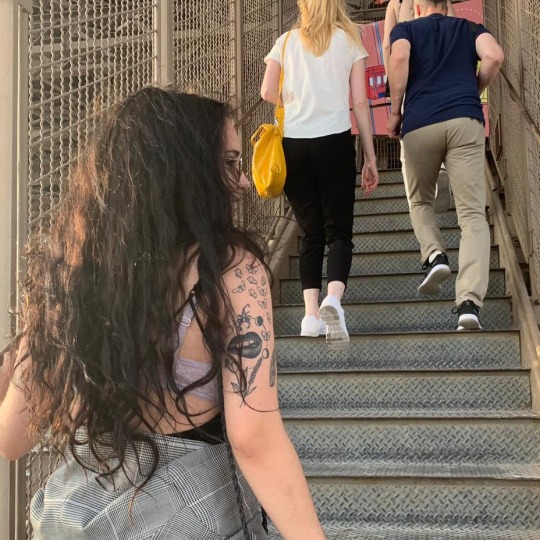
I think the level of dumbassery involved in my decision to wear heeled boots to make the 500 or so step journey up the Eiffel Tower cancels out any smarts that went into us saving €3 by booking in advance and walking instead of getting the lift, but it’s all about the experience, lol, and I would do it again for the view. It only cost €5 in total and by booking online about a month before, we didn’t have to wait in what is usually about a 3 hour queue if you turn up on the day.
4. Yves Saint Laurent Museum
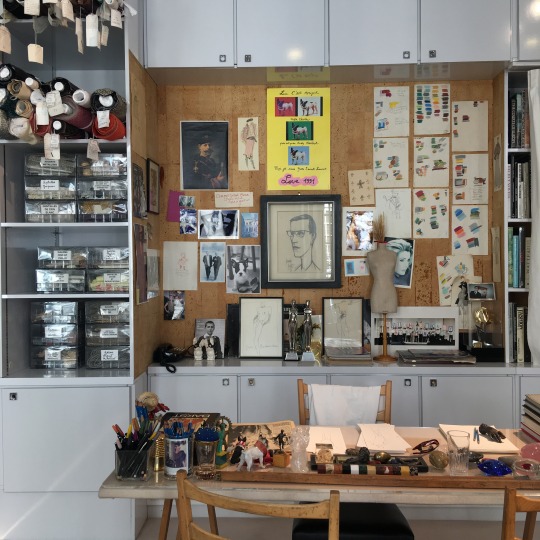
It only took us about an hour to do the Yves Saint Laurent museum but it was definitely worth the £10 for entry if you are interested in fashion. It was pretty quiet when we went which I liked as it made for a much more peaceful experience than say, the Louvre, and the museum is very well laid out. There’s a load of original pieces in there and I feel like I learned a lot about Saint Laurent himself too. I also learned that I am very unsophisticated (I really didn’t feel posh enough to be walking into the building, lol) but we been knew.
5. Sacre Couer
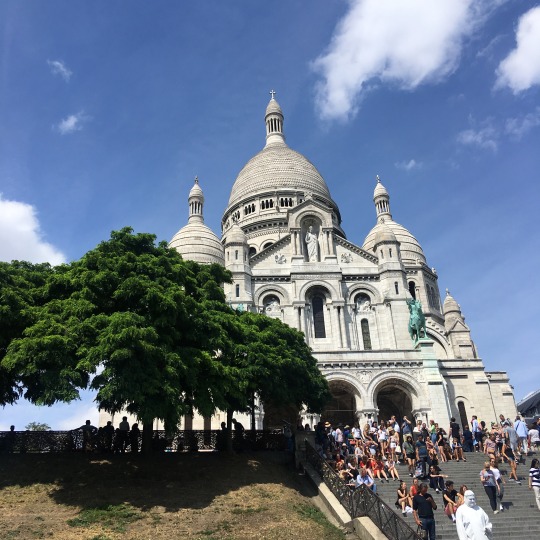
Warning: The Sacre Couer is a very steep walk from the nearest tube station. I internally died. Several times. But it’s very beautiful once you get up there.
6. Monmarte
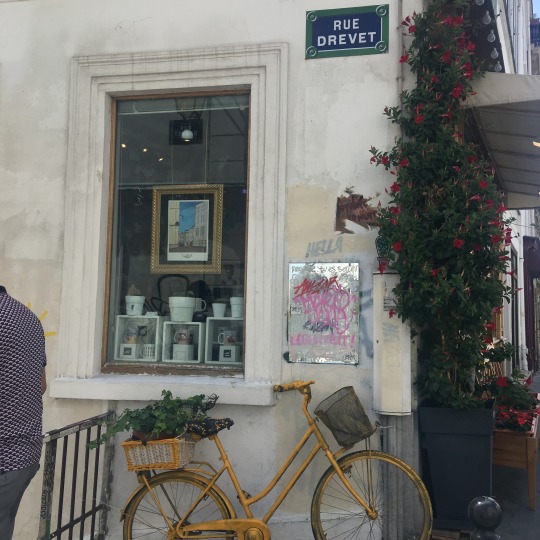
I wish we’d had more time to explore Monmarte as it was one of the prettiest places I saw on our trip, with so many cute restaurants and cafes. Top things to see in the area are the Wall of Love and though we didn’t actually go there, Montmarte Cemetery too. I found out when we got back that the latter is supposedly inhabited by a load of stray cats and now I am severely disappointed that we didn’t have a look. I guess I’ll just have to go back! You know, just to check if it’s true about the cats. And also eat some more of the food, ofc.
7. Vintage Shopping
We had a quick look in two of the vintage shops whilst we were in Paris, Kilo Shop and Tilt Vintage, and I saw a lot of really cool things. Unfortunately, because I couldn’t really fit anything else in my backpack and was being pretty tight with money at that point in the trip (an attitude my bank balance probably wishes had been sustained throughout, lol), I didn’t get anything. Still, I’d definitely recommend checking the shops I mentioned and the other vintage shops in that area out if you are interested in buying some clothes whilst you’re away. The only thing I’d say is to avoid them if you have trouble with crowds and/or small spaces as there were a shit tonne of people in pretty much all the ones we went in and because of the layout, not much room to move. And protip: if you like breathing non-body odour tinted oxygen, don’t venture in any of them in the middle of heatwave. Not fun.
8. Champs Elysees
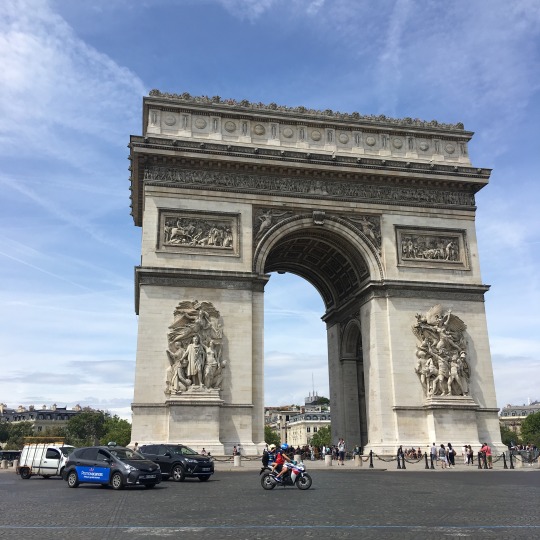
I think it’s kind of a given that you see the Champs Elysees whilst you’re in Paris, but last time I was there, I only really saw it from an open top bus and was quiet underwhelmed. On this trip, we walked from the Louvre through the Tuileries and then slowly made our way down towards the Arc de Triomphe, having a look down the streets that run perpendicular to the Champs Elysees on our way, which were all very typically Parisienne. At the bottom, you have Aventue Montaigne which has all the fancy, designer flagship stores, and then down Avenue FDR (where we went for lunch) there are plenty of places to stop and have a bite to eat. I thought I’d been all French getting a baguette from down here before realising it was from a glorified Paul which we have all over London, BUT, if you’re into açai bowls, my friend had a really good one at a place called Cojean.
9. Versailles
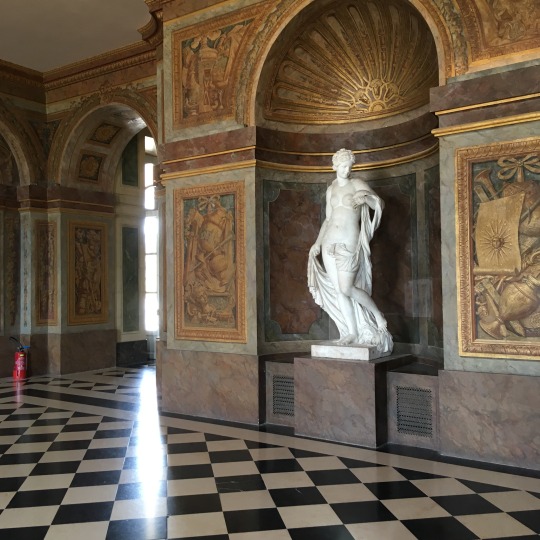
Before we went to Versailles, a lot of people told me that it was really crowded and not worth going to but I couldn’t disagree more. It was so beautiful both on the inside and out and there’s so much to learn! I’ve always been fascinated by Marie Antoinette so I might be slightly biased but I was totally in my ex-historical nerd element. I would definitely recommend arriving as early as possible if you’re not paying for skip the line tickets, since we got there for around 10 and had to stand in a very long queue to get in. It did move quickly but looked very daunting at first and I imagine it only gets worse as the day goes on.
10. Disneyland Paris
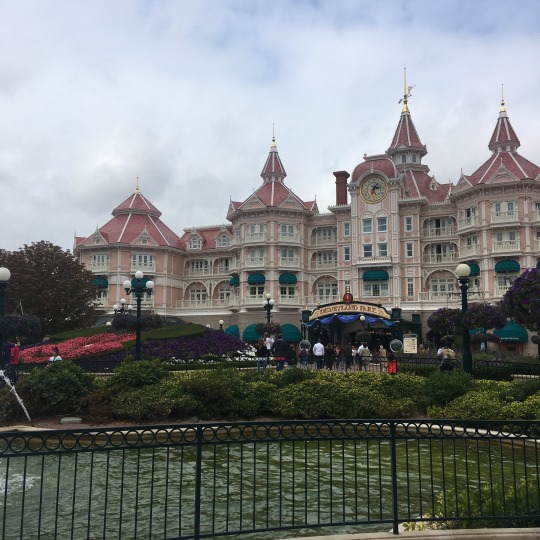
I mean, we didn’t got there this time and technically, it’s not Paris. But come on, it’s Disney. I couldn’t leave it off the list.
Future Paris Bucket List:
Moulin Rouge
Musee d’Orangerie
Jardin du Luxembourg
Louvre Highlights Tour
Louis Vuitton Foundation
Paris Museum of Modern Art
Get dinner in Trocadero
Centre Pompidou
Paris Catacombs
Amsterdam, The Netherlands

Amsterdam is one of my favourite places ever. It’s picturesque, easy to find your way around, and full of amazing food. It was my second time here and my friend’s third so we had a pretty chilled out time but still did a lot. I definitely wouldn’t say no to going back again.
The Hostel
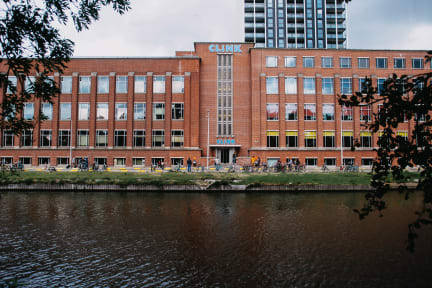

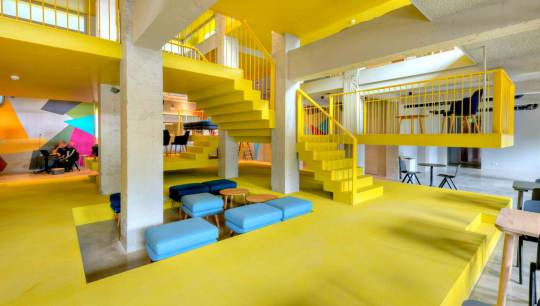
The hostel we stayed in in Amsterdam was called ClinkNoord and was a short (and free!) boat ride away from the city centre. Also at around £30 a night, the rooms were basic yet comfortable and the place as a whole had a modern, utilitarian vibe to it which I really liked. The bathrooms were a short walk down the hall, a more private alternative to the bathrooms in our Paris hostel, and were pretty much always free. As for the showers, they were a wet room kinda situation and a little bit grim at times but as long as you bring flip flops (I didn’t, another example of dumbassery, lol) you’ll be fine. Maybe this is the 10 year old in me leaping out but I really loved the bar area at this hostel too: drinks were cheap, but more importantly, it had table football, pool, AND a ping-pong room. WITH A BLACK LIGHT MIGHT I ADD!
Amsterdam Top Things to do:
1. Electric Ladyland
The edibles had already began to kick in a little bit by the time we got to Electric Ladyland so this might be a bit of an overstatement but this place was, in a good way of course, very trippy. It’s basically a mini fluorescent art museum and exhibition in this guy’s basement (not as weird as it sounds, lol), and for £5 you can go in and see it and then, if you hang around, watch him give a demonstration on how it all works and where he sourced his paint from. It says on the website that it’s by appointment only but we just turned up on the day just as a slot was about to start and were allowed in. In terms of taking an edible before you go in, maybe don’t, lol. It was a bit of a surreal experience; in a very dark room, listening to an old American hippy talk about how he explored caves in Utah to find mineral rocks, the weed-induced paranoia low-key kicked in. I did, at points, momentarily forget that there was a room around the point I was immediately focussed on and started panicking that we were just drifting through space. And then there was the occasional fear that I was trapped in some kind of eternal time loop where the man would just keep on talking in circles and I would be stuck down there forever, not wanting to be rude and leave whilst he was mid-sentence, as part of the universe’s karmic punishment for my impractical level of politeness and need to people-please. Climbing the ladder up out of the basement was...a little tricky, to say the least.
2. Pancake House

You have to have pancakes in Amsterdam and my friend recommended this place as the original one. I had a pancake with ice cream, caramel sauce and chocolate sauce and whilst a little sickly, it was tasty af. If I went again, I think I’d just stick to one sauce; it was so sweet that I had to admit defeat about halfway, something I do not look back on with pride. Next time, I will be victorious over one of these beasts of a pancake. Speaking it into existence.
3. Hire a bike and visit Vondelpark
There are plenty of ways to get about in Amsterdam and the trams are super easy to use but hiring a bike for the time you’re there is probably the cheapest and most Amsterdammy (I know, not really a word) way to get around. We hired our bikes from Starbikes by the central station and it was a very simple and affordable process which I would definitely recommend; their shop has some of the best reviews on Trip Advisor for bike hire. Riding along the canals is quite chilled but if you’re not super confident, the best place to go is probably Vondelpark, as it has wider lanes with the added bonus of not living in semi-permanent fear of being yeeted off your bike into the canal by a car coming up behind you. It also has friendly ducks! How can you say no to that? I mean, ignoring the fact that male ducks have like, 9 inch corkscrew penises which apparently spin when they mate. Thank Reddit for that life-altering and mildly disturbing piece of information.
4. Mannekin chips

The BEST Belgian fries which I spent the entirety of the rest of our trip craving. Best sauce combination is ketchup and samurai sauce, and I recommend going for a regular portion. The large is insane and I am very much in awe of anybody who can finish it.
5. Van Gogh Museum
We didn’t actually visit the Van Gogh museum on this trip but I went on my first visit to Amsterdam and you really can’t miss it. Not only does it have a lot of Van Gogh’s most famous works, including sunflowers, it has a lot of the work of the artists who inspired him as well as pieces from some of his contemporaries.
7. Stedelijk

Really cool modern art museum with an interactive room where you can take part in activities relating to the current exhibition too. Though I guess it really depends on your art preferences, if you do only have time to do either this or The Rijksmuseum, I would definitely say Stedelijk.
8. The Rookies Coffeeshop
So I can’t say I’ve tried a lot of the coffee shops in Amsterdam as on our first visit we only really went to this one and The Bulldog chain, and this time we didn’t go as much, but they do the best space cakes. They’re genuinely really tasty but they can be quite intense if you haven’t smoked in a while or don’t do so regularly so make sure you’re in somewhere you feel safe and have other people with you.
9. Amsterdam Dungeons
Though the Amsterdam Dungeons were more similar to the London Dungeons than I thought they would be, with less of a focus on the dark history of the area and more on general dark European history such as the Spanish Inquisition and witch trials which also came up a lot in the London run through, I would still thoroughly recommend them. The Dungeons are definitely a tourist trap but they’re also just hilarious and you genuinely do learn a little, so I think worth the money!
10. The Blonds Cafe
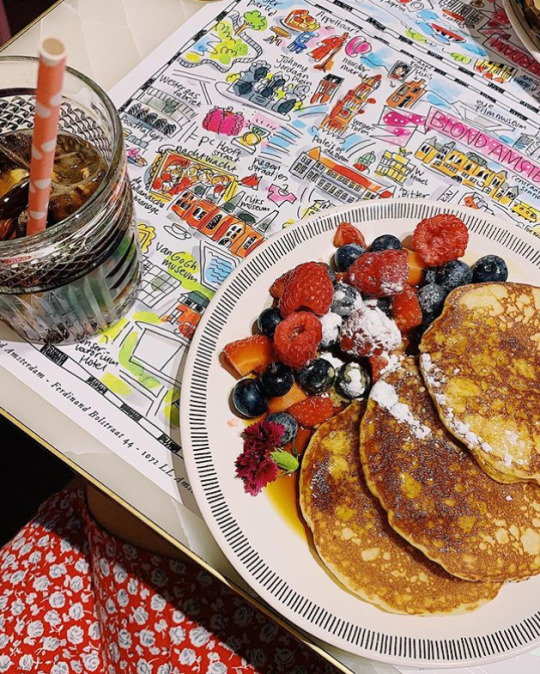
I wasn’t crazy about the menu here as I’m a ridiculously fussy eater but I think most people will easily find something they like, and the actual cafe and presentation is really cute. The grilled cheese sandwich I ended up having was really good and even if you end up just having a cake, I’d recommend it. They had lemon AND mint infused water dispensers, which, now I’m writing down doesn’t seem very exciting at all, but I got hyped up, okay? And worst case scenario, it’s not for you, there are loads of other cool and very hipster-y looking (lol) independent cafes in the area.
11. Anne Frank House
Again, this was something I did on my first trip to Amsterdam, but you can’t miss it. From a history standpoint and as someone who read Anne Frank’s diary several times when I was younger, I found it very surreal to actually visit the house I’d heard so much about. You definitely get a sense of just how stifling and claustrophobic living in that annex was and even if you’re not into your history, I do think a lot of insight can be gained from taking a trip here!
12. Go to one of the Pastry Shops
If you go to Amsterdam, you’ll see them everywhere, the little slightly shabby-looking cafes with all the amazing waffles and donuts and crepes and cupcakes in the window. Go to one! I had a waffle covered in white chocolate and Oreos and it was 1000% as good as it looked.
13. Moco Museum
The last thing on my Amsterdam list and another thing we did on my first trip, the Moco Museum is one of my favourites I’ve ever been to. It’s pretty small and doesn’t take you that long to look around but it’s full of contemporary, provocative art based around the theme of political and social commentary. Given that description, it’s probably no surprise that it houses a lot of Banksy, but there’s also a fair bit of pop art too, and a very cool gift shop. Because I can never resist a good gift shop.
Future Amsterdam Bucket List:
A day trip to the tulip fields
De Poezenboot
Eye Film Museum
Swing at A’dam lookout
Canal Cruise
Berlin, Germany
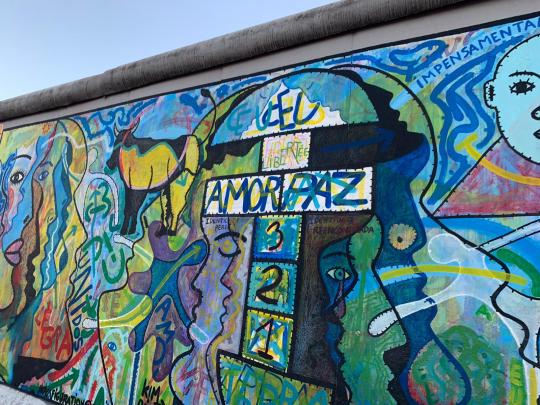
Berlin definitely wasn’t what I was expecting it to be. As a capital city, I expected it to be this very built up, bustling, commercial place, but it was actually pretty quiet and very spread out. In a way, it almost seemed a bit left behind and completely deserted in parts. That being said, from a historical point of view, it was probably the most interesting place that we went. It’s easy to forget that just a few decades ago the city was completely divided and you can definitely sense that it’s still rebuilding itself.
The Hostel

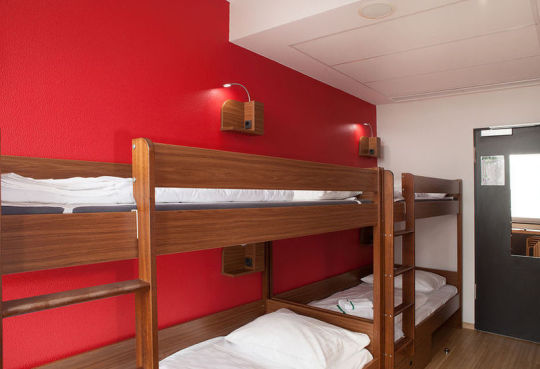
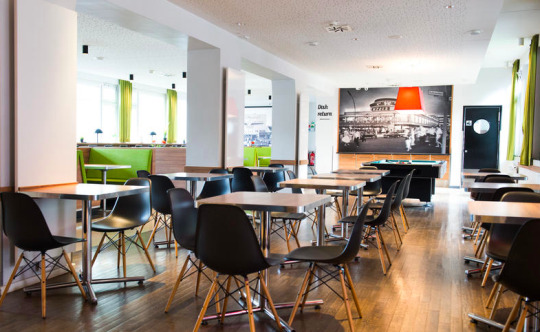
We stayed in a hostel that was tucked away in the basement of the Aletto hotel, just a minute’s walk away from the Zoologischer Garden station. I believe it was around £20 a night for an 8 person mixed dorm. The beds weren’t the comfiest and the room itself was a bit dark and dank, given that it was below street level, but all in all, the hostel was decent as a stop-off point. I liked that there was a kind of a small communal area in the kitchen and the bathrooms were spacious and clean, and fortunately, it was pretty quiet when we were there so we usually had them to ourselves.
Berlin Top Things to do:
1. Never Ending Love Story

A really lovely little cafe in a pretty, quiet area, the service here was exceptionally good! I’m not one to complain when workers don’t seem overly enthusiastic, I work in retail so I get that you sometimes can’t be arsed with all the over-the-top politeness, but I do appreciate friendliness and the waitress here was so sweet. I had delicious scrambled eggs on sourdough toast and my friend had pancakes and we both really enjoyed our food.
2. East Side Gallery

I wish I had more to say about the East Side Gallery, but to be honest I was pretty drunk and had half an edible-I thought we were going out out after, don’t judge me-so I can’t remember much. Judging from my very shitty and my friend’s very good (this is one of hers, lol) photos though, it was really interesting. Good street art is up there with the best of them imo and given the context of the gallery, it’s no surprise that a lot of the art is politically charged, which just adds an extra layer of appeal to it. There’s also a lot of good photo ops, or so drunk me clearly thought.
3. Topography of Terror
Built on top of the former SS Reich Main Security Office, the Topography of Terror is a museum I’d say you need to set aside at least 2 and a half/3 hours for to properly do. There’s so much information to get through and I’d say I ended up skimming half of it towards the end because we were short on time; I later found out that there’s even more to see outside which we didn’t even touch.
4. Jewish Museum
Unfortunately, a lot of the Jewish Museum was closed when we went but it’s still a very physically impressive building with exhibitions that are equal parts daunting and thought-provoking, relating to both the Jewish experience during the Second World War and Jewish culture in general.
5. Museum Island
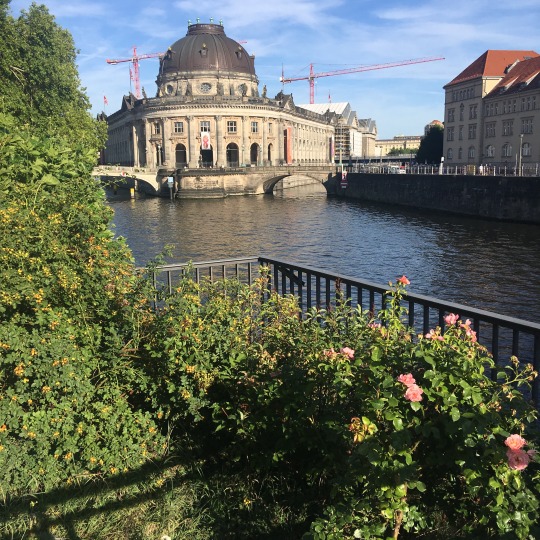
We didn’t actually go in any of the museums on Museum Island but we walked around and sat at a nice little green spot nearby; t’s very pretty to explore, especially as the sun is going down. There were plenty of bars around and people drinking, sunbathing and listening to music by the river. Generally a really relaxed vibe.
6. Fritzies
I know dirty fries aren’t the classiest thing ever but the ones from this place tasted really fucking good. How can you go wrong with a fast food restaurant dedicated to chips?
7. The History: Brandenberg Gate, Reichstag, Checkpoint Charlie, Hitler’s Bunker, Jewish Memorial

Most of these places are within walking distance of each other and we did them all within a couple of hours. Like I said, the best thing about Berlin is the history so I think making an effort to see all these things is really important. On our last night we managed to find out, via a nearby poster, about a free show on the river (with English subtitles obviously; as the basic monolingual bitch I am, anything other than dankeschön and hallo went right over my head) which covered major points in the history of the Reichstag over the last century; it was the perfect way to round off our trip.
8. KW Institute for Contemporary Art
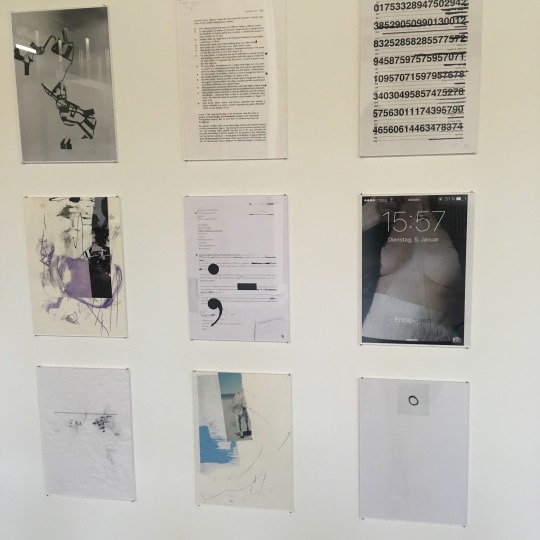
This museum was half the overly pretentious contemporary art that makes classicists roll their eyes:
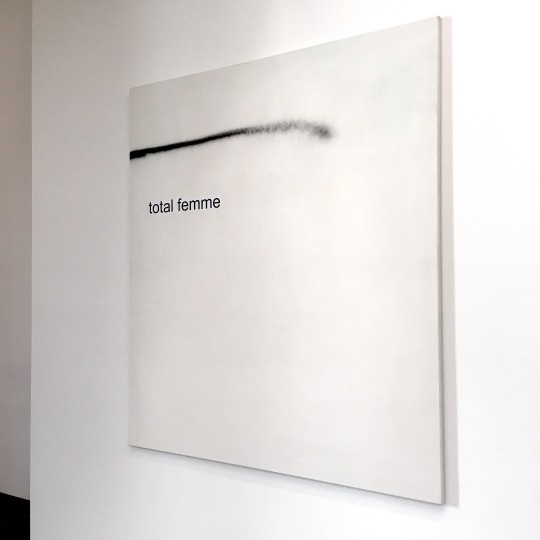
-though I do actually like it, sue me-
And half the simple, but millennially-inspired kinda stuff that I love. Like, that top collection got me feeling like the new Van Gogh every time I accidentally screenshot my home screen.
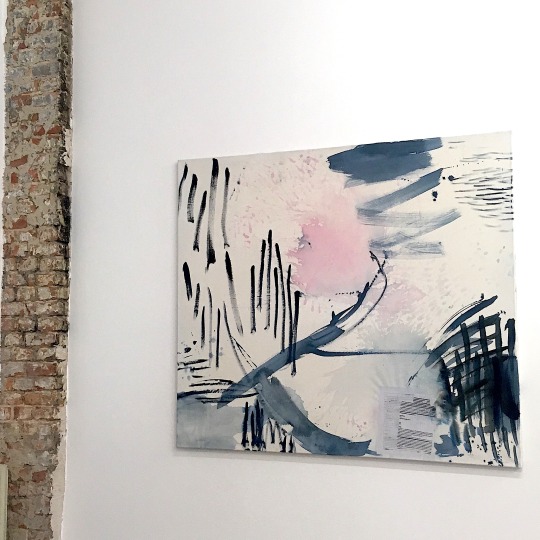
So obviously, I rated it. And side-note, the building in general, which had an old, unused warehouse kinda thing going on, along with a shady little courtyard outside, was very cool.
9. Pizza Nostra

Look at this photo. Do I need to say any more?
Future Berlin Bucket List:
Historical River Cruise
Return to the Jewish Museum
The Story of Berlin Museum
Berghain (even just to see it from the outside)
About Blank, Suicide Circus, i.e one of the tamer, more mainstream clubs
Anne Frank Zentrum
Hackescher Hof
Oranienburger Strasse and Kunsthaus Tacheles
Prague, Czech Republic
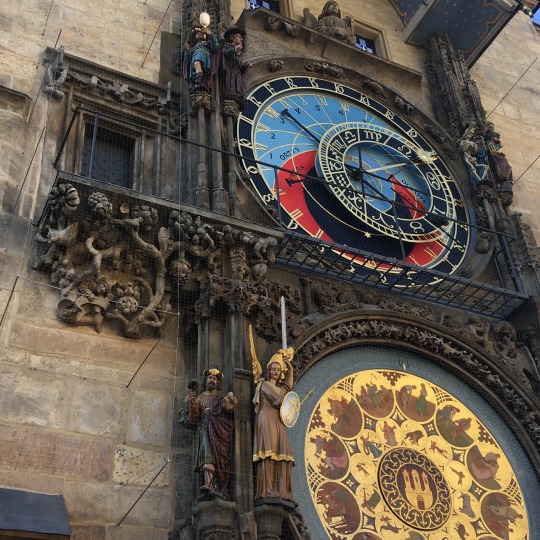
I absolutely adored Prague. From the second I stepped out of the metro station into Old Town Square on our first evening, I felt like I was walking into a fairytale. All the buildings were so ornate and beautiful, everywhere you look is like a postcard. There’s so much history there which we only really had time to scrape the surface of and I can’t wait to go back.
The Hostel
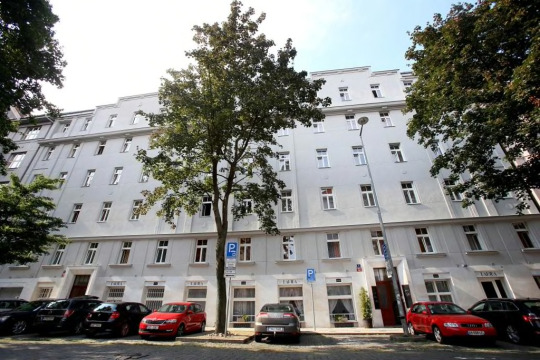

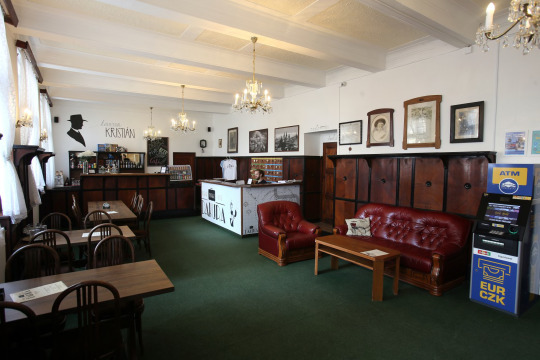
We stayed at Hostel Dakura which was only around £15 a night and a few metro stops from the city centre. As you can see, it’s a little outdated but all in all, still clean and comfortable. The dorm and bathrooms were very spacious and there was an outdoor seating area with benches and ping-pong too. I’d definitely say it was good value for money.
Prague Top Things to do:
1. Explore Old Town
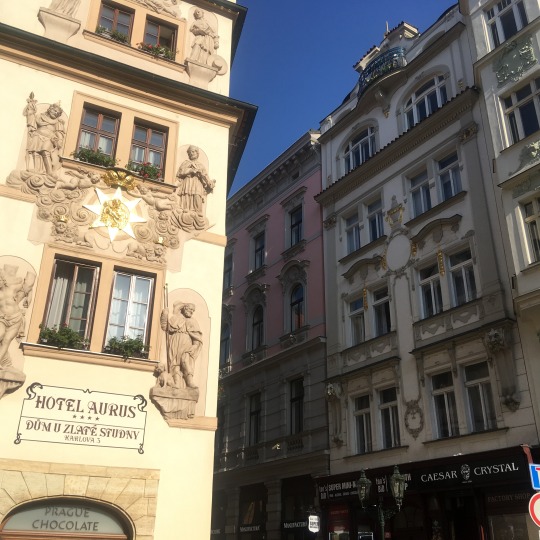
The Old Town part of Prague is definitely the main attraction, from the cute and very typically European seating areas outside the restaurants, to the Trdelnik shops, to the gothic statues, and the colourful buildings that surround them; you'll feel like you’re walking through a mix between a shopping mall and a medieval time capsule. There’s not really all that much point me putting Old Town on the must-do list as it’s pretty much unavoidable but I liked it so much I just couldn’t leave it out. I really haven’t been anywhere like it before. It’s part Westeros, part Fantasyland at Disney (with some stag dos thrown in), and that’s saying something; Disney World comparisons do not come easy from me.
2. Letna Hill
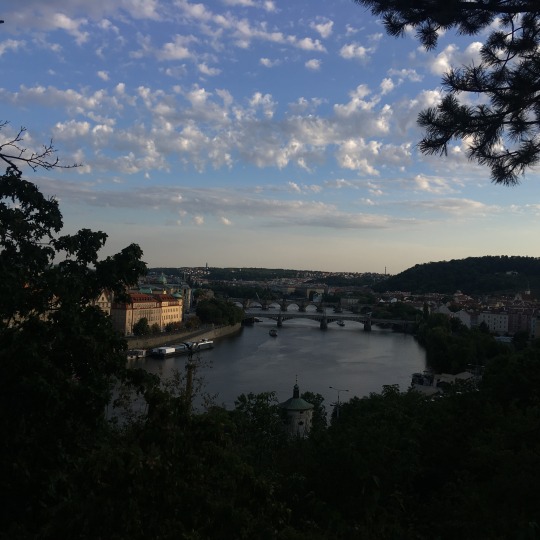
A bit of a steep walk uphill but totally worth it for the view of the city. Lots of cool bars and places to get cheap beer and cider too, if that’s your kinda thing. Spirits, to my dismay, are pretty much the same price as they are back home. Not that it was on Letna Hill but I paid €20 for 2 doubles one night. €20. PRAGUE IS CHEAP FOR ALCOHOL, THEY SAID. YOU CAN GET PISSED FOR A TENNER, THEY SAID. IT’LL BE FUN, THEY SAID. Sigh.
PROTIP: Make sure you have cash on you, especially if you’re heading up Letna Hill, as they don’t take card at any of the bars and there aren’t any cash machines. There also aren’t any water fountains and the tap water isn’t drinkable, apparently. You know what there are, though? Rats.
I’m going to stop before I put anyone off. Our experience wasn’t the best but done right, I think you could have a really chilled evening here. Go to Letna Hill. It’s lovely.
3. Prague Castle

Also a bit of an uphill walk, Prague Castle is a gothic dream with live music, tantalising food stalls (hehe, tantalising, somebody hire me to write their cookbook ASAP) and insane views. Half the time I felt like I was in King’s Landing and the other half Hogwarts, and that is the kind of 50/50 split I live for.
4. Walk across Charles Bridge and walk alongside the Vltava River
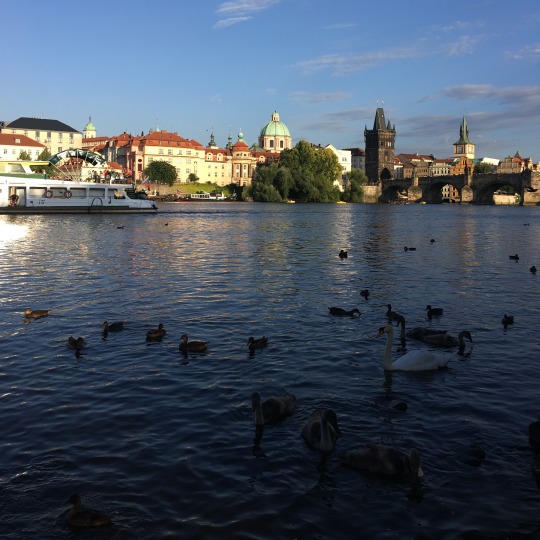
I thought our day peaked when I came to the realisation, whilst crossing the Charles Bridge, that we were in fact surrounded by vaguely religious and mildly creepy Jesus-looking statues but then we reached the other side and soon after, became one with nature. We saw ducks! Otters. Swans. Inject that wholesome shit into my veins.
Also, a pigeon landed on me! That’s right, if you stand there with your arm out for long enough whilst walking alongside the Vltava River, you too can experience the fleeting terror that comes with the possibility of being pooed on but then the earth-shattering realisation that comes after: that pigeons, maybe, aren’t so bad after all. That they’re actually kinda cute in their own weird, scavenging way! That maybe the pigeon lady in Mary Poppins made some points! I mean, can’t we all relate to wanting to steal other people’s food? I definitely can. Consider me a changed woman.
5. GOAP Museum

Though I’m not much of a Salvador Dali fan and I have a sneaking suspicion that some of the “artwork” in this museum was actually just prints from google blown up on A2 photo paper, I thoroughly enjoyed the Alphonse Mucha and Andy Warhol sections of the GOAP.

-Untitled Salvador Dali-
The former is one of my absolute favourite artists so I definitely had to take a moment when I walked in and saw that not only did they have several of his original lithographs, but also a whole wall dedicated to him. I wish I had good photos but the lighting was a bit too artificial to really do it justice. The lithographs came out pretty well though:

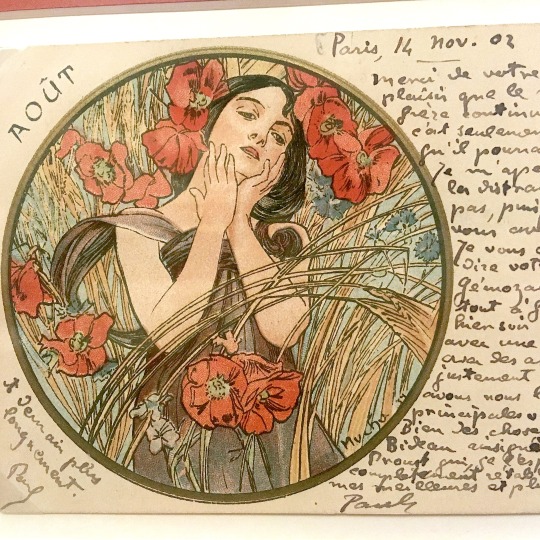
Obviously Andy Warhol is an icon too; his exhibition in particular was hugely informative and well laid out, definitely a people pleaser. I couldn’t find all too much online but it seems like the exhibitions mentioned are permanent, so definitely go and check them out.
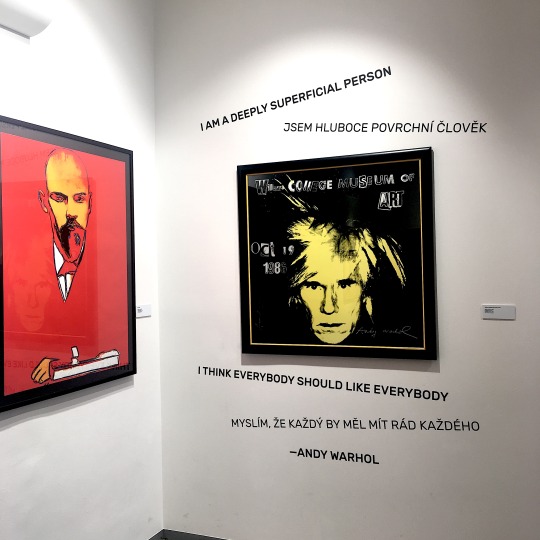
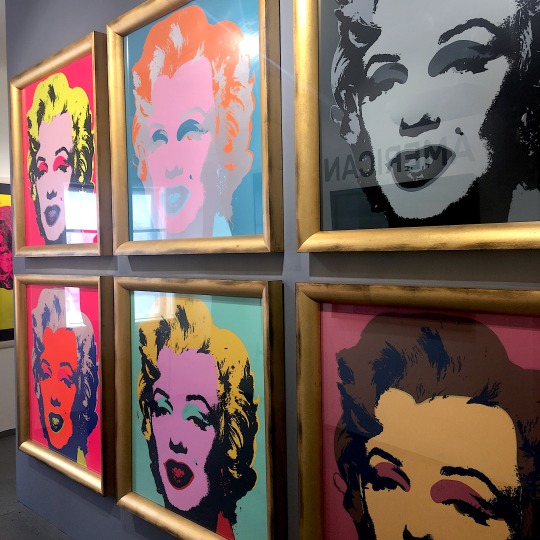
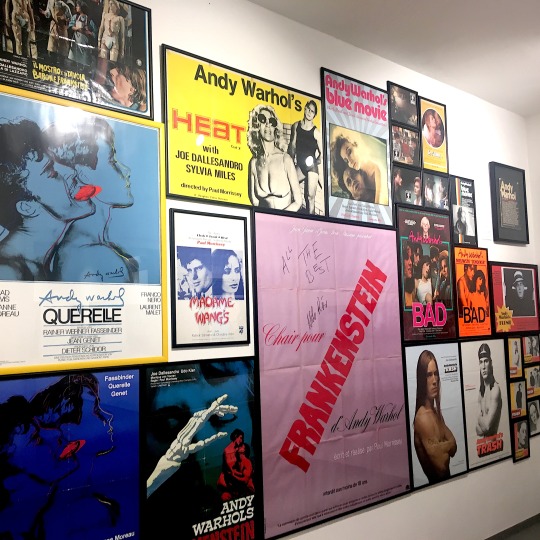
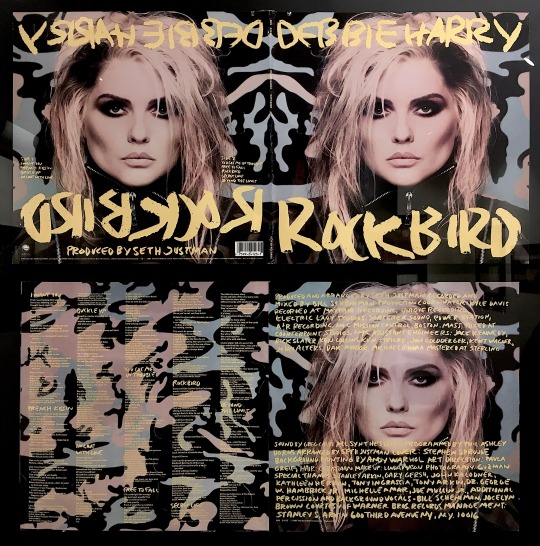
I also feel the need to mention that it was here I ascended to an elite level of art hoe by buying a Mucha lighter. Jokes on me because it doesn’t work very well, like...at all in anything windier than a very, very mild breeze, BUT it looks pretty, so points for that.
6. Cafe Chloe
Seeing the size of the queue outside Elan Cafe in London, it kinda blew my mind that considering its flower wall, you could just walk into Cafe Chloe and get a table straight away. Obviously the flower wall is a draw for Instagram purposes (yes, I’m a shallow human being, *insert Ariana Grande “and what about it?” gif here*) but the food was really good too. The perfect place to stop off for brunch.
7. Pedalos
Again, the pedalos under Charles Bridge are kind of a tourist trap but it was only around €12 between us to rent one for the hour; most of them appeared to be 4 seaters so you could get 2 more people in there and split the price again, making it even cheaper. Plus, it was really fun and we got to go right up to the ducks!
8. Karlovy Lazne
I’m not gonna lie, tackiness aside, I love a club with multiple rooms and this one had FIVE. There were a lot of English people in there and it did cost about 12 euros in cash to get in (take the cash out in advance as the machine outside charged quite a steep fee), but they played ABBA on more than one occasion so I have zero regrets. I mean, apart from drinking maybe a bit too much once again, but that’s kind of a given at this point. I can only apologise to my liver and what’s left of my dignity.
9. Joy Burger
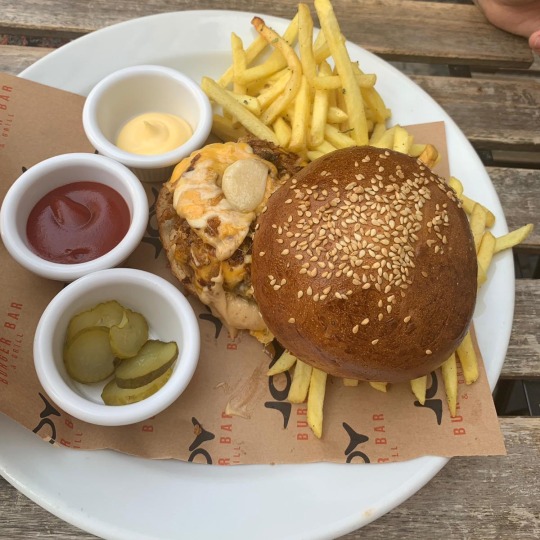
NGL, the service here wasn’t the best and I kind of felt like I was annoying some of the staff literally just by trying to order my food BUT to be fair, I’d probably be annoyed by me too considering my upholding of the British tradition of asking everywhere if they speak English and hoping for the best rather than actually learning the native language. Anyway, back to the point: look at this burger. Fit. 10/10 would demolish again.
Future Prague Bucket List:
Museum Kampa
Petrin Hill
One of the free city walking tours
Pub crawl
Vienna, Austria
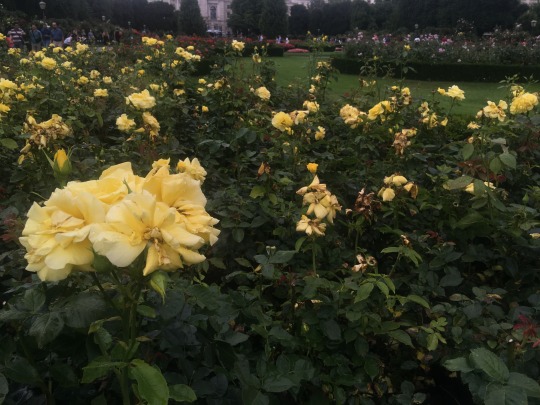
Honestly, of all the places we went to, Vienna was the one I was most pleasantly surprised by. Before going, I’d heard that there wasn’t much to do there and I thought that 24 hours would be more than enough to see the main attractions, but aside from Paris, it’s probably the city I want to revisit most. On every other block there seemed to be some kind of beautiful flower garden or sprawling palace or stately home or elegant cafe, but at the same time, it still had a very modern feel to it. A lot like Paris but more compact, and with a slightly Germanic twist. Plus, I had one of the best Maccies of my life here, so I really can’t complain.
The Hostel
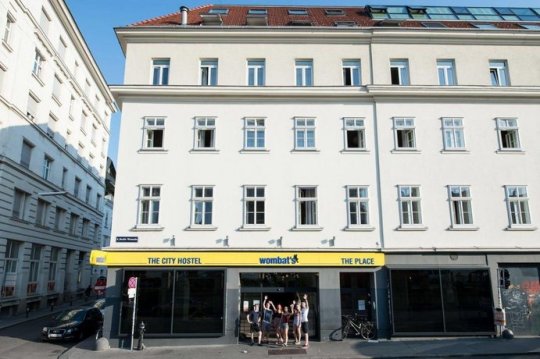

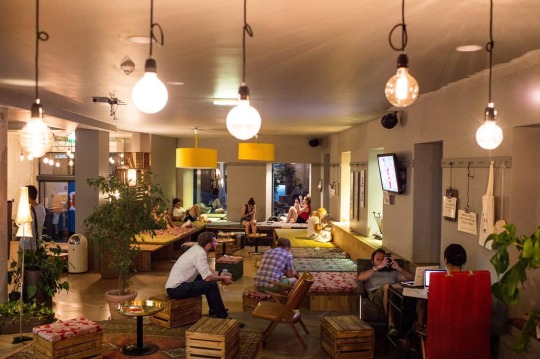
For around £18 for the night we stayed in a 6 person dorm at the Wombats Hostel by Naschmarkt. Because we weren’t there too long, I didn’t get all that much of a feel for it but the communal areas and bar seemed very cool and the central part of the city was in walking distance. The dorms were a little small and outdated and we did get woken up by a fire alarm in the middle of the night but it gave me a kind of primary school trip type nostalgia so I didn’t mind too much. I’d probably look for another hostel if I went back to Vienna just because I think if you were staying for a while, you'd start to feel a bit cooped up in the room. For the one night, however, it was ideal.
Vienna Top Things to do:
1. Museum Quartier

We really only walked through Museum Quartier but there seemed to be loads going on and definitely lots to look at. There’s also a giant astroturf covered waterbed which sounds kinda wack but was actually super fun when I wasn’t fearing my head was going to be squashed like a watermelon by the kids quite literally throwing themselves around on it. So yeah! Check it out!
2. The Traffic Lights

It sounds silly but the traffic lights in the central part of Vienna are super cute. Have a stroll around and see how many of them you can spot. Berlin’s Ampelmann wishes.
3. Belvedere Palace Grounds
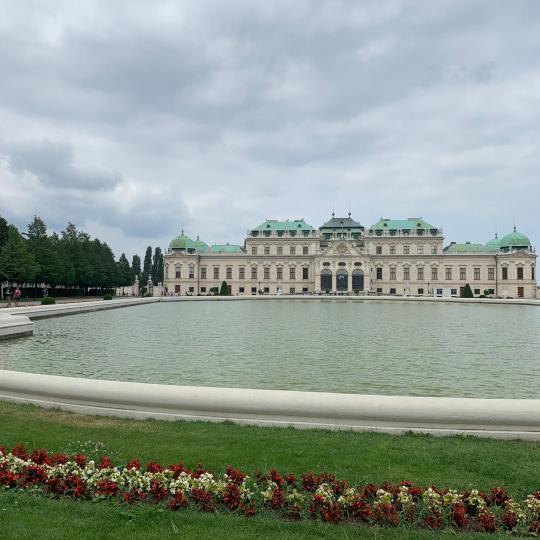
Boujie.
4. Schonbrunn Palace Grounds
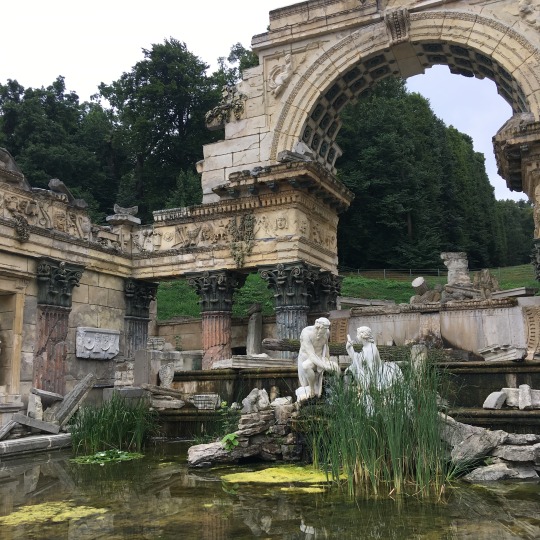
Even boujier.
5. Volksgarten
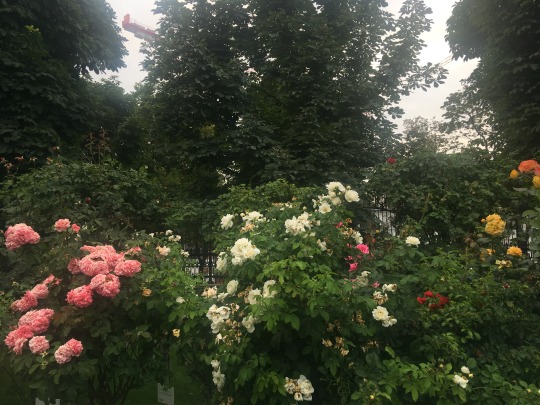
I really felt like I was walking through the Red Queen’s gardens. Minus the crochet and threat of decapitation of course.
6. Max and Benito
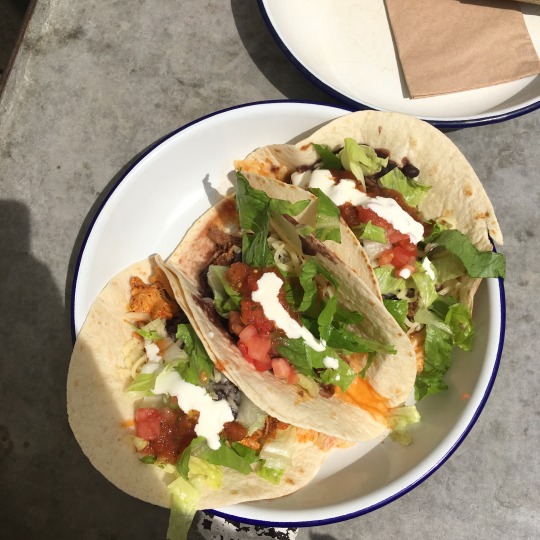
SO GOOD. And a really funky seating area outside too. Probably best for a quick lunch and I also imagine would make great drunk food if you need an excuse to day drink.
Future Vienna Bucket List:
Natural History Museum of Vienna
Wien Museum
Leopold Museum
Belvedere Museum of Contemporary Art
Cafe hopping
Further explore MuseumQuartier
Naschmarkt
Budapest, Hungary
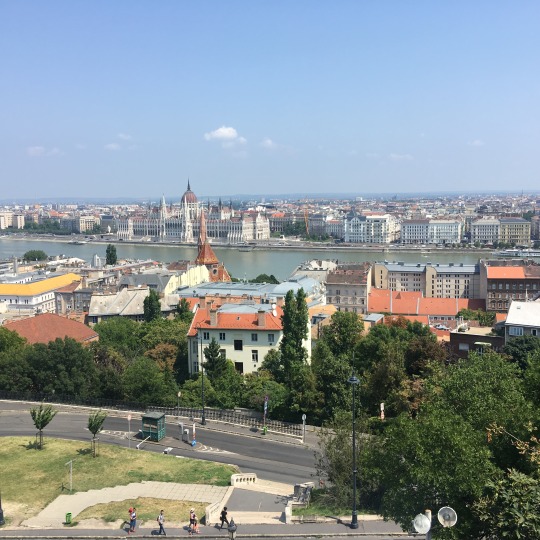
It might be an unpopular opinion but I didn’t adore Budapest as a city. To be honest, my expectations were probably slightly too high as I’d heard so many people rave about it. I can see why people like it so much: there’s loads of great places to eat, drinks are cheap, and ruin bars are very cool. My issue was just that I thought there’d be more to do in terms of daytime activities. The one art museum we went to was completely deserted and there didn’t seem to be as many historical places to explore as in some of the other cities we visited. Of course it’s all a matter of personal preference and I might have just not done enough research/planned enough, plus that’s still not to say I didn’t have a good time. We had some lovely chilled out days and the city kind of comes alive in a different way in the evening; the boat party we went to was by far the best night out we had throughout our trip and I had some insanely delicious food. We also hired an Air B&B here for about half the price of some of the hostels we stayed in, and so got to actually settle down and spread our stuff out for a few days; something that was much needed after living out of lockers for 2 weeks.
Budapest Top Things to do:
1. Mr.Funk’s

Look at this bad boy and tell me you don’t want to go to Mr.Funk’s and try one of their freakshakes. Tell me that freakshakes being banned in the UK wasn’t a devastating miscarriage of justice and an attack on my human rights. Tell me that I’m not a failure for leaving a donut behind. Pls. Validate me.
2. Street Food Karavan

Street Food Karavan is such a cool little spot with so many delicious looking food stalls, I honestly could’ve eaten there for breakfast, lunch and dinner every day. Plus loads of vegan and veggie options too.
3. Boat Party
I believe we booked our night through budapestboatparty.com and honestly it was so fun and such good value for money. It may have partly been down to the alcohol and the edible I had before, lol, but everything felt so surreal; I spent 90% of the event just being amazed by how beautiful our surroundings were and the combination of the breeze and the scenery and the music made for the absolute best atmosphere. Everyone we spoke to was so friendly and if I went back I’d love to do it again, maybe slightly more sober (unlikely) so I can take even more of it in. That being said, bear in mind that these kind of things can probably be a bit hit or miss. The friend that recommended the boat party told me that she spent the first half of the event avoiding being hit on by men twice her age, so clearly it depends a lot on the company, lol!
4. Kiosk
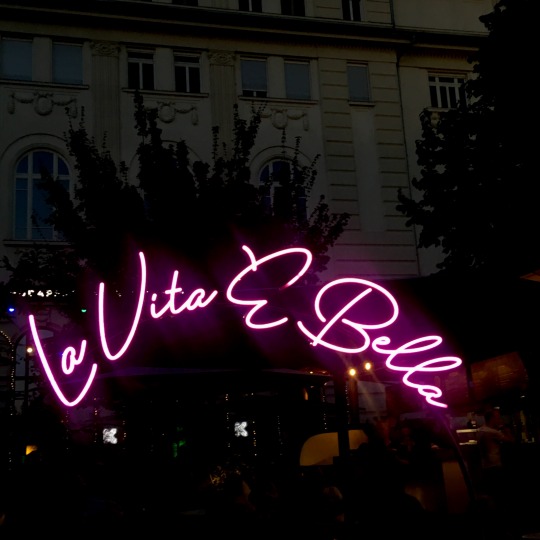
We didn’t actually have proper meals at Kiosk but we did find some deck chairs to sit on whilst we ate ice cream from one of the stalls they were running outside. The restaurant itself was inside but the outdoor seating had a stunning view of the sunset and the river and the area in general was really buzzing.
5. Shoes on the Danube

It’s a simple monument but the story behind the Shoes on the Danube makes it one of the most important things to see in Budapest.
6. Szechenyi Baths
Before we actually went into the baths, I was a bit grossed out. Like, it sounded great in theory but then we got there and I realised we were about to step into what is essentially a steaming pit of bodily fluids. BUT, put that minute, mildly repugnant detail aside and you’ll have a brilliant time. Start with the whirlpool in the outdoor area and by the time you’ve done that, you’ll be feeling wild enough to bath and sauna hop to your heart’s desire. Unless you are a real, compulsive germaphobe, pissing yourself at the sight of little kids and adults alike getting uncontrollably whisked around like a bunch of sweaty egg yolks is enough to make you put any (don’t get me wrong, warranted) hygiene concerns to one side. You can shower when you’re dead. That’s what they say, right?
7. Margaret Island
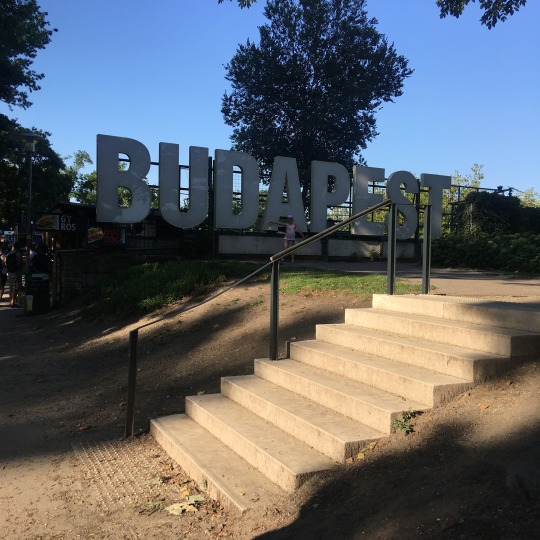
I think we had one of our most relaxed afternoons at Magaret Island, lying out on the grass by the dancing fountains; it’s definitely a great place to sunbathe, read, or grab a cheap alcoholic drink. There’s options for if you’re feeling more adventurous too: on our second visit there, we paid €10 between us to hire a pedal car for the hour and decided to cycle round the island. It was by the grace of god (or for the most part my friend’s very necessary backseat driving) that there was only one casualty of my steering. Angry Hungarian man, if you’re out there, I’m very sorry our pedal car almost knocked you off your bike. My bad. But yeah, my catastrophic attempt at doing the bare minimum physical activity aside, go and chill on Margaret Island. It’s super pretty.
8. Buda Castle and Fisherman’s Bastion
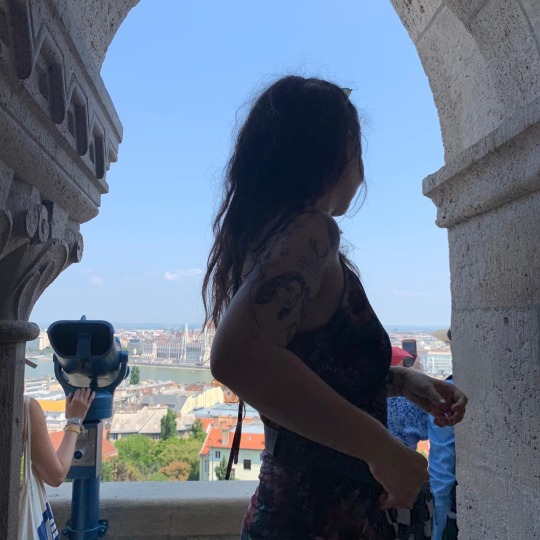
Just a heads up that we paid around €4 or €5 each to go up to the top of Castle Hill with one of the companies giving out flyers at the bottom, so have a look and see if you can find a better deal before paying to ride the funicular. Once we did get up there we could hop on and off, and the ticket included a ride down as well. In terms of what to expect when you get up there, spectacular views. Though I found the castle itself a bit disappointing, Fisherman’s Bastion was really beautiful and had some great photo spots. If I went back to Budapest, I’d probably spend more time in the area as I think that’s where a lot of the history actually is.
9. Szimpla Kert
Probably the most famous ruin bar in Budapest, I really loved Szimpla Kert. It was a bit chaotic and very crowded but the eccentric interiors and open air courtyard gave it an almost magical feel that only a tiny number of bars I’ve been to have anything on. Vaulty Towers and Bar Elba in Waterloo I’m looking at you. Missing you and your overpriced drinks always xoxo
10. House of Terror
The House of Terror was my only real history fix whilst we were in Budapest and I found it really interesting. In particular, I liked how all the visitors took sheets of information in each room to read in our own time rather than us all trying to crowd round one sign. The basement part of the museum is presumably the main draw, and I understand why given how unnerving it is, but I enjoyed the whole museum. Obviously there are things you have to take with a pinch of salt and (our Air B&B host warned in our welcome package that it was slightly biased; I couldn’t find much about public opinion of the museum online so if by the slim chance somebody who knows more is reading this please let me know! Educate me!), but at the same time, if just for walking through the site of the past atrocities, there is definitely something to be gleaned by visiting.
11. Parliament Building
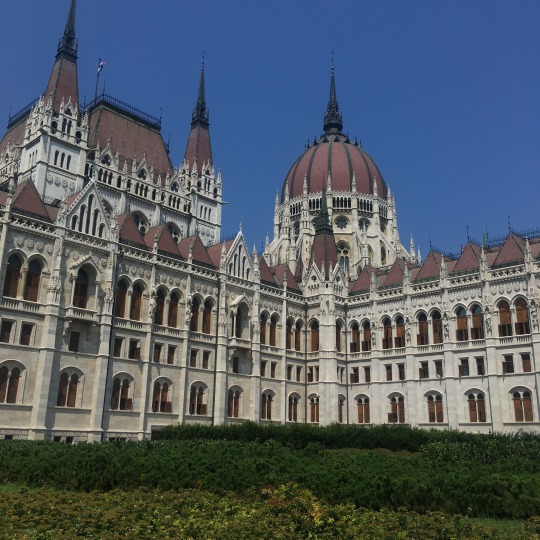
There was really no need for the Hungarian Parliamentary building to step on Westminter’s neck like that but...I guess she did what she had to do.
12. Ludwig Museum
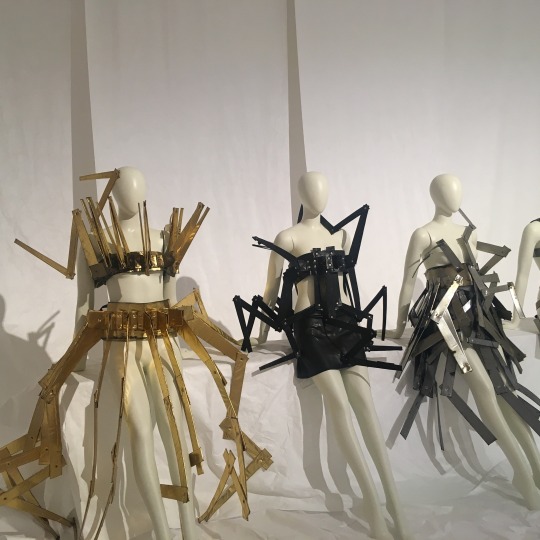
Like I mentioned, this museum was pretty deserted but they did have some cool contemporary art and in particular an exhibition dedicated to the fashion designer Kiraly Tamas which I really enjoyed. His are the pieces in the photo above!

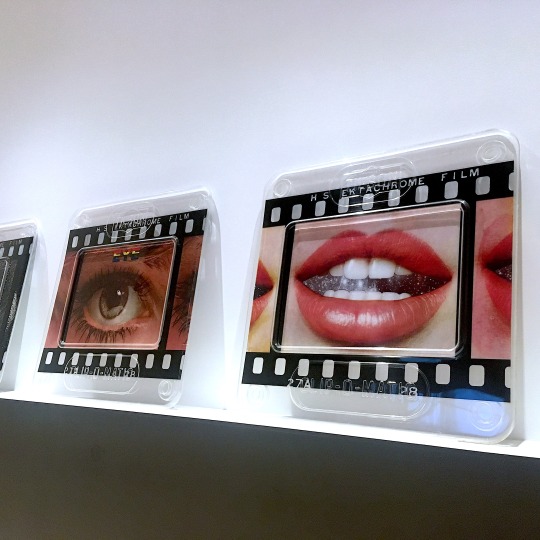
13. Donut Library
Oreo donuts. Need I say more?
14. La Fabbrica

A very boujie but surprisingly affordable Italian restaurant right opposite St.Stephen’s basilica (pictured), I had one of the many top tier spag bols on this trip here. The toilets are also stylish af and made me feel very much like a peasant so maybe wear something nice so you can get those good good HQ bathroom mirror pics. I was certainly not in any shape to do so. Those toilets were really wasted on my scruffy ass that day.
Future Budapest Bucket List:
The Hungarian National Gallery
Műcsarnok
Museum of Fine Arts
Budapest History Museum
Hungarian State Opera House
Flippermúzeum
Instant
Great Synagogue
Memento Park
Secret Walking Tour
Ljubljana, Slovenia

Though we mainly went to Ljubljana so that we could visit Lake Bled, it was still a very cute little area. Pretty small for a capital city but there were loads of day trips out from the centre and for the evenings, a whole range of lively bars and restaurants along the river.
The Hostel
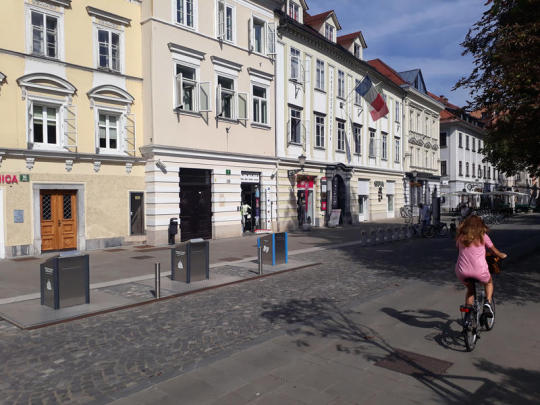

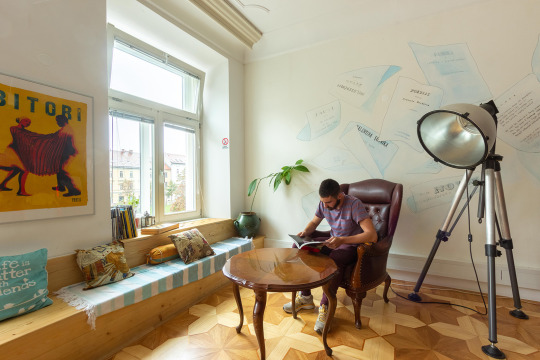
We stayed at Hostel Kva right in the city centre and paid around €20 a night. The hostel itself was lovely and kind of felt like more of a young people’s B&B than hostel; the communal area in particular had a very cosy, personal feel to it and the staff were incredibly friendly and helpful. That being said, the actual rooms were very small and I did feel pretty cramped whilst we were there, more so than in any of the other hostels we stayed at.
Ljubljana Top Things to do:
1. Meselkova Mesa
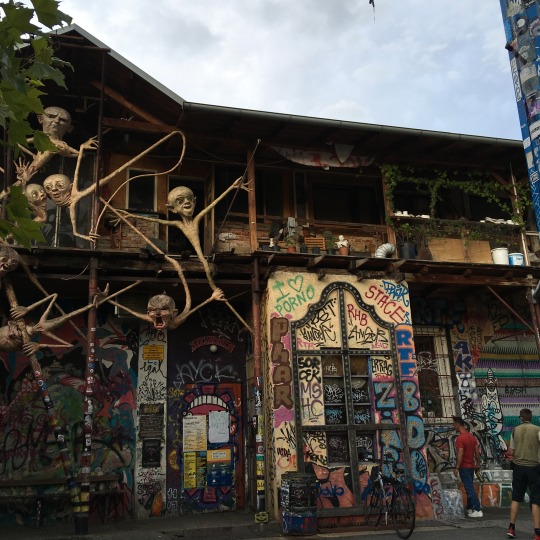
About a 15 minute walk from the city centre, Meselkova Mesa is a very interesting place. I'm not going to lie, I did feel a little on edge whilst we were there, lol; it was pretty deserted apart from a couple of men having a very loud argument. Nevertheless, there’s some very cool buildings and street art so if you’re in a group, check it out.
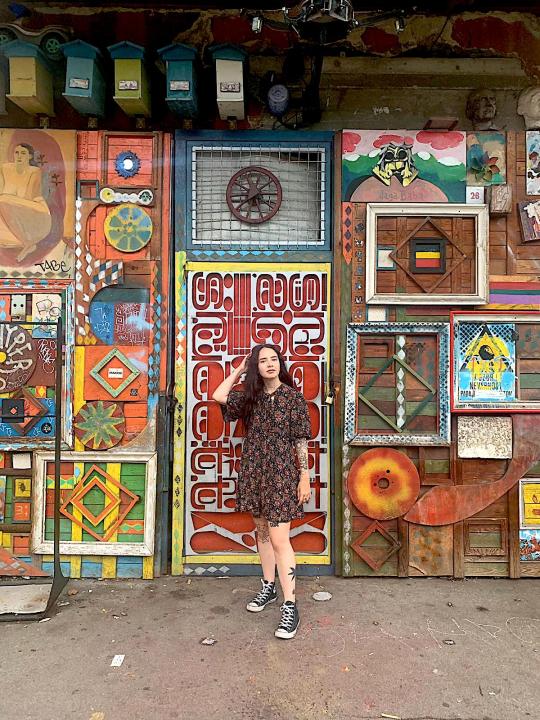
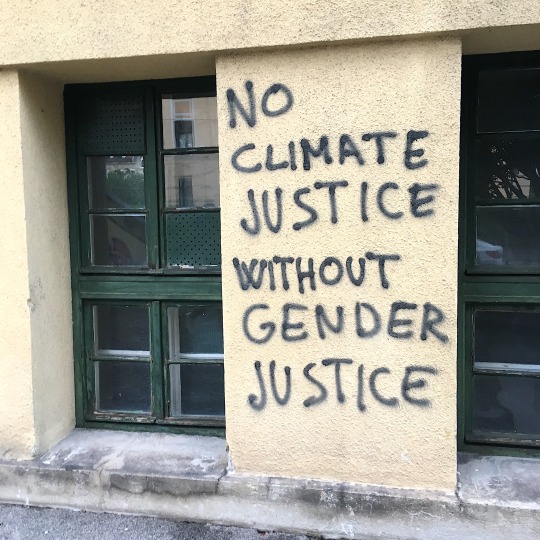
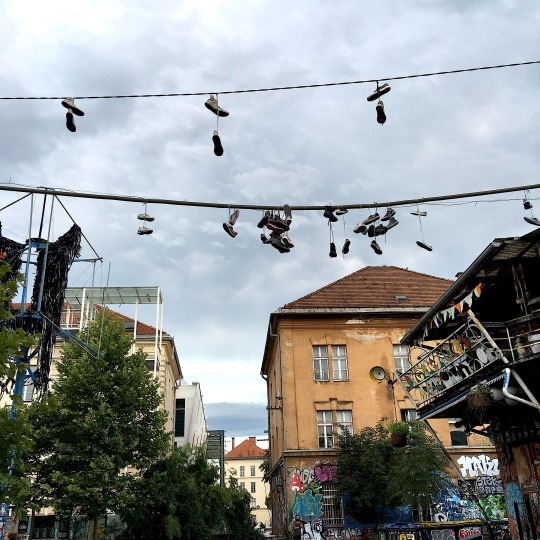
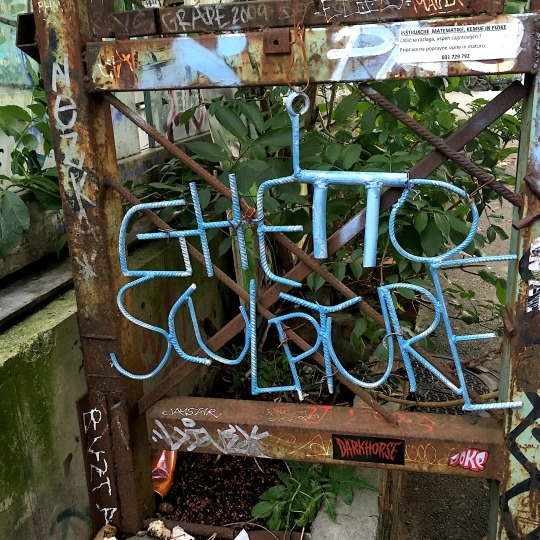

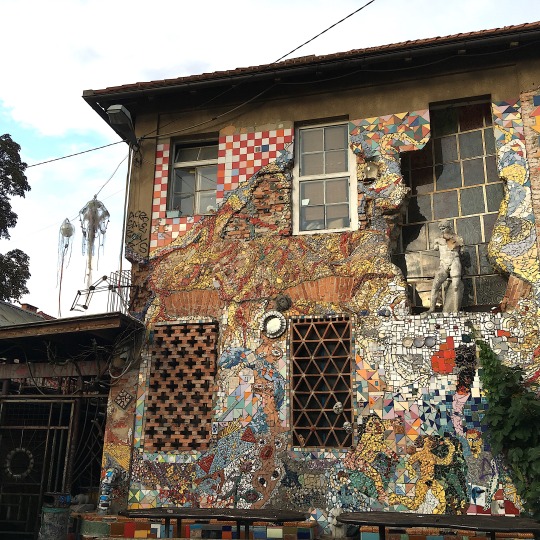
2. Lake Bled
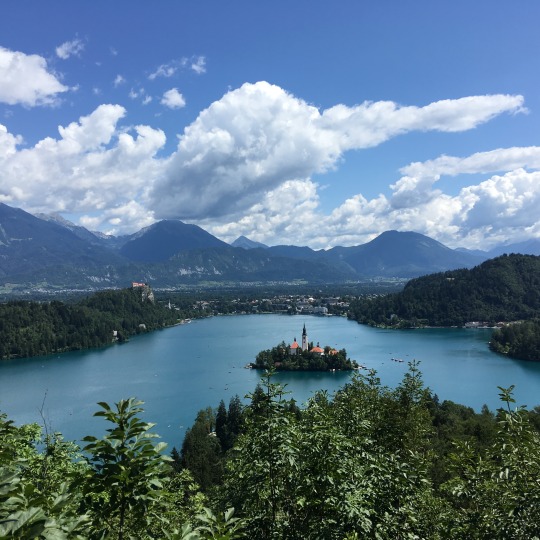
Our day trip to Lake Bled, a half hour coach journey from Ljubljana Station for IIRC €8 return, was one of my favourite things we did whilst inter-railing. Not only is it absolutely magnificent to look at but there’s so much to do that I feel like you could have your whole holiday there if you wanted to. Assault courses, hikes, swimming, water sports, rowing, tobogganing, chilling on the (yes, artificial) sand, whether you want to relax or thrill-seek, you’re going to have plenty to do.
3. Puffy

These mini pancakes were so good that I didn’t even notice the chocolate sauce was Nutella and that’s saying something because WHY DO THEY PUT IT ON EVERYTHING IN MAINLAND EUROPE!? PEOPLE WHO DON’T LIKE NUTELLA HAVE RIGHTS TOO!
4. Pop’s Place
The best burger of the entire trip, hands down, and the whole menu looked delicious. Would I fly to Ljubljana just to have another one? Probs.
5. Tivoli Park

A great place to sit down and read a book or go on a bike ride, or alternatively, if you’re me, awkwardly hide from a bunch of people from your hostel you irrationally believed were judging you earlier that day in the bathrooms.
6. Castle Walk
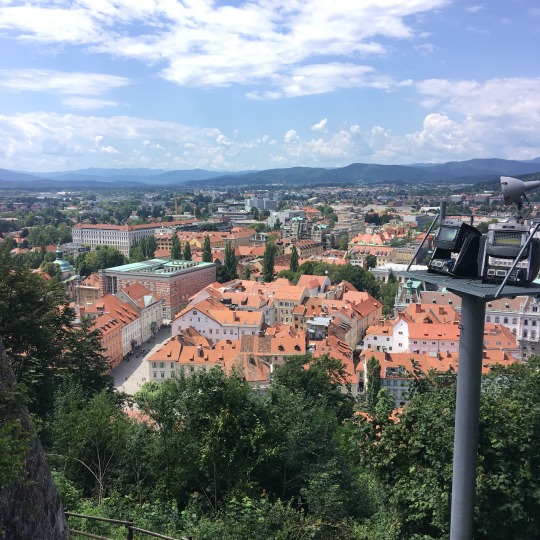
The uphill walk did kill me a little but I am mildly asthmatic so let’s put it down to that. Nothing to do with the fact I haven’t been to the gym in a year. Nothing at all. Anyways, the view was very pretty and though we didn’t go inside the castle, there’s apparently an escape room in there as well as a museum, a restaurant and a jazz club so definitely worth the minor hike.
7. Flower Market

If you go to the square where the food market is, by Dragon Bridge, you’ll find endless stalls of some of the most beautifully arranged flowers I’ve ever seen. It might be a seasonal thing, I’m not sure, but if you’re there in the summer, I’d recommend seeking the market out. They’re a very reasonable price and yes, I did specifically buy a sunflower for a photo op for 50 cent, guilty as charged. When vanity is that cheap I really can’t resist, lol.
8. Illusions Museum
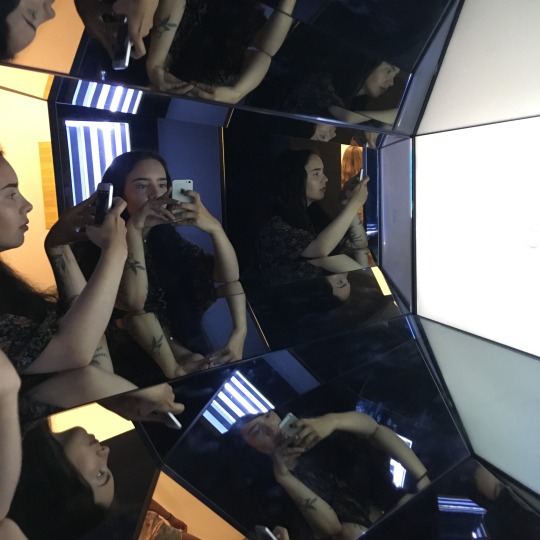
I would definitely recommend going with at least one other person to get the most out of the Illusions Museum and €10 is pretty pricey but if you want to get a cheesy oh-look-I’m-standing-on-the-ceiling photo, here is your best bet.
9. Grefino Frozen Yogurt
I’m not gonna lie, I don’t actually like frozen yogurt myself but I can appreciate good food when I see it and my friend’s portion looked FIT. Plus, I always get excited when anything’s make your own; there will always be a part of me that feels incomplete without regular trips to Pizza Hut to overdo it with the ice cream factory (which this is basically a frozen yogurt, grown up version of). Miss you always.
Future Ljubljana Bucket List:
Escape Castle
Ljubljana Castle guided tour
Tobogganing at Lake Bled
Row to the Pilgrimage Church of the Assumption of Maria at Lake Bled
Škocjan Caves
MSUM
Venice, Italy
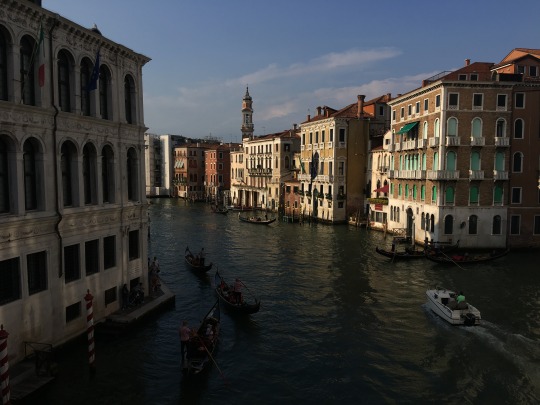
Everywhere you look in Venice is picture perfect. It literally looked exactly how it did in all the photos I’d seen beforehand. There’s so much to do and so many amazing looking places to eat, I could easily spend a relaxed week here. Emphasis on the relaxed because getting around does involve a lot of walking and a surprising amount of stairs, and we had to pack as much as we could into the short amount of time that we had. By the end of our first day in Venice alone, the word exhausted had a whole new meaning. In terms of public transport, there’s only really the boat system, and that’s a steep €18 for a day ticket. Probably partly due to my moaning, we did end up getting one of these on our last day, but that meant that we also got to go to the islands of Murano and Burano which are included. I definitely wouldn’t say no to going back but it’s quite an overwhelming space: a bit disorientating, crowded, and very expensive! You’d have to give me a few years, lol!
The Hostel
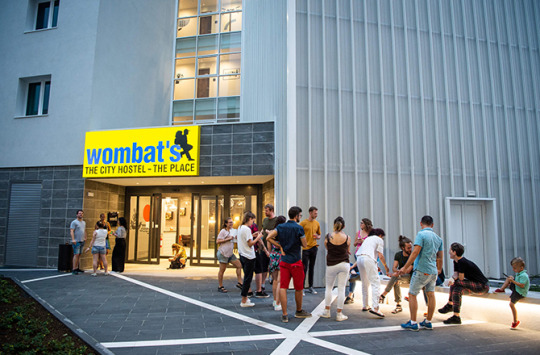


Whilst in Venice we stayed at the Wombats Hostel in Mestre, for around £13 a night. We were lucky in that it had only opened the week before (they were actually celebrating its opening at the Wombats in Naschmarkt when we were there!), and so it was super cheap. I imagine by now the price would’ve increased as it was a lovely hostel. Being new there were obviously some teething problems: queues on the front desk were pretty long, the free drinks vouchers given out had mistakes in that you couldn’t redeem them for one of the drinks that was listed, the kitchens were apparently very overcrowded with 2 faulty hobs between about 50 people, and our room as well as the bathroom in the lobby frequently ran out of toilet paper. Other than that, the dorms were the most spacious, modern and breathable of all the hostels we stayed in and the bar and communal areas were great. The only thing to bear in mind is that you do have to get a train into the main island of Venice, but it’s only about €3 for a return and it’s a short journey.
Venice Top Things to do:
1. Peggy Guggenheim

A really beautiful museum and garden right on the waterfront, there were all kinds of modern and contemporary art and even a piece (pictured above) by Jenny Holzer who is one of my favourite contemporary artists! I definitely fangirled a little! Some other standouts were by Jackson Pollock, Pablo Picasso, Andy Warhol, Max Ernst, Joan Mitchell and Willem de Kooning which I’m going to offload here to free up some space on my camera roll, lol:

Composition by Joan Mitchell (1962)
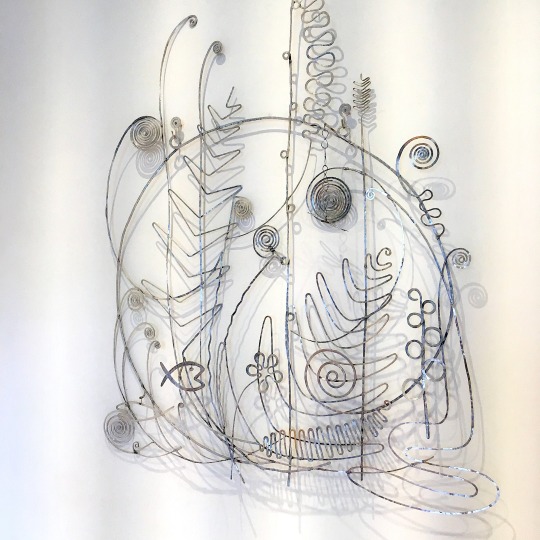
Silver Bedhead by Alexander Calder (1945-1946)

Untitled by Willem de Kooning (1958)

Circumcision by Max Ernst (1946)
2. Liberia Acqua Alta
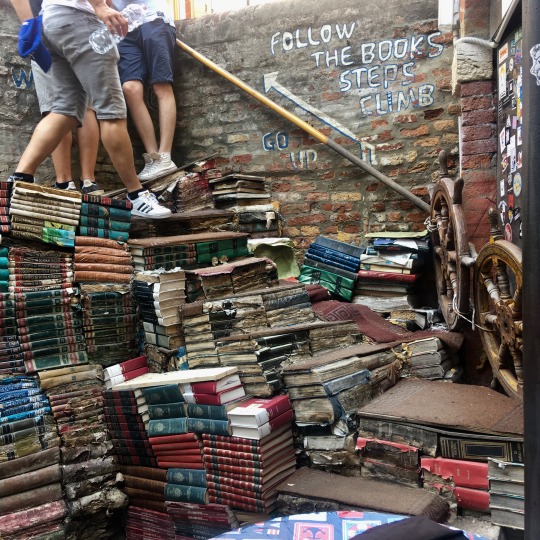
An eclectic little bookshop tucked away down some Venetian side street with tower upon tower of some of the most random combinations of books I’ve ever seen, my favourite thing about Liberia Acqua Alta was the cat chilling behind the counter. It’s shameful the vigour with which the crazy cat lady in me jumped out but I actually did start tearing up at the sight of it. I hadn’t seen a cat in 3 WEEKS! I missed my babies okay:(
3. Takeaway Pizza
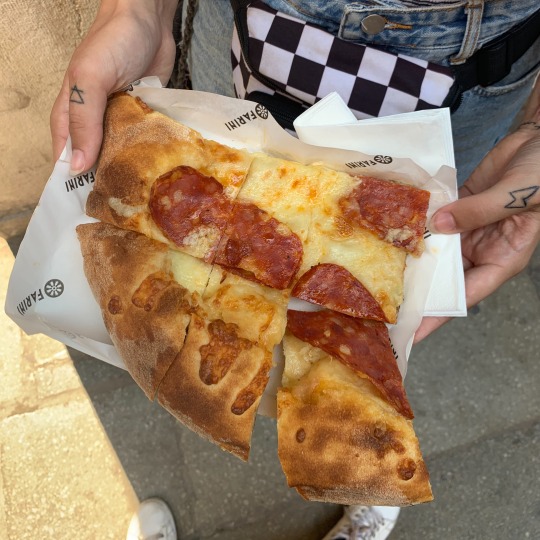
There’s loads of fresh takeaway pizza places around Venice but this particular slice was from a place called Farini. I think there might be more than one of them, and to be honest, when there’s pizza that delicious looking in the window, it would be a crime not to at least seek one out.
4. St.Mark’s Square and Basilica and Bridge of Sighs
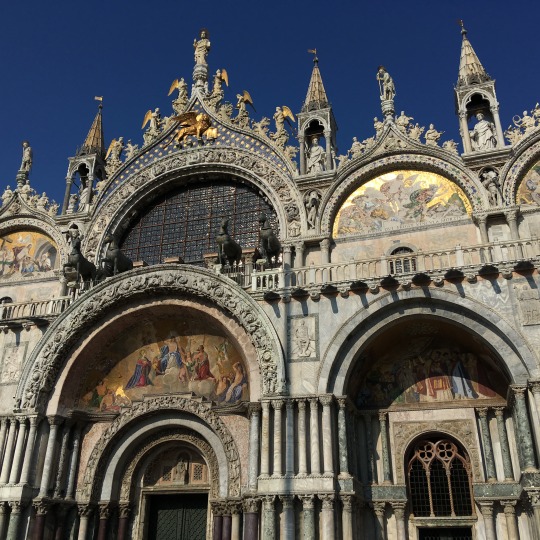
It might be a huge tourist trap but you really can’t miss St.Mark’s Square. The Basilica is one of the most magnificent buildings I’ve ever seen and even as someone who is not at all religious, you can appreciate the thought and craftsmanship that went into it. The astrological clock right next to the basilica is also absolutely stunning, just as much so as the one in Prague, imo:
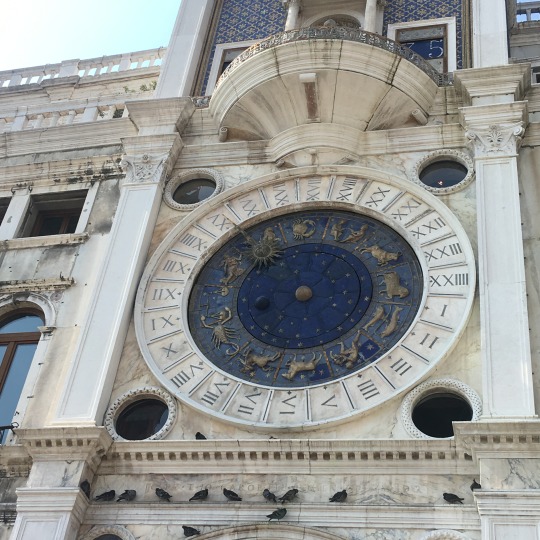
Getting dive-bombed by a flock of pigeons in the square was fun too. My life flashed before my eyes just for a moment. It was a humbling experience.
5. Leonardo Da Vinci Exhibit at Palazzo Zaguri
Basically, this exhibit was a collection of Da Vinci’s drawings of the anatomy of the human body side by side with the corresponding plasticised body parts. Really interesting and not at all as gory as it sounds, which was really the only disappointing part for me, lol.
6. Fondaco de Tedeschi

If you want a good view of the city without paying a fortune, Fondaco de Tedeschi is your place. It’s a fancy mall with a rooftop area that you can, by booking a time slot online, go up for free.
7. "Get Lost”
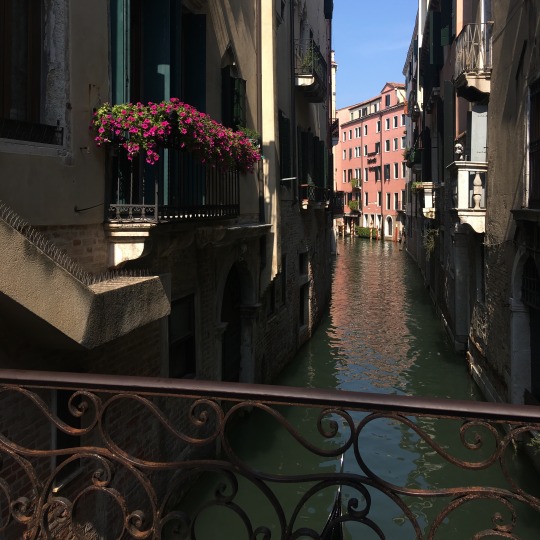
I’m not really someone that enjoys walking around aimlessly but if you’re gonna do that anywhere, Venice is your place. Every street and bridge and balcony is postcard worthy and there are pizza and ice cream and just generally good food places everywhere. You’re bound to stumble across at least one authentic, non wholesale mask shop whilst you’re wandering, and although there’s something vaguely creepy about a load of these blank faces staring out the shop windows at you, some of the displays are totally bewitching:
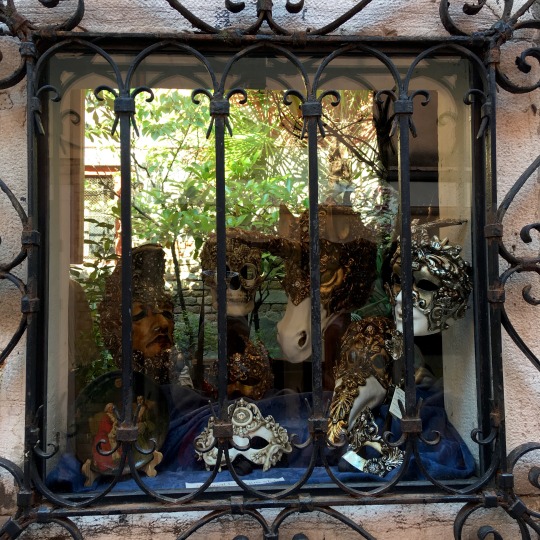
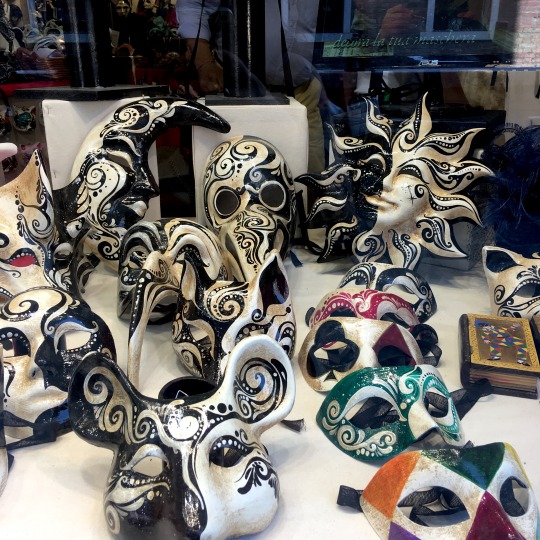

The middle display is from the shop window of the place that made the mask for Stanley Kubrick’s Eyes Wide Shut which I thought was very cool!
8. Get a boat pass and visit Murano and Burano
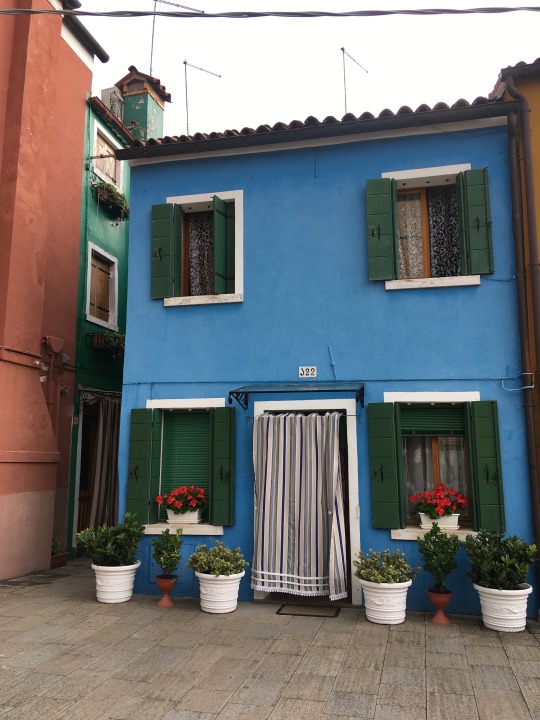
As I said, on our last day we bought a boat pass (€18) and visited the nearby islands of Murano and Burano, Murano being the island famed for its glass, and Burano for its rainbow houses. Burano was definitely my favourite of the two; it was a buzzing place full of charming little stalls and shops and boats, and of course, colour. Plus, we even got some close cat encounters in there! Murano was pretty but a lot quieter and seemingly more spread out. The glass shops get a bit old after a while as most of them all have the same things in and so I think finding out where you can see a glass blowing demonstration or visiting the glass museum is a good idea if you are thinking of visiting.
9. Osteria Trattoria Al Nono Risorto
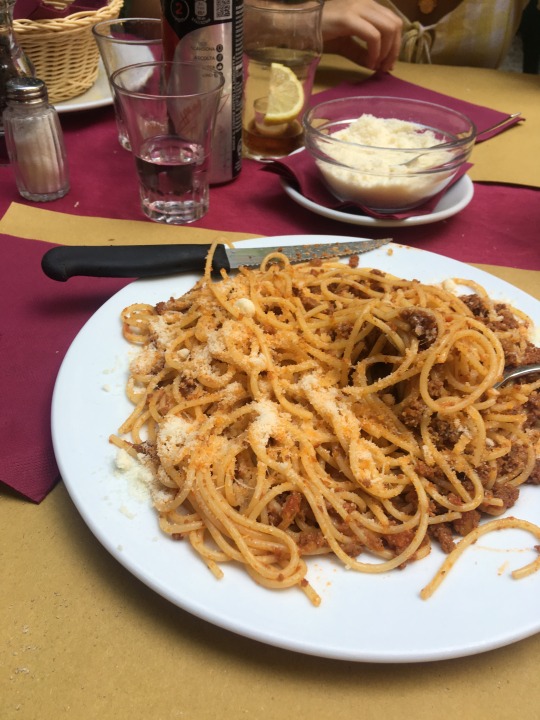
This was a super affordable little restaurant with a really lovely outdoor seating area, recommended by my friend’s mum. The service wasn’t amazing (they forgot about my friend’s pizza, lol) but I had what was probably my number one spaghetti bolognese of the whole trip here, and the garden was very pretty. Finding spots to eat a proper meal in Venice that aren’t going to charge you, like, €12 for the privilege of sitting down in a nice place is hard so I would definitely recommend checking this one out.
Future Venice Bucket List:
La Biennale di Venezia
Lido di Venezia
St.Mark’s Campanile
Chiesa de San Giacomo
Gondola ride
Doge’s Palace
Punta della Dogana
Bugno Art Gallery
Palazzo Fortuny
Rome, Italy

Our final overnight destination, Rome was a lot more cosmopolitan than I expected it to be. I was so focussed on the historical side of things that I kinda forgot it’s a capital city and thus, is going to obviously be pretty commercial. Still, it’s strange to just be going down a very pedestrian street on a tram, turn to one side, and see the bloody Colosseum there. I’m not going to lie, by the time we got to Rome I wasn’t feeling my best and was physically pretty exhausted so I don’t feel like I got to appreciate it as much as I should have done; I ended up going back to our Air B&B a couple of the days, largely due to the heat. It was almost 40 fucking degrees! I was honest to god DRIPPING in sweat on the tram back at one point! But I definitely want to go back again, maybe some time when we aren’t feeling the effects of the planet withering and dying as much, and explore even more. Rome is undoubtedly a very cool place.
Rome Top Things to do:
1. Colosseum and Roman Forum
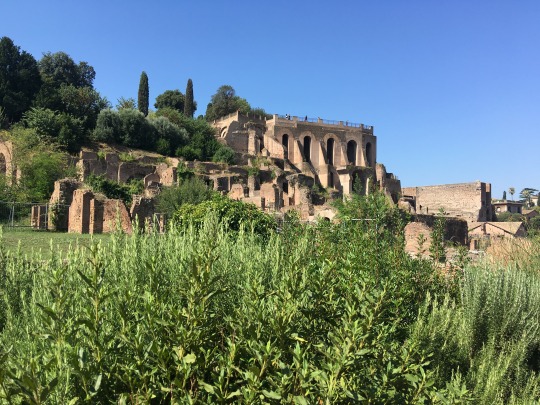
Before we went to the Colosseum and the Roman Forum, I kind of expected it to be something you looked at, went “wow, that’s cool”, and then moved on, lol, and I was low-key a bit pissed off that we were paying €20 to do so. When we did arrive, though, I was blown away by the scale of both the landmarks and how much there was to see and do there. The Roman Forum in particular went on for ages and there were signs regularly dotted about to tell you what it was you were looking at, what it used to be, and who built it, amongst other things; though I’d love to go back with a tour guide, it’s really not necessary. I can’t tell you how starstruck I was to see the foundations of a temple that Julius Caesar ordered to be built; the Romans have always been fascinating to me and I genuinely feel like I learnt SO MUCH on our visit. We booked a last minute whistle stop tour that got us in and out of both venues with allotted time slots, meaning that we couldn’t stay too long in the Forum, so I’d say if you can afford it, just go full out and buy skip the line tickets in advance. You could definitely make a day of it.
2. Fattori Ice Cream
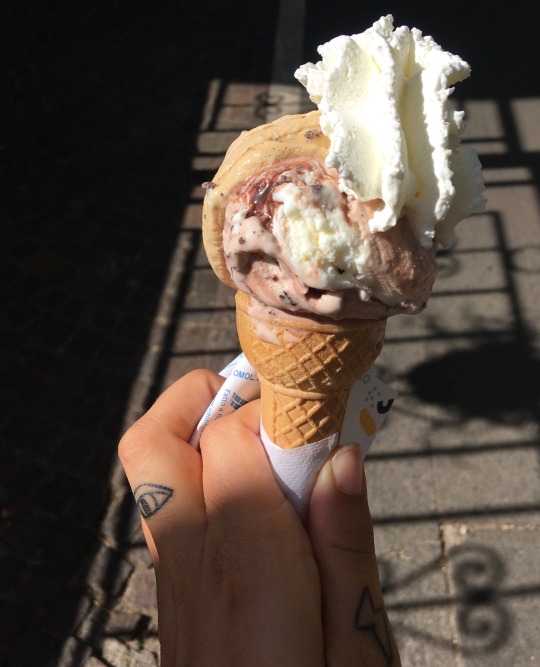
From a really cute little independent shop near the Air B&B we were staying in, this ice cream was SO GOOD that my fussy-ass-self didn’t even mind that I’d accidentally picked a flavour with lemon in. It’s a bit out of the way but I’d say worth the journey, and there’s supposed to be a lot of good street art nearby so there’s non-food related excuses to make the detour too.
3. Vatican Museums and Basilica

Honestly, the Vatican is worth going to for the ceilings alone. Raphael’s frescos are some of the most beautiful things I’ve ever seen, and if anything was going to turn me (to Christianity I mean, lol), it’d be them. I love contemporary art and on the whole find classic art to be a bit repetitive and same-y in its themes but some of the work that can be found in the Vatican is just an example of the level of passion and dedication and patience that can be found in so many pieces of the period and is something that I think modern art can occasionally lack.
4. Aventine Hill
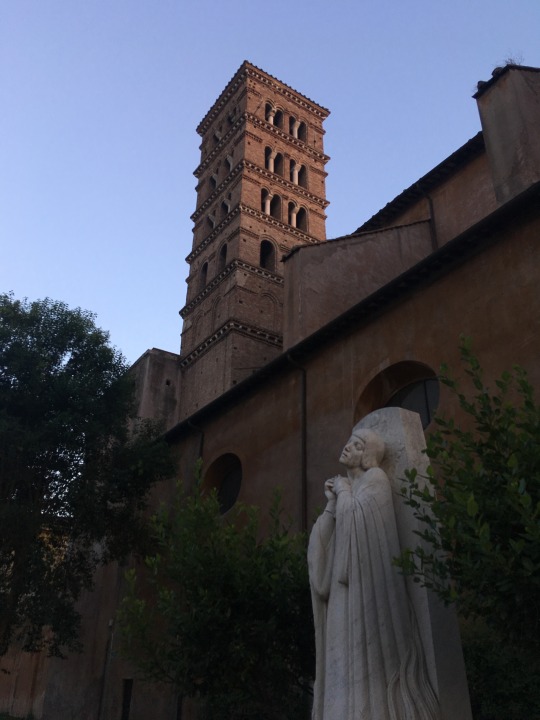
You’d think that a spot with such a good view of the city would be absolutely mobbed but Aventine Hill is just as serene as this photo makes it look. Do-ably uphill, amazing place to watch the sunset, and heads up: I can’t think of anywhere more romantic to propose.
5. MamaEats
One of many lively restaurants in the Travestere area, I had (surprise, surprise) another glorious spaghetti bolognese here. IIRC, they also specialise in gluten free food which is very forward-thinking!
6. Travestere and Riverbank
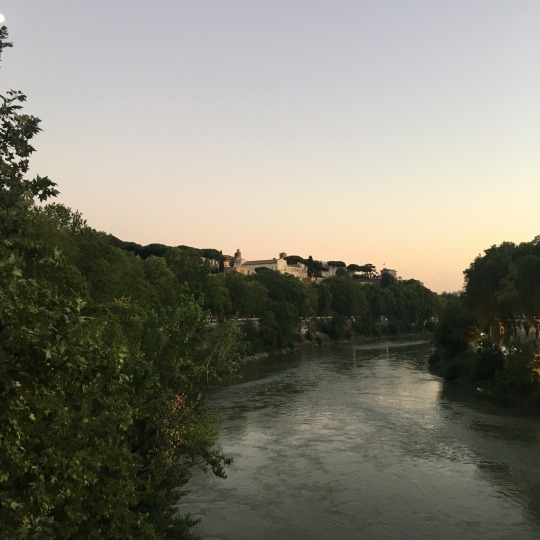
As I mentioned, Travestere is known for its host of buzzing bars and restaurants, but one thing we didn’t know about until we got to Rome was all the stalls and activities down on the riverbank. Though it didn’t seem to be a year-round thing, there was a whole strip of amazing food places and clothes and jewellery stalls and even some kind of VR experience down there which I would definitely recommend checking out if you are in Rome for the summer months.
8. St.Paul’s Outside the Wall
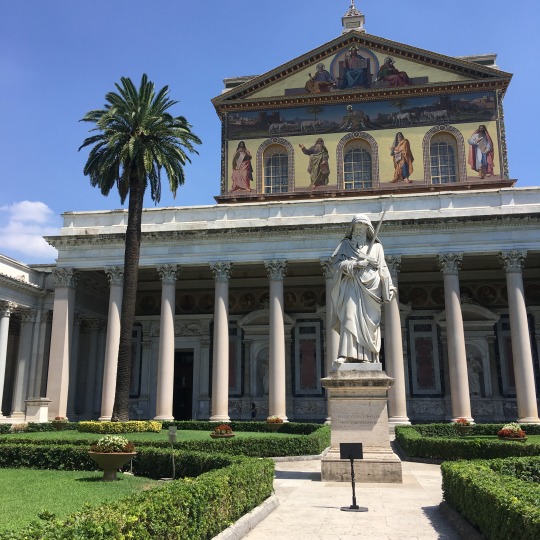
A really beautiful Church both inside and outside that's lacking absolutely nothing of St.Peter’s Basilica except the queues, my protip for visiting St.Paul’s Outside the Wall is to WEAR SOMETHING COVERING YOUR KNEES AND SHOULDERS. I mean, I’d say the same thing for all of the Italian Churches, but specifically this one because they WILL force these blue sheets of tarpaulin masquerading as “ponchos” upon you and you WILL feel like a complete and utter twat. You have been warned.
9. Street Art
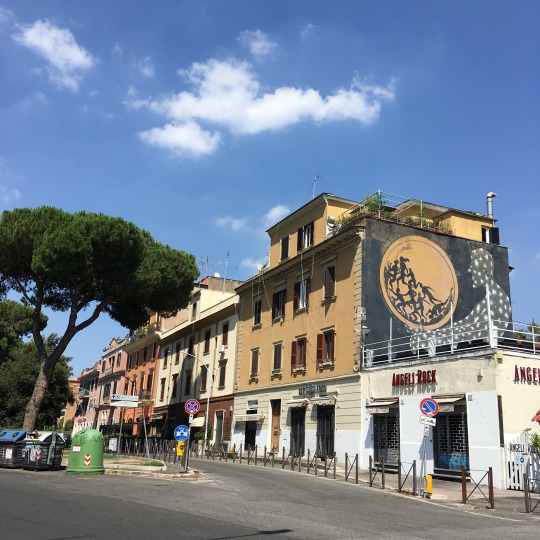
We didn’t quite walk far enough to get to the cluster of street art by St.Paul’s Outside the Wall, but what we did see we found easily through the StreetArtRoma app, which marks out the various murals and professional graffiti points around the city. I think a really interesting day would be to hire a bike or a scooter and use the app to explore those various clusters that are dotted all around the city.
10. Largo di Torre Argentina
The site where Julius Caesar (yep, him again) was assassinated, but also the site which is now populated by a group of very cute, and also very friendly cats. We didn’t get to go in the daytime when the actual cat sanctuary was open but when I went down the steps to get a closer look at the site one of the evenings, several of them came to say hello! No offence to any Christians out there, but if there was one point on this trip when I felt I was truly in the presence of something greater, it was here. And they were furry and adorable. With whiskers:3
11. Parthenon, Trevi Fountain, Piazza Navona

Basically, you gotta do all the big tourist spots. Yes, the Trevi fountain felt a lot like an overcrowded kids’ swimming pool, and yes, I did fear I was about to get yeeted into the fountain like a coin at some points too, but it is undeniably a very captivating sight. Along with the Parthenon, it’s a prime example of Rome not really being what I expected, because there’s no big clearing for either of them; they’re literally just slap bang in the middle of the street like they’re NBD, which is kinda wild considering they're hugely important pieces of history and architecture. Piazza Navona is very pretty too and a great place to sit down and get something to eat, even if it was just boxed pasta from one of the supermarkets round the corner in our case.
Future Rome Bucket List:
Galleria Borghese
MAXXI Museum
MACRO Museum
Cinecitta Film Studios
Galleria Nazionale d'Arte Moderna
Capitoline Museum
Milan, Italy
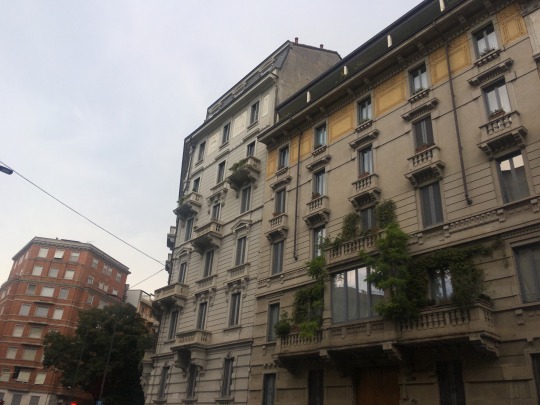
We only visited Milan for the day as that was where we got out flights home from but I still really enjoyed it. I went once in 2018 and I think the appeal back then was lost at me, but this time I get it: shopping, lol. There’s also a lot of art and fashion museums which are a huge part of the draw, and of course, the Galleria Vittorio Emanuelle; I think if you’re a person with *ahem* a fucking shitload of money, that’ll be enough to occupy you for at least a day or two.
Milan Top Things to do:
1. Galleria Vittorio Emanuele

The oldest shopping mall in Italy and undoubtedly the most beautiful, the Galleria Vittorio Emanuele might be the boujiest place I’ve ever stepped foot in. Sure, the shops are too intimidatingly expensive to consider even attempting to enter but they’re fun to marvel at and the general area has every typical high street store you can think of. Even the Zara in Milan looks like a fashion Haus inside! The same shop that in my local town centre resembles a jumble sale a good 50% of the time! So yeah, despite not having any money to spend and the fact that I was *supposed* to be on a shopping ban until October, I still like wandering around the area.
2. Novecento Museum
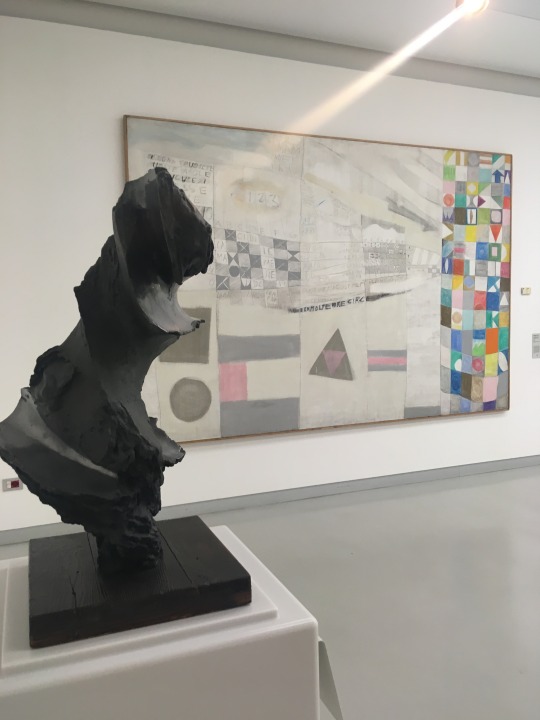
With several floors of modern art, interactive exhibitions (which you had to sign a RELEASE FORM to participate in), and an amazing view of Il Duomo upstairs, I really enjoyed the Novecento Museum. I thought it was going to a be a disappointing alternative to the Armani Museum, which was closed at the time, but it ended up being one of my favourite museums we visited on our whole trip.
3. Sforza Castle
My friend that we met up with whilst in Milan (she has a flat in the city! I’m very impressed!) took us here and we sat down in the grounds for a bit, which was a nice way to chill out for an hour or so. There was a fountain out the front that people were paddling in to cool off too and there seemed to be several exhibits going on inside the castle as well if you did want to get a bit of background.
4. Starbucks Reserve Roastery on Via Cordusio
The fanciest Starbucks I’ve ever seen in my life. Again, intimidatingly so. But if you like your coffee you will probs be in heaven.
5. Gallerie d’Italia
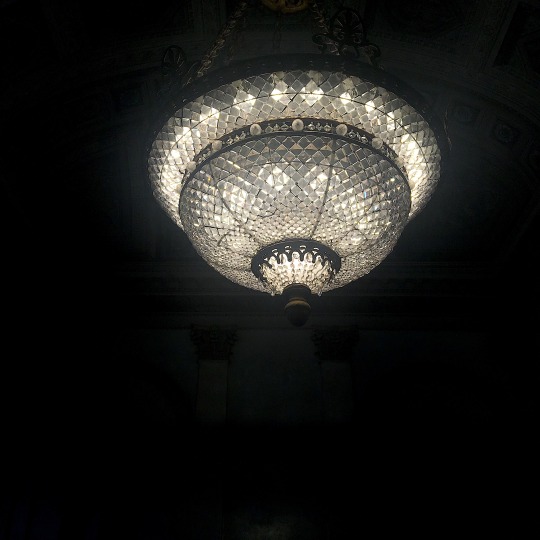
So me and my sister went here the last time we came to Milan and IIRC, really liked it. The modern art section was a bit sparse but the rest of the museum continued into some kind of grand old building and the usual stately home staples that I love were of course there in abundance: intricate ceilings, palatial stairways, opulent chandeliers, beautiful flower gardens, the place is basically a labyrinth of decadence and we lapped it up, lol. People being rich enough to own buildings like this? No. Them being open to the general public so we can go wild in them? Yes.
Future Milan Bucket List:
Armani Museum
Navigli
Go in the Duomo
Barcelona, Catalonia
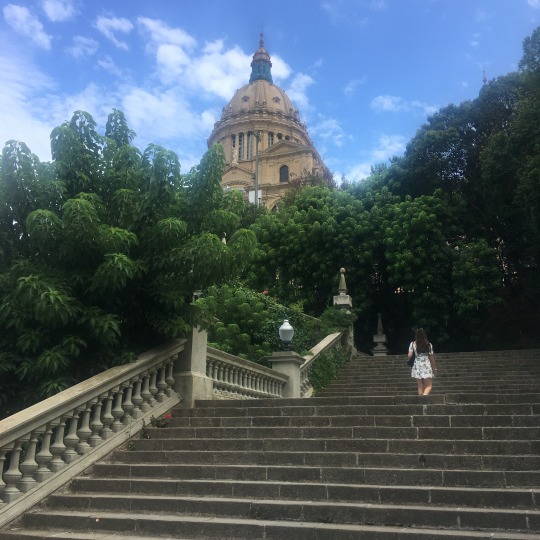
I’ve been to Barcelona about 4 or 5 times now and aside from Paris and London, there is no other European city that compares. It’s so huge, full of character and unique beauty, and endless things to do, that I could return probably about 10 times more and still leave with an incomplete bucket list. With stunning architecture, a laid-back coastline and bustling commercial areas, it’s a city with such a consistent vibe and sense of history. The only thing they could do to make it better? Take down the Christopher Columbus monument. Because having a giant statue of a man who facilitated the genocide of a whole country full of native people is a bit...yikes. Sorry, had to drop that in there. But on the whole I adore the place.
Barcelona Top Things to do:
1. CosmoCaixa
We didn’t actually go to CosmoCaixa on this trip to Barcelona, but we went a few years ago and it’s without a doubt, the coolest science museum I’ve ever been too. There’s information in Spanish, Catalan and English so most people can probably follow the exhibitions and even if not, there’s a whole interactive area with a load of contraptions that you don’t really need to understand to be entertained by. You could definitely make a whole day of it too; we went for about 3 hours and still only scratched the surface.
2. Museu Nacional d'Art de Catalunya (MNAC)
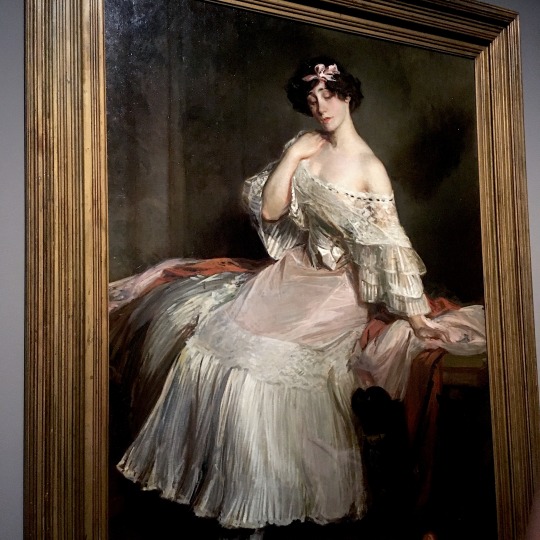
2 things!
Firstly, this is a portrait of Colette, the French novelist, which me and my sister got really excited about because we kinda stan after watching that Kiera Knightley film!
Secondly, and probs more importantly, the modern art section of Museum Nacional d’Art de Catalunya is one of the most ingeniously laid out I’ve even seen. With the sections separated into different eras of Catalonian art, it kinda reads like a whistle stop tour of the cultural history of Barcelona, and so not only did I see so many gorgeous paintings, I got educated af! Also, the building which the museum is housed in, the Palau Nacional, is stunning. Plus, there are escalators most of the way up. Iconic.
3. Portaventura

It was my sister and I’s fourth time visiting Portaventura this year and it was as amazing an experience as ever! The park is split into different themed areas, kinda like Disney, and has everything from thrill rides to Sesame Street Land (which is low-key super fun). It has what is probably one of my favourite rides ever, Shambhala, and also randomly the best theme park food I’ve ever tasted. One thing I would say is that the accompanying park, Ferrari Land, isn’t worth the extra money as the queues are super long, and there’s only really one ride worth going on, which is basically just a replica of Stealth at Thorpe Park. Same goes for the neighbouring water park; unless you’re going to pay for express passes there, give it a miss. The lockers are €10, the queues are ridiculous, the wave pool didn’t work (not that the staff bothered to tell everyone who was just stood there waiting for an hour) and the “lazy” river is pure anarchy. Literally, kids half-drowning themselves for the lols, popping up under your rubber ring when you least expect it, and then being screamed at by their parents. I live for a bit of chaotic energy but that lazy river...
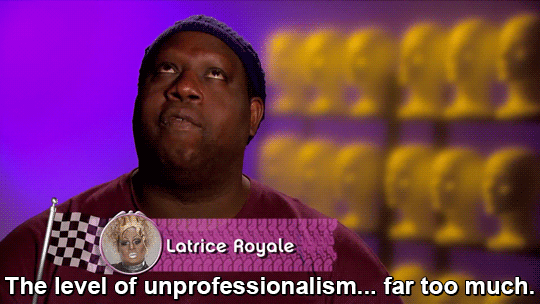
4. Visit Sitges
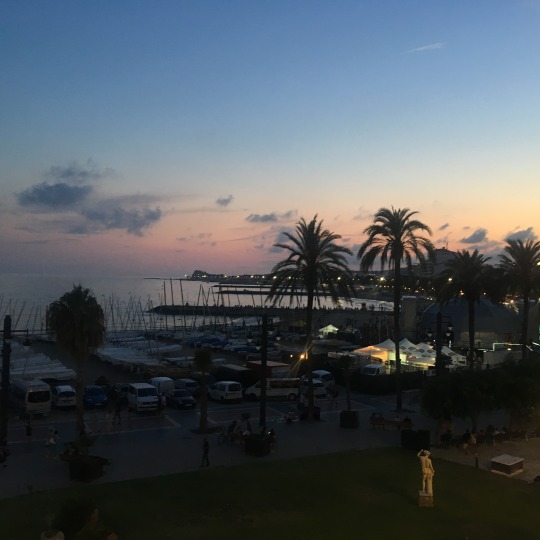
A small city on the coast about half an hour from Barcelona, I really cannot recommend Sitges enough. There’s a ton of cute little art museums, delicious restaurants, heavenly beaches (the waves are INSANELY GOOD! You WILL get knocked under water half a dozen times but you also get to watch it repeatedly happen to other people too and it’s great), and a fucking ridiculously hard assault course out in the sea that me and my sister tanked at, hard. There’s incredible food places everywhere but favourites are Pom D’Amour and Dino for ice cream and sweet treats, and Beach House, Big Al’s American Kitchen, and Soca for mains . There’s also a really prominent LGBT community, plus lots of bars, pubs and clubs. Honestly, if you’re going to Barcelona, I really recommend staying around here as you get away from the the majority of the tourists but can still easily get in to the city by train.
5. Walking with Gaudi at the Gaudi Exhibition Centre
A very cool, very interactive exhibition that dives into the life of Gaudi, his creative process, his projects and his influences. My sister particularly liked the replica of El Drac. Like, she for whatever reason thought it was cute. Named it. Made us walk up to Parc Guell to try and see it. Wouldn’t leave the area til she got a keychain of it. Sigh.
6. Passeig de Gracia
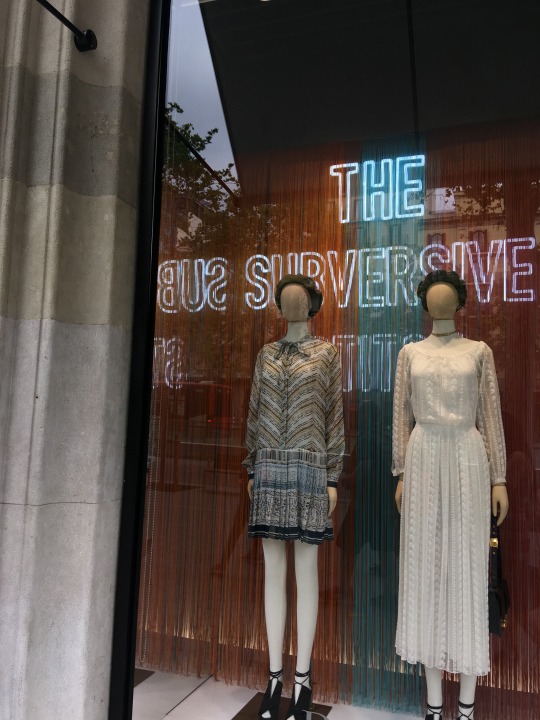
Down Passeig de Gracia, you can both wistfully gaze through the windows of the designer shops you pass by, and actually spend your money (too much in my case) in the high street ones. Best of both worlds, bby.
7. Casa Battlo
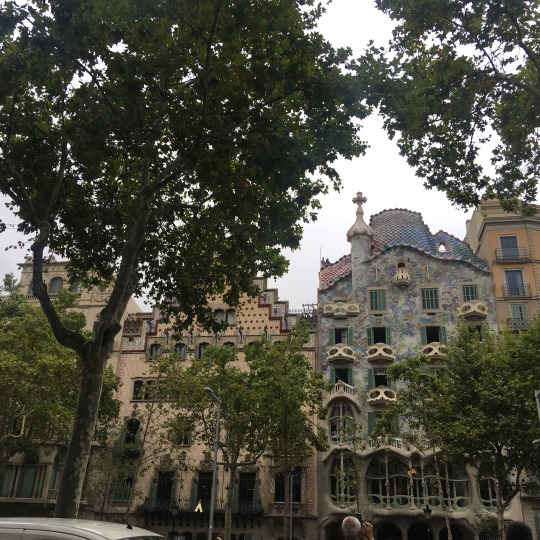
So it’s on Passeig de Gracia, pretty much opposite the metro station, but I had to give it its own little bit because it’s my favourite Gaudi building. Kinda looks like something aliens would build, kinda looks like something that sprang out of the ground, but that’s pretty much what Gaudi did best.
8. Park Guell
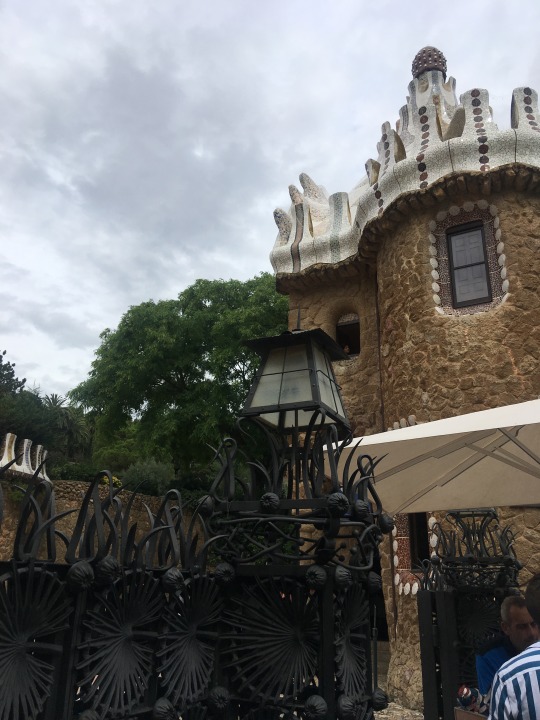
Just a warning, Park Guell is VERY uphill, and we somehow ended up getting off at the metro station right at the bottom of that hill, only to find out once we got up there that you had to book a slot and that all the slots for the rest of that day were sold out. My sister didn’t get to see her dragon and I was pissed off that I’d just nearly busted a lung open and regretted throwing my inhaler away for 20 minutes straight whilst getting up there, but it was still a pretty good view and we did get to see a bit of the park. Moral of the story though is to obviously book Park Guell before you go.
9. Sagrada Familia
We’ve never actually been in to the Sagrada Familia, again, because we’ve never thought to book it (I want to absolve myself of responsibility here since every time I’ve gone to Barcelona before this trip, I’ve been a baby and let my parents organise everything), but it is an absolutely magnificent building even from the outside. I would one day love to go in and go up the spiral staircase though, because it looks fucking terrifying and I’m one of those strange people who likes being scared every once in a while.
10. Buenas Migas

I’m pretty sure it’s a chain thing but it’s the first time I’ve ever seen a focacceria, and maybe I’m just uncultured but...I got pretty excited. That being said, my sister and I both ended up getting pizza; it was as tasty as it looks.
13. Las Ramblas and Plaza Catalunya
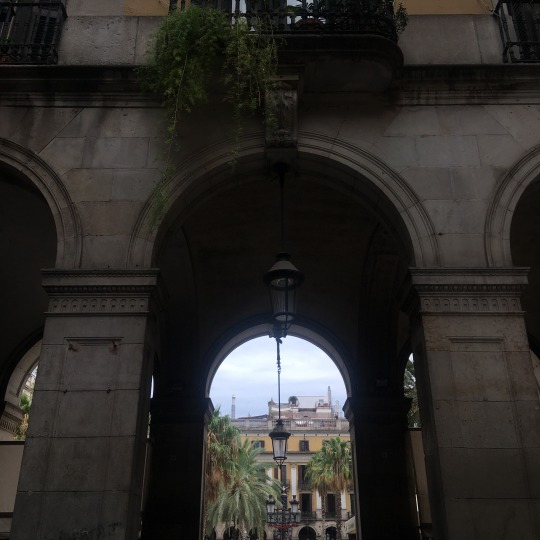
The most typically mediterranean looking square you’ll ever see, Plaza Catalunya is the perfect place to stop off and get some tapas whilst you’re exploring Las Ramblas.
14. Mount Tibidabo
“I was backpacking across Western Europe, I was just outside of Barcelona, hiking in the foothills of Mount Tibidabo”...yes, I got excited to go here because of the Friends reference (I’m a basic bitch who likes friends AND has other personality traits, smd), but equally so by all the adorable old-timey fair ground rides once we did get up there. It was a few years ago now, so I’m not sure exactly how it worked but I do vaguely remember it being a bit of a rip off in that you had to pay to ride them all individually, so it’s good to know that the view from the Church and the Church itself is more than enough of a reason to go up. There’s also places to eat on the walk down and plenty of ice cream and food stalls up there.
Future Barcelona Bucket List:
Museu d'Art Contemporani de Barcelona (MACBA)
European Museum of Modern Art (MEAM)
El Jardin del Gats
Port Cable Car
Carrer de la Neu de Sant Cugat
So, that was my summer! 100% the most eventful one I’ve ever had! I’d love to go back to every one of these places, at least for a day, and am so grateful I got to have this experience. I definitely missed home a lot and maintaining your wellbeing whilst out of your comfort zone is hard, I’m not going to lie, but I hope that a year from now I’ll be feeling even more adventurous.
There are so many places in Europe I desperately want to go to, some even more so now that I’ve visited the country. Now that I’ve been to Germany, for example, I’d be really interested in seeing somewhere like Munich or Cologne, as they’re supposed to have a completely different vibe from Berlin. It also really inspired me to get back into Spanish and possibly even learn French.
I don’t know if anyone who is going inter-railing will read this but if they do, feel free to message me if you have any questions. My friend did pretty much all of the organising so I’m not the most knowledgeable person ever but I will do my very best to answer! Similarly, if anybody has any recommendations of other places to go whilst in any of these cities, food places and art museums especially (lol), let me know.
Thanks for reading!
Lauren x
#travelling#interrail#interrailing#paris#bucketlist#barcelona#budapest#prague#architecture#modernart#food#rome#venice#beautifulplaces#europe#adventure#lonelyplanet#gaudi#alphonsemucha#artnoveau
32 notes
·
View notes
Text
The Game
A short fic for @crimson-r! It stars their OC Hera (H e r a) as well as a younger Lord Hordak before his stranding on Etheria.
Hope you like it friend, I had fun with this one.
Fic below readmore.
========================
Parnan was Hera’s favorite sort of world to ‘adopt’. Their industrial revolution was over, their computer revolution was just beginning, their nation states were at each other’s throats as suddenly the world they sought to control became so much smaller. It’s a perfect melting pot of volatile ingredients. Of course there is no action without preparation, and Parnan had taken years of quiet observation to work out exactly what kind of spices were needed to make it all just right.
Now though, all the pieces were falling into place. Hera allows herself a small smile as she glances out the large panoramic window of the personal observation lounge in her flagship. Currently the Madame was sitting, one leg over the other, sipping a drink while playing a game of Regency with one of her many underlings.
Said underling, a member of Hera’s own species registered as ESS-1172 was paying far more attention to the board. The armored woman’s Regency skills were far below the Madame’s. Hera would almost pity her if she didn’t know the body count ESS-1172 had accumulated over her years of service in the Horde. She had a name of course, ESS-1172, but it was irrelevant. Only those of Hera’s rank or higher knew the identity of such ‘specialists’ so it was best to generally refer to the armored woman by her serial.
A move is made. Hera only needs to glance at the board for a moment before making her counter. Her opponent lets out a quiet curse and leans forward once again to examine the board. Hera for her part simply looks back out at the planet below. They had arrived a few weeks ago, and had made contact with one of the worlds many nation-states. Their point of contact was of course, very carefully chosen. Representatives of the Great Horde Empire, here because they had proven themselves worthy of greeting from the stars. Who were they? The species? The nation they landed in? The locals could decide for themselves.
Now Hera waits for all of her preparation to pay off. If her timetable is accurate, and it almost always is, the fruits of her labor should be visibly manifesting within the next few hours. Hera was settled in for a calm and comfortable wait. Until a communique from the ship’s bridge interrupted her musings, and her game.
“Madame Hera. A Horde vessel from outside of your task force is on approach. It has identified itself as belonging to… Lord Hordak…”
Hera’s grip on her wine glass hardens. She did not need this. She did not know Hordak personally but she knew of him. They had been in the same academies, and for years of the same rank. Hordak is of very different politics than Hera however, and he had acquired Lordship. To approach like this would mean a clash of authority is on the horizon. Perhaps defusable if her timetable is correct.
Despite Hera’s confidence she finds herself glancing at ESS-1172, who is now looking up at her. The specialists face is completely hidden by her helmet, an opaque featureless thing meant to unnerve. Hera knew this woman well enough to imagine the lavender teeth of the expectant grin surely playing beneath the helmet though.
Hera speaks after a moment. “Greet him properly, invite him aboard. Send him to me.” She then closes the channel to the bridge to address the specialist. “Do not dare to practice your craft unless absolutely necessary."
ESS-1172 only lets out a small laugh, and a modulated. "Of course, Madame.”
Hera herself prefers to avoid unnecessary violence, and has indeed foregone many of the combat modifications her people have developed. It is a political position as much as a social one in their society, and there are always those on the opposite side of the aisle. Those who are more than willing to break your body personally. It is for this reason that Hera keeps specialists in her employ.
Though such people require a short leash, lest they start making decisions on who to remove on their own.
Lord Hordak, the title of Lord sounds so very strange when it precedes his name, is of a different mindset than Hera. He stands on the other side of the aisle. Violence is a tool to be utilized liberally, not just through subordinates but through personal action as well. It is a quick and effective philosophy, but not always the most efficient.
Hera stands up, moving over to the personal bar set up in the observation lounge. Imbibing is a pleasure saved for celebration, so she will prepare Hordak a drink as well. He must know that all is going well here above Parnan.
She picks up the sound of ESS-1172 getting up. Then nothing. They’re always so damn silent when they move. It is of no matter, wherever the specialist moves to it will be in her superior’s, Hera’s, best interest.
So the Madame moves back to her seat, placing a glass down for Hordak and resetting the regency board. Then she waits. Sitting implies comfort in the situation, that air will be of help.
It is not long before the chime of someone approaching is heard. Then the door slides open. Lord Hordak steps in with little ceremony, the guards on either side of the door doing nothing to stop him. He prefers a slit dress as well it seems, respectable. Though the cloak worn with it is perhaps on the bulky side. A touch too flashy. “Madame Hera. Celebrating?” His brow is already raised as he spots the glasses. Good.
“Indeed Lord Hordak. Would you care to join me? I poured you a glass.” He scowls but walks over. Reaching down to pick up his glass before stepping forward further to gaze out of the window. Unfortunate. Hera had hoped he would sit down. Standing implies he is maintaining power over her.
“You have been working on this world for years with no action, Madame Hera. I have examined your records. Your work is impeccable, but dreadfully slow. A world of this technological level should be much farther along toward the path of compliance.” There it is. He would have put boots on the ground by now. Burned cities and taken continents.
“There is no need to waste fine Horde Soldiers on a world such as this Lord Hordak.” Not on such backwater locals.
“It is never a waste if those soldiers bring the world into compliance.” He counters.
“Perhaps, but I prefer to save my forces for those worlds that notably defy the Horde and truly need them.”
“The Horde needs you, Madame Hera. Soldiers are plentiful, leaders are not. The time you waste playing your games is time that could serve the Horde on other worlds.” That was always the crux of this debate. Hera disagreed. In this way she could be called to other fronts quickly and simply abandon her current world to be returned to later. It is a more flexible approach. That debate is not for here however.
“The planet will conquer itself. We are in the final part of the initial stages, if you would care to stay and watch.”
He glances back now. “Watch? Am I to expect a show?”
“Of sorts.” She suppresses the smirk building within. Maintain a detached demeanor, show nothing.
There is a silence in the room as Lord Hordak examines Hera. His red eyes piercing into her. “Very well. Let us see what your work will give us.” He finally moves to sit down. He is less likely to make any sudden strikes now.
“Would you care for a game, Lord Hordak?” Hera gestures to the Regency board between them. In another place, another situation, between members of another species, that might be an innocent question. Here though it is anything but, it is a challenge.
“Very well. I must admit it has been some time since I have played a game of Regency.” That is very likely a lie, meant to coax Hera into underestimating him. A simple one, obvious. There is a certain cleverness to such obvious tactics however, as long as one knows they are such.
“I am sure you will remember the game quickly.” Hera replies with a small nod, closing her eyes as she does so in a calculated display of respect. Then she reaches out and makes the first move. A gambit of her own. The first move is a disadvantage in Regency.
Hordak is a much more formidable opponent than ESS-1172, who Hera finally spots in the shadows of the room. Perched up in a corner near the ceiling. His moves are much faster, and much more cleanly calculated. Hera comes to the realization very quickly that she will need to give this game more attention than most of her underlings require.
Hordak is an aggressive player. He takes risks Hera herself would much prefer to avoid. He sacrifices his pieces with ease if he sees a gain to be had. Earn the points back, that is all that matters to him. Hera is much more reserved, frugal with her forces. The cleaner the victory the better.
It puts her on the defensive for the first time in years.
As the game continues there is another communique from the bridge. “Madame Hera, we have registered and confirmed the mobilization of capital weaponry by the local population."
Hera let’s her smirk finally play on her face. "Thank you for informing me. The ship should be safe where it is, maintain holding pattern.”
Hordak looks up from the board. “I assume your show is about to begin?”
“Indeed.” Hera sits back now, looking out the shielded window. Watching the disgusting ball of alien dirt below. Hordak shifts to watch as well.
It takes a few minutes for the first pinprick of light to appear and expand. After that they appear and vanish in quick succession, all across the world, largely in population centers. A nuclear holocaust. Annihilation with little need for direct Horde intervention.
Hera catches Hordak grinning a bit as he watches this. She’s avoided direct conflict with him as well, for now. “It would seem your celebration was in fact in order.” He notes.
“Of course. I would not break out the drinks if I was not sure.” Hera replies. Looking at the board and making her next Regency move as she does. “We can leave the planet to stew for a few more years, then return to reexamine and, if any survive, offer the locals help rebuilding their civilization. By Horde standards, of course.”
“Of course, and if none survive we will strip the world” He turns back to the board. Makes his move.
And claims victory.
Hera stares at the board. Impossible. How had he…
“Madame Hera. Your methods are efficient, as I have already admitted, however they blind you to the simple effectiveness of direct action.” Now Hordak stands up. “Should your conquests ever be less than impeccable… Your methods will most definitely be called into further question."
"I assure you Lord Hordak you have no need to worry about me.” Even if he took the Regency victory the light show below still ensures Hera the conversational victory. There is no need to act anything less than completely confident.
He eyes her for a moment again. Then turns to march out. Leaving Hera to examine her board once the door is sealed.
“He cheated.” The modulated voice speaks as the owner drops back to the floor.
Hera’s eyes quickly dart back up. “Excuse me?”
“When the locals began their nuclear exchange. He shifted some of his pieces. Some of the similar ones.” ESS-1172 elaborates as she approaches and gestures to some of the pieces in question.
Hera looks back at the board. She’s right. “Yet he had to have planned to cheat in that way.” She notes. Then she looks back up. “Would you care to transfer to his command for me? I find myself quite curious…”
ESS-1172 bows her head. “Of course Madame. I would love to."
Hera nods and looks back out the window. It will be a shame to lose this specialist to Hordak but a spy will be useful, and to give her as a gift will be useful politically.
The game never really ends, after all.
26 notes
·
View notes
Text
Generalizations in Fandom
Or, some idiot on my dash made an underinformed comment about shipping trends and now I have to go prove them wrong.
I’m a day late with my griping, but much better-researched for it, which means this post (under the cut) is going to be even longer now. Apologies in advance. If you’d like to read my exceedingly long-winded griping, hit the readmore button.
A quick preface–and some background–to my complaining, which will be important going forward. Though I’m by no means a fandom old, nor am I claiming that status, I’ve been in and around fandom for over eight years now, and have been an active content creator for seven and a half. In that timeframe, I’ve been in and out of a wide range of fandoms, all with different fannish climates and behaviors, so I like to think I have a fair bit of experience in these spaces.
So, yesterday, a blog I had been following–which, up until this point, had expressed views on fandom I generally agreed with–made a post complaining about the proliferation of slash fic in fandom. I’m not going to link the post or @ the blogger in question, mostly because I have no intentions of picking a fight with said blogger or with their fans, as I understand they have a relatively large following, but the post was something to the effect of “fandoms always lionize overwhelmingly white noncanon m/m ships at the expense of women and POC”. Now, at a glance, that looks…correct, right? At least considering the fandoms you usually see on Tumblr. But that statement looks…really off to me, given my own lived experience, and the longer I looked the more off it looked, and the more complaints I had with it.
The first problem with this statement, and others like it: there is no such thing as a pan-fandom issue. Statements like these posit that all fandoms, regardless of the source material, always have or develop the issue the poster sees and wishes to discuss. It’s a good way to get attention, but it lacks the nuance to really support itself under scrutiny. The truth of the matter is that the source material a fandom draws for has influence over the sort of fans who are drawn to it and the material they have to work with, which therefore effects the trends in tropes and shipping the fandom in question develops–and while broad similarities may be drawn across multiple fandoms with similar elements to them, no two fandoms develop alike, an effect which is compounded by differences in age, genre, and location of origin of the source material.
For a personal example, I’ve been active in four fandoms I would consider strongly influential in terms of my taste in fiction and my writing ability and style. Without getting overly specific, those fandoms are:
a video game franchise begun in the 80s, which has seen new installments released every 5-10 years
a magical girl manga (and later anime) produced in the early ‘00s, which has not seen new canon since
a popular and ongoing live action American movie series, which began release within the last decade
and, for good or ill, Voltron (an animated cartoon released in summer ‘16, which ran through December ‘18 with an utter shitstorm of a fandom)
If we believe statements such as the one above, one would expect that all four of those fandoms would have exactly the same inter-fandom issues, namely the sidelining of women and characters of color in favor of the white slash pairing of the day–but, having been in these fandoms, that’s true for exactly one of them. I’d give you all three guesses, but let’s face it, the answer is obvious.
It’s the live action American movie series.
In fact, the initial statement is fairly accurate when assessing that work, and other live action American movie series and television shows, and there’s a number of reasons why. American live action media often gives disproportionate representation to white men, particularly when it comes to lead roles, while consigning women and POC to supporting roles. As such, the (white, male) leads garner more development than the support roles, which makes the leads easier and more appealing for fic writers and shippers to work with. Media with black leads, or other leads of color, also often have smaller fandoms overall, and as such don’t make the big, obvious waves large-scale fandoms like…say, Harry Potter or the MCU make on Tumblr.
Canonical (female) love interests are also often sidelined by live action media fandoms, for a number of reasons–namely, in canon they are often granted less screentime, less depth, and less subjectivity than their male castmates, and are frequently treated as objects by the camera. This makes it harder to empathize with them, especially given fandom is majority women who may be rendered too uncomfortable to work with the characters–there’s a good deal of baked-in misogyny that would need to be untangled from the character herself, and in most cases only the most committed of fans are actually going to sit down to do the work.
Now, mind you, these do not apply to all fandoms. Voltron had some of the same problems with sidelining canonical love interests–but Voltron’s fandom flagships gag were between a half-human character of indeterminate ethnicity and two men of color, one of whom is canonically queer. The magical girl manga fandom I mentioned above, ironically enough, has issues with sidelining a subtextually canonical f/f ship in favor of splitting the pair to put them in het ships. And the video game fandom used to have issues with slash shippers in what was a majority het fandom, and still has lingering issues with slash depending on which corners of fandom you frequent.
And yet, if I were to say “fandom has a problem with ignoring canonical queer subtext” or “fandom has a problem with inordinate aggression towards slash ships”, can you imagine the sort of ridicule I would face? Most people discussing social issues in fannish contexts would look at me as though I’d sprouted a second head, when those issues are in fact present and in need of discussion–just not in the large, obvious fandoms in the Tumblrsphere, which seem to be the only fandoms these people consider deserving of discussion.
My second point can be summed up in a single sentence: it is not the responsibility of fandom to correct the issues present in the source canon.
No canon is perfect. Creators are human, and flawed, and they will inevitably fuck up no matter how well they generally handle things. And while those fuckups do impact the way the fandom creates (see my first point), fandom does not have a duty to fix those fuckups. Fandom is not, and should not be, an activist space–it’s a creative space foremost, and it’s full of people with all sorts of baggage they pack in with them. It’s unfair, and arguably cruel, to force people to engage with aspects of canon they find squicky, or even triggering, to ‘correct’ flaws in canon that your “activism” takes issue with. (note: the link in the paragraph preceding this is mostly talking about shipping activism and while it makes some points about slash I disagree with, it makes plenty of good points about other sorts of fannish activism and the way fans who take their activism too far impact other fans and people unfamiliar with the source media)
And, additionally: unless you’re paying them, fan creators don’t owe you content. Yes, even if they primarily create for that dreaded noncanon m/m ship and you’d rather they make content for your favored f/f ship. Yes, even if your favored ship is actually canon, because there’s absolutely nothing wrong with shipping noncanon ships rather than canon ones–if I kept that mentality I wouldn’t create at all. If you want content, you have to make it yourself, or commission it.
And, my final point: if you don’t enjoy things certain fandoms are doing, learn to use your blacklist and filters.
If, like the op of the post I’m complaining about, you’re tired of the proliferation of slash ships you have ideological disagreements with, blacklist them and the fandoms that produce them! If there are particular common aus in a fandom you hate, figure out the tags and filter those! Particular ‘hot takes’ you’re sick of seeing? Seas of endless shitposts that make you roll your eyes? One particular writer who does a ship you otherwise enjoy in a notably squicky way? Blacklist, filter, and block.
Because I guarantee you, no matter how many angry posts you make about people making content you personally dislike, you won’t make anyone stop producing it.
And you might even piss some of them off.
Now if you’ll all excuse me, I have a non-canon slash fic to work on.
#fannish salt#salt#this is absolutely not something i usually do and i don't intend to repeat the performance#but i was so pissed off yesterday i was literally seeing red#like!!! gods!!!!!!#just because mainstream live action american media franchises dominate tumblr#that doesnt mean issues those fandoms have are applicable to every other fandom everywhere!!!#and if you insist they are youre a fucking idiot and i wont apologise for saying it#like its beyond reductive to pretend theyre universally applicable#and frankly by assuming that worldview you miss a lot of issues actually present in the media in question#like the structural issues in vlds narrative that thoroughly borked their second and third arcs#and caused the surface issues that so much of the fandom fusses about rather than looking a little deeper for the common threads#but thats another post for another day
4 notes
·
View notes
Text
The End Of The Console Wars And The Dawn Of Unity
Earlier this year, I watched in awe during the Video Game Awards as leaders from Microsoft, Sony and Nintendo took the stage at the same time and delivered a joint address to those attending and watching at home. The platitudes were what you would expect and not in themselves groundbreaking - about what a great time it is to be a gamer and how exciting the future is right now - though not unwelcome and undoubtedly true. What was more meaningful in my mind is who the presenters were, what they represented individually and what their cooperating together - considering their background - to make that address symbolically represented: that the age of console wars is coming to an end and something else, something better for gamers and for the industry, is taking its place.
The awe I felt stems from the fact that this is a far cry from the state of the industry not so long ago, when E3 press conferences, especially those of Microsoft and Sony, were not entirely dissimilar to war rooms. References to each other at that time were avoided at all cost, as if avoiding saying a vulgar word, with the competition only being invoked to point out how inferior what they offered was to the vastly superior console they had to offer. Hostility toward the competition was not only rife on their part, but felt encouraged to be had on the part of consumers loyal to their brand. And we took the bait.
I’m embarrassed now to admit that I fell for this trap myself. I was an Xbox loyalist primarily, though because I grew up with Nintendo originally I had a soft spot for them as well. This made Sony the source of my own derision. With the original price tag on the PS3 and the eventually redacted “boomerang” controller design that console was initially slated to have, there was no shortage of fodder I felt given by Sony at the time to condemn their console. The trick is, criticism of those aspects of the console did have some objective validity, but there’s a fine line between making well-founded criticism based on rational thinking and deliberation from essentially accidentally supporting a valid negative position, but based purely from irrational, emotion-based brand loyalty which would have demanded I see what Sony offered as inferior regardless of the specific facts surrounding it.
I feel especially embarrassed to have felt that way, because in life I have traditionally prided myself on being a rational thinker, but in that case, given my passion for the games industry I was easily led away from it. Thankfully that was as far as such sentiment ever got with me, but the capability was always there for that to spill over into applying such irrationality and emotion-based decision making in other areas of consideration about institutions in society. This was the great unspoken, and perhaps unidentified, insidious nature of what was going on at that time in the games industry: irrational hostility was being fostered, and once that’s been justified in one area of our life, it’s not difficult for such thinking to be applied and justified in other areas of our life, which in the longer term stands to have damaging repercussions for the society we impact. It wasn’t until I matured into an adult as well as gained a personal interest in philosophy that I became able to look back and realize the significance of the implications this toxic atmosphere stood to have.
Real change in the industry in relation to these attitudes only truly started to occur however once those in the industry matured and changed their approach, as was probably always destined to be the case. As the negative culture in the past was brought out by those within the game industry in the first place, for better or worse it means the responsibility in turn had to fall on them to undue that kind of thinking and replace it with new, more positive vision. Thankfully, the effort to do so now seems to be in full motion.
The advent of this finally began to occur with the advent of the concept of cross-play. We have taken if for granted for a long time that while we may be part of a fan base for game or series much larger than the player count of just those experiencing it on the same console we own, we can’t share in enjoyment of it with that larger community. Imagine, it was presented to us, those arbitrary barriers were now gone. Each fan could play with every single other fan of something they love, with community surrounding a game or series being built more within the actual games rather than without. It’s an extremely seductive concept, the seduction not due to any particular way the idea is presented, but simply intrinsic to the nature of the idea itself.
Making the prospect all the more tantalizing was it being pointed out that it wasn’t a goal that needed to be worked for...the opportunity is already here. The backend networking for multiplayer or co-op between different hardware presents its challenges and necessary effort, but is entirely doable. Developers can make it happen and want to. Gamers, in one of the few cases of near universal agreement they’ve had, want it to happen, too. It remains only for those behind the different console brands to want to. The deciding factor preventing us from having a more connected and happier gaming community is no technical challenge: it is a simple act of will.
Unfortunately, immediate consensus wasn’t to be, as Sony showed initial reluctance to the idea. The reasoning presented only served to exacerbate the general frustration at not making universal cross-play a reality: Sony was concerned about maintaining the integrity of the online experience of their brand. This explanation rang hollow to most, however. Microsoft has long been lauded for having the most solid and consistent online experience, though Sony has certainly improved dramatically in relation to their own, so the idea that connection to their service would be a liability rather than at least a non-concern and at most an asset even came across as fundamentally nonsensical.
This being an issue was also compounded by a series of well-publicized hacks of the PlayStation Network that have occurred in the past; while Xbox Live has seen its on issues, the number and severity of the attacks in Playstation’s case create greater alarm. With this being the case, it would seem if anyone had cause to be concerned about connecting themselves to another, it would be on the part of Microsoft and Nintendo toward Sony, not the other way around. For it to be the other way around in spite of this felt like petty standoffishness stemming from the old days of the console wars rather than having any basis in reality or the interests of gamers...including PlayStation fans.
That is one final point that rested against Sony’s philosophy of resistance, perhaps the strongest and arguably the only point that mattered: Sony’s own fans supported the change. It stands to reason there’s an impetus to make fans of the brand satisfied, so when the majority themselves are calling for that change, is it not worth considering its merits seriously rather than dismissing it out of hand? Add in the incident of the temporary cross-play enabling for Destiny, and the intensity of seeing that feature become a new norm in the industry became all the stronger.
While Sony was making their decision, we saw the beginning of a broader change toward cross-play support anyway. Fortnite, Minecraft and Rocket League presented three of the more noteworthy examples of the cross-play concept manifesting as a reality, given the runaway popularity of those titles, but numerous other examples sprang up as well. Minecraft’s case was a particularly interesting one in that it saw the achievement of a different milestone, with Nintendo and Microsoft co-backing the production of an ad about their two consoles being able to work together. I’m not ashamed to admit watching that ad made me a bit emotional. I don’t even play Minecraft myself, but what it represented - about the gaming community coming together more - is really powerful to my mind and extremely encouraging as a gamer who always wants to see the industry get better not just in what it makes for us to play, but in the ideals it represents and promotes.
Flash forward a bit, and we have the VGA’s mentioned at the start and a welcome change of tune from Sony, symbolically represented in the VGA presentation but more literally represented in a number of stories about them getting on board with the idea and even being in direct talks with Microsoft in relation to future ventures. Meanwhile, Microsoft has expressed an interest in expanding access to games that have traditionally been an Xbox experience beyond that console itself. They have candidly expressed their interest in making all future games of theirs available for PC simultaneously, which is certainly well within the realm of theoretical possibility given Microsoft’s ownership of the Windows OS most computers run on. And yet...even this isn’t the limit of where they’ve expressed interest in having their titles reach. Just recently, they’ve elaborated on this philosophy of expansion by emphasizing there is a more vested interest in people playing their games than in playing on the Xbox console specifically. For example, that interest goes so far as that they’ve expressed interest in bringing Halo: The Master Chief Collection to PlayStation.
This is, in many ways, the best example of this industry-wide change in philosophy I’ve been discussing. I’ll admit, in the spirit of full disclosure, to being a long-time and avid Halo fan, but when I make that statement it isn’t about complimenting that franchise or Microsoft. What I am directing attention to is the fact that Halo, which has always been Microsoft’s flagship franchise for Xbox and closely associated with its success, is something they are willing to pass access to to players on their competitors’ console. This idea was so beyond inconceivable during that period not long ago I alluded to, that if you had presented the idea as a serious possibility, you’d have been considered an idiot, or insane. But now, it’s an idea that’s had interest expressed by Microsoft at the executive level.
Those players on PlayStation are the key factor of note here, though. It isn’t about Microsoft and Sony becoming best friends, though they seem to be getting along better all the time, which is sure to be a boon for gamers in the future in as yet unknown ways. It is about simply letting players play the games they want. Gaming, like so many pastimes, can be an expensive one, and locking gamers out of access to numerous quality experiences deserving of being explored by all because they can’t reasonably justify - or literally can’t afford - the price tag of another console needed to access those experiences is a shame, and antithetical to the spirit of connectedness and community the gaming culture, at its best, strives to be about.
Destroying these arbitrary and artificial barriers and instead working collaboratively on ways to bring the global gaming community ever closer together, as a family, is the rightful course toward which the industry should be directing itself. And, who knows...maybe in the process of fostering this spirit of inclusion, the game industry can get some of that positive spirit to rub off on those who play games and get them in turn to be more inclusive of others in the world outside of the games. And the world beyond gaming isn’t so different from the world of gaming in that one respect: both are much richer for getting others in on our fun.
So keep it up, video game industry. We all came to play after all, so let’s ALL play. Cheers.
#video games#gaming#online gaming#video game awards#sony#microsoft#nintendo#playstation#xbox#xbox live#psn#xbox one#ps4#nintendo switch#project scarlett#ps5#e3#destiny#fortnite#minecraft#rocket league#Halo#master chief
8 notes
·
View notes
Text
Simon Baker reveals his coast connection ahead Breathe premiere on the Gold Coast
Ann Wason Moore, Gold Coast Bulletin April 13, 2018 10:00am X
Thank you @SBaker_Ney !!

STARS, they’re just like us. Simon Baker, the guy they call Smiley, the Mentalist, calls my house on a Saturday morning from his mobile, no PR, no minders … but also no time.
“I’m so sorry,” he says. “Something’s just come up. If you’re not busy in a couple of hours, can I call you then for our interview?”
Of course, I concur. I have been stood up by far lesser than Mr Baker. When we talk again, he admits the reason he had to run was actually because he had to surf … with his son.
“I could see that look in his eye, the conditions were good and he wanted to get out.
“The alternative was he’d pick up a device and start playing games,” says the 48-year-old father of three. “I had to intervene and get him away from technology.”
Stars’ kids … they’re just like mine.
A lot more down the line > keep reading>>
We’re used to seeing Simon on screen — from E Street in the early 90s to his first American film, the acclaimed LA Confidential, to starring roles in The Guardian and The Mentalist — all trademark golden curls and crinkly eyes.
But as much as he’s every bit the leading man, there’s something so familiar about him. Deep inside there’s still that Aussie boy next door.
In fact, there’s every chance that if you grew up on the Gold Coast, he was the boy next door.
Born and bred in Northern New South Wales, he attended Ballina High and still owns a property in nearby Nashua.
In fact, he and wife actor Rebecca Rigg donated to the Rise Above the Flood appeal just last year to help their neighbours hit by the natural disaster.
But in between Ballina and Hollywood, Simon did a solid stint in Surfers Paradise.
“When I left home I did a year in Sydney, but then I came up to the Goldie,” he says.
“A bunch of mates and I moved in to this old fibro shack on Garfield Terrace. It was just after the bend in the road. It had a huge pine tree in the back and then just beach.
“It was the last house left in that stretch. We were evicted because they sold the land to build another high-rise. I’ll have to drive past it one day. They were some fun times. We all worked in hospitality and just surfed. I worked at the Hyatt Sanctuary Cove at that big beach pool.”
Yep, for those of us of a certain age, Simon Baker was our pool boy. In fact, he may well take that trip down memory lane this weekend. He’s on the Coast not just to attend the closing ceremony of the Commonwealth Games, but to launch a project that’s not just dear to his heart but his surfer’s soul.
Breath is Baker’s feature film directorial debut, adapted from the 2008 novel by celebrated Australian author Tim Winton, and will have its Queensland premiere at the Gold Coast Film Festival this Thursday.
The classic coming of age tale follows Pikelet and Loonie, two teenage boys growing up in a small coastal town in Western Australia in the 1970s.
Their love of surfing and adventure sees their paths cross with older, local surfer Bill “Sando” Sanderson, played by Baker, who describes the character as “a mentor, but pathetic in his own way”.
Having grown up surfing in Ballina, and with teenage sons of his own, Harry, 16, and Claude, 19, plus 24-year-old daughter Stella, Baker says he felt instantly connected to the characters and themes in Winton’s novel before adapting the storyline for screen.
“To me it’s all about identity. It’s about the boys, Pikelet and Loonie, trying to figure out who they are in this coming-of-age time of their lives,” he says.
“It’s about Sando and his sort of stunted identity. As much as he’s this mentor to them, he’s not a Yoda character. He’s more pathetic than wise. He’s stuck in the past and never learned to take responsibility. But it’s also about the identity of Australia.
“Our identity is tied to the sea, to the coastline, but our identity is also constantly shifting. We drift with the tide between our UK heritage, our ties with America and our indigenous history.”
Baker says the film helped shift his own definition of identity, from actor to director and filmmaker. Sando may be a father-figure of sorts to the boys, but the film was Baker’s own lovechild.
“We got the book option about eight years ago and the past three or four years have been really intense,” he says.
“It doesn’t matter who you are, getting a film made is a long, hard process. It’s a labour of love.
“I’d like to direct again though. I feel at home directing. I feel like I can contribute more when I’m in that role. It’s not easy but it’s immensely satisfying.”
The fact that the subject matter dealt with one of Baker’s other great loves, surfing, is obvious when watching the film. The poetry of motion writes a love letter to a time and place that, while changed, is not entirely gone. The boys who grew up in the ’70s and ’80s, like Pikelet, Loonie and Baker himself, are the fathers of today, guiding their own children through ever-choppy conditions.
“That era of the 70s is still so familiar to us — I loved putting up the pictures from Copperart in the houses. Who didn’t have that in their home?” he says.
“I think I was a boy who was somewhere between those two adolescent characters, the sort of dreamy individual that is Pikelet and the wild, lost boy that is Loonie. But ultimately, I’m more Pikelet. Otherwise I never would have got this movie made.
“But the thing we all have in common is this love for surfing. I can’t really say what it is to me. It’s all different sorts of things and it changes every time I go to the water. These days it’s a great way to commune with nature and to catch up with old friends.
“It’s a break and a relief to be somewhere that no one can contact you, your phone doesn’t ring. Physically, it’s still exhilarating and meditative.”
For Baker, it’s an exercise that is still uniquely Australian. With his children having grown up both here and in the US, he says the surfing community in their Sydney suburb is an extended family of sorts.
“When we walked through the park on the way back from surfing today, I said to my son, ‘Do you see all the different groups hanging out? Do you see the different generations passing through?’ He thought it was so cool to see those little groms coming of age and hanging out with friends at the next level. It’s a rite of passage in some ways.
“Bec and I have always had such close ties to our country, to Australia, no matter where we have been living, and the kids feel that.
“There is something to say for being here and having a different perspective — or just having perspective — on what’s happening in the world.”
Baker’s not the only international star who still calls Australia home, with northern NSW neighbour Chris Hemsworth regularly spotted on our own shores — including at the Commonwealth Games.
“Is he there?” Baker asks. “I really don’t keep up.
“I’m not just saying that, I’m tragic in knowing who’s where and doing what. I am interested in the Games though. I’m really looking forward to seeing the closing ceremony. In fact, the kids are all quiet right now. I might just turn on the TV and watch a bit of the action. Maybe have a little nap.”
Dads … they’re all the same.
THE SHOW GOES ON
The Games may almost be over, but it’s time for the show to begin.
The Gold Coast Film Festival comes hot on the heels of our greatest sporting spectacle — and it’s not about to play a minor role.
The city’s flagship film event will screen 40 feature films including one world premiere, seven Australian premieres and seven Queensland premieres, plus a host of short films, events, filmmaker Q&As, and an incredible Virtual Reality film experience.
The 16th annual GCFF will run for 13 days from Tuesday to April 29.
A highlight of the program is the Queensland premiere of Simon Baker’s Breath this Thursday. Baker and fellow actors Samson Coulter (Pikelet) and Ben Spence (Loonie) will be attending the screening at Pacific Fair, followed by a Q&A.
“I’m thrilled to have our Queensland premiere at the Gold Coast Film Festival. The Gold Coast has long been a mecca for those that share a deep fascination and respect for the ocean, and the magnificent impact it can have in shaping who you are,” Baker says.
Gold Coast Film Festival director Lucy Fisher says the festival has also secured the Australian premiere of black comedy Brothers’ Nest to screen at the closing night on April 29, with brothers Shane Jacobson and Clayton Jacobson (Kenny), attending the event and Q&A.
“At its core, the Gold Coast Film Festival celebrates film and filmmaking,” Lucy says.
“The Film Festival will be the Gold Coast’s first major event following the Commonwealth Games and will continue to enrich the city through the dozens of special film events being held at 11 venues across the Gold Coast.”
21 notes
·
View notes
Text
After The Hype - The Samsung Galaxy Tab S7
In September 2020 I purchased an Apple iPad 8th generation. The main reason was because at the time the Samsung Galaxy Tab S7 was $649. In May my old iPad Air 2 (my artwork reference tablet) started getting errors that it didn't have enough RAM. So in June I had to buy a new tablet. I was going to buy another iPad. I decided the Samsung Galaxy Tab S7 was a compelling alternative since it was on sale for $500. This is a review of the Samsung Galaxy Tab S7.



Design
The Galaxy Tab S7 follows the design language of Samsung's other Tab S tablets starting with the Tab S4. The bezels keep getting thinner and thinner. The device also keeps getting thinner and thinner. The Tab S7 in portrait measures 6.51" Wide by 9.99" Tall, and .25" Thick. It weighs a bit over 1 pound. In portrait perspective the power / sleep and the volume controls are on the right hand side. The fingerprint sensor is in the power / sleep button. At the top and bottom of the tablet are 4 AKG tuned speakers producing clear stereo audio. In the front of the tablet is the 11" TLPS TFT display (more on that in the specs section). The webcam is also on the right hand side of the display so it can be better used for video chat in landscape. Finally on the back is a dual camera setup, and the resting / charging pad for the S-Pen.
Specs

The Galaxy Tab S7 is powered by a Qualcomm Snapdragon 865+. This is the flagship mobile microprocessor of 2020. It has 6 GB of RAM which is plenty of memory to run any application. It is available with up to 512 GB of ultra fast UFS 3.0 storage with a Micro SD card slot. My Tab S7 has 128 GB of storage. It has WiFi 6 with Bluetooth 5 for all your non-cellular wireless communication needs. The front facing camera is 8 MP with a wide angle lense which is great for group selfies and video conferencing. The twin camera setup on the back consists of a 13 MP wide angle camera and a 5 MP ultra-wide camera. There are dual mics to capture audio. Below the camera module is the magnetic recharge pad for the S-Pen. The 11 inch display is the star of the show. It is a Quad HD+ LTPS TFT display with a resolution of 2560 X 1600 running at 120 Hz. The display has HDR10+ and Samsung's variable refresh technology. The S-Pen is the co-star of the show utilizing Wacom EMR technology. It is a low latency pen which provides for fast and accurate pen input.
User Experience

Everything about the Tab S7 is a treat to use. The OneUI 3 treatment of Android solves most of my complaints about Android on tablets. Sure some apps are blown-up phone apps. Unlike iPhone only apps that run on iPad in letterbox mode. Everything is fast and responsive. Gaming is fantastic. Genshin Impact runs well at medium quality. I have had problems with Sonic CD and Dimension Wars 3 running too fast due to the 120Hz refresh rate. Turning off Variable Refresh solves the problem. Consuming content is great. The display is beautiful, and the quad speaker setup immerses you in your media. Artwork and design production with the Tab S7 is great. The S-Pen is responsive and capable, and it is a joy to work with in Clip Studio Paint, and Autodesk Sketchbook. Working in Microsoft OneNote, and marking up edits in Acrobat is also a great experience. There are some gaps in the various app stores, but the lack of those apps isn't a deal breaker. The images from the rear cameras are fine. I wouldn't carry this tablet as a camera, but they work fine in a pinch. The front camera is great for video meetings via Zoom and Microsoft Teams. Voice pickup by the mics are more than adequate, ensuring that you will be heard loud and clear.

Galaxy Tab S7 Vs. 8th Gen iPad
At $649 the Tab S7 is considered way more expensive than the $329 Apple iPad. I, however, am not convinced. At the $649 price point the Tab S7 is competitively priced.
The base model Tab S7 has 128 GB of storage. To get an iPad with 128 GB the price would need to increase to $429. The Tab S7 has the S-Pen included. The Apple Pencil costs an extra $100. This brings the 8th Gen iPad with 128 GB of storage and an Apple Pencil to the price of $529. That is a $120 price difference. On top of that the Tab S7 is often on sale for around $500.

On paper the iPad 8th generation seems like a great device. In use it even seems perfect. The user experience is refined, leaving no doubt as to how to operate it. The app store is the best around. It even has access to Photoshop and Illustrator. Regretfully, it's also a walled garden. You can only purchase apps from the Apple App Store.
The Tab S7 can have apps from several app stores like Google Play and Amazon. You can even install apps from a web browser, the cloud, or a USB drive. You can also develop and install your own apps. Something you can't do on any iPad without a developer account and a $99 fee.
The tab S7's Qualcomm 865+ (973 Single, 3117 Multi) is faster than Apple's A12 (1109 Single, 2065 Multi) in multi-core. The Tab S7 has more memory with 6 GB RAM versus the iPad's 3 GB of RAM. The Galaxy Tab S7 has expandable storage through a Micro SD card slot. The iPad only has integrated storage. The Tab S7 has a larger, better display with a higher resolution, HDR10, and variable refresh up to 120 Hz. The Tab S7 also has the ability to connect USB-C devices like input devices, printers, and USB-C drives. Even pointing out the lackluster app stores on Android, the other features dwarf the iPad.
The Tab S7 is also competitive when comparing it to the faster more expensive current iPad Air. It may be faster, but with an Apple Pencil the 64 GB model is $729. With 256 GB of storage the price rises to $780. The iPad Air does have a USB-C port. It's still lacking Micro SD card expansion, and a 120Hz HDR10 display though. There are a lot of complaints about Apple's Files app to transfer files between the iPad and devices. In this case the Tab S7 wins on price because though it is slower, it still has a better feature set.

I am not going to talk about the Apple Pencil. With Apple's pencil, and Wacom's EMR it's all about the user's personal experiences. In my case my familiarity with Wacom's EMR has been great. With AES based pens like Microsoft's N-Trig, and the Apple's pencil I find them lacking.
Conclusion
It's actually kind of odd. Even though I am not an Apple Fan Boy anymore, I am an iPad fan. The reality is that the Tab S7 is better than the 8th Gen iPad, and just enough better than the Apple iPad Air in my opinion. Apple lost this round. Wow, It was a little hard to say that. It will be interesting to see what the 9th gen iPad, 5th Gen iPad Air, and Samsung's Tab S8 have in store for us. It should be an interesting 2nd half of 2021
1 note
·
View note
Text
Wine 101: Chile

This episode of “Wine 101” is sponsored by Alamos Wine. At Alamos Wine, we craft flavorful, approachable, and authentically Argentine wines. Our flagship wine, the rich Argentinian Malbec, thrives in Mendoza’s Uco Valley, where our unique growing conditions give our Malbec incredibly concentrated notes of plum and blackberry. Here, in the shadow of the Andes Mountains, all our grapes reap the benefit of incredibly clean air, intense sunlight, frosty cold nights, and mineral-rich Andes snowmelt to provide water for the vine. Indulge in the adventurous spirit of Argentina: Alamos Wines.
In this episode of “Wine 101,” VinePair tastings director Keith Beavers discusses the rich history of Chilean wine — particularly how the unique climate of Chile and the tenacity of its people contributed to the booming wine industry that was born there in the 16th century. Though there was a lull in Chilean wine production for much of the 20th century, it’s back with a vengeance — flooding the U.S. market with full-bodied, fruity wines that reflect the distinctive terroir of the region.
Follow along with Beavers as he tells the story of how Chile came to rival its European counterparts at their own game — winemaking — working in tandem with Argentina to transform South America into a hotbed of flourishing vineyards.
Listen Online
Listen on Apple Podcasts
Listen on Spotify
Or Check Out the Conversation Here
My name is Keith Beavers. I don’t really want to start a fight here per se, but Skippy or Jif? I mean, I won’t even talk about Peter Pan, right? We don’t talk about that.
What’s going on, wine lovers, welcome to Episode 6 of VinePair’s Wine 101 podcast. Did I mention it’s Season 2? My name is Keith Beavers. I am the tastings director of VinePair. And I’m here to say hello. Hi. Hello.
Fly with me from Mendoza over the Andes into Santiago. We are now in Chile. Wow, do we have stuff to talk about! This is another interesting story about wine, because wine is so interesting. YES!
So how interesting is that Argentine story — the story of wine in Argentina? Actually, what’s even more interesting is the whole story of South America in general, and how wine got to South America.
We’re about to talk about Chile, which is a very significant wine-producing region, not only in South America, but in the New World (meaning everything but Europe). Because of that expansion, that exploration, that 16th-century craziness, it established wine in South America, and now wine is being made in Uruguay and Brazil. But Chile: This is a very interesting place in the world in wine and in general. The history of Chilean wine is just as deep and as fascinating as it is over the Andes in Argentina.
I want to talk a little bit about the history of Chilean wines. It’s really cool. But right now, what we’re seeing with Chile on our market is an explosion of wines from regions that we previously weren’t seeing wines coming from. That’s in addition to the places that we have been seeing wine come from for a long time. What’s interesting about this is that the wine that has been coming to America for a long time is great. A lot of Cabernet Sauvignon, Chardonnay, Sauvignon Blanc, Carménère, and I want to talk about that. But there is this push, this new revival of some of the older varieties that were used back in the day (we’re talking back to the 16th century) that are being used now and are being made into a really good wine. So Chile is this very exciting place. It’s happening in real time. A lot of these new regions that are popping up only popped up like 10, 20 years ago. Let me get a little quick history out of the way. Let’s just talk about these regions, because we’re going to see wine on the American market from almost every region in Chile. It’s nuts, and it’s a lot to explore.
So obviously, during the 16th century, all that exploratory stuff we were talking about in the Argentina episode filtered down into Chile as well. Just like Mexico City, in Central America, and Peru, and Argentina, and South America, Chile was working with basically two varieties. There were a lot of other varieties, I’m sure. But these are the two that were really popular. You had the Moscatel de Alejandría, the white wine grape, and the red wine grape that Mexico City ended up calling Mission, that Argentina ended up calling Criolla Chica, and in Chile, they called País. As in Argentina and in Peru in the 17th century, things were popping off in wine in this area, and then as we talked about in the last episode, that edict came from the Spanish crown saying, “No more wine, because we’re mad over here in Spain. You’re not buying our wine.” The thing is, that edict was ignored by a lot of people. But in Chile, not only did they ignore it, but they doubled down. The authorities at the time were like, “Look, don’t just ignore this. I want you to plant as many vines, and create as many farms and as many haciendas as you can. We are going to take over this industry.”
It worked. By the 18th century, because of all of this planting, all of this winemaking, and all this competition, Chile was known as a country with a high quantity of wine that was very cheap because of that competition. But again, they were mainly working with two grapes, País and Moscatel de Alejandría. It wasn’t until the 19th century that a French botanist by the name of Claudio Gay came to Chile, fell in love with it, and worked with the government to help open up an experimental nursery called Quinta Normal, which would isolate exotic plants from other parts of the world so they could study them, and see if they would work in Chilean soil. Among those exotic plants were European vines.
So now we have these two moments in time. You have the “we’re ignoring the royal crown, we’re encouraging farming in haciendas and planting vines.” That was a way to position the future wine industry. Then you have Claudio Gay, a Frenchman, (and more Frenchmen would come later) coming in and saying, “Hey, let’s establish this experimental nursery and start figuring out what we can plant in Chile.”
The country then goes through a revolution, separating itself from the Spanish crown. After it gained its independence, well-to-do Chileans with the means to travel (these are usually men that were in industrial industries like mining) had money to travel the world. They start traveling the world, especially Europe. They start experiencing the fine wines of Europe. They start bringing these ideas back with them to Chile. This is the third moment to really solidify what we know in Chile today. In 1851, one of those industrialists, Silvestre Ochagavia Echazarreta, decided when he got back to Chile he wanted to get into the wine industry. So he imports Cabernet Sauvignon, Merlot, Malbec, Pinot Noir, Chardonnay, Sauvignon Blanc, Sémillon, and Riesling into Chile, along with a winemaker from France.
So between this moment and the nursery, Quinta Normal (which is actually where Michel Pouget would eventually work and meet the future president of Argentina in order to start the Malbec thing going on in Argentina), this activity and these cuttings would establish the Chilean wine industry going forward. All of that is really cool, but here’s the capper. Around this time — and we will have an entire episode dedicated to it — there was a louse called phylloxera. It ravaged and destroyed so many vineyards across the wine world. But the thing is, all this activity in Chile that I’m just talking about, all this happened before the phylloxera outbreak. Chile was able to bank and isolate their vines so that when the entire world was dealing with this bug, and trying to save their careers and their family businesses, Chile had no problem. Phylloxera never came to Chile. So as everybody got crazy, Chile flourished domestically with wine.
Because of the phylloxera outbreak, a lot of winemakers from France left France like, “I cannot do this. Everything’s dying. I’m leaving.” A lot of them came to Chile. Around this time, as the Chilean wine industry is thriving, a lot of these wealthy former industrialists (they called them gentleman farmers), it was thought that if you had a piece of land, and you had some vines in the hacienda and you actually had a winemaker in house, preferably a refugee from the phylloxera thing happening in France, you were considered a success. This happened a lot around the outskirts of Santiago, the capital of Chile, and it created this competition among wealthy industrialists or former miners or whatever, and that consolidated the domestic industry into a group of families that basically ran the whole thing.
Unfortunately, because of that, this sort of capitalism started. They started taxing to the point where wine was too expensive for people to buy. By the 1970s and 1980s, there was also some political unrest and economic unrest at the time. Domestic wine demand fell off dramatically. In the early ‘80s, Chile had to pull up a ton of vines, called a vine pull scheme. They had to pull up a lot of stuff because these vines weren’t making money. In 1980, democracy came back to Chile, and from 1987 to about 1993, 250,000 acres of vine were planted back in Chile. This begins to encourage foreign investment, and with foreign investment and local Chilean skill, we now have the Chile that we know today.
It’s exciting because for a long time there are few regions in Chile that we would see on the American market pretty consistently. But over the past 20 years or so, there has been such a development in Chile that we’re starting to see wines just now on the American market from new wine regions that are kind of cutting their teeth as we speak in Chile. They’re very exciting. There are like 30 wine regions in Chile. I’m not going to go through all of them, of course. I’m going to go through the ones that I think — I’m going to generalize a little bit — you’re going to see on the American market. So when you go out there looking for Chilean wine, you’re not confused. Let’s do this.
Just like a lot of these New World wine regions, there’s not a very strict controlled appellation system in Chile, but they’re making moves now to try to define the terroir of this place, which is pretty plentiful. OK, let me see if I can do a quick overview before we get to the regions you have. Chile is a long, skinny country, and on the west border of the country is the Pacific Ocean. And just inland from that is a coastal range.
From the coastal range going inland, we get into a bunch of valleys — the middle part of the country is basically all valleys, especially when it comes to wine. That valley, as we go west, goes into what’s called the Andean Piedmont, or the foothills of the Andes Mountains, and then up into the Andes Mountains. The thing is, for wine — most of the wines are grown in valleys, and the coastal range is either solid or breaks apart. If it’s solid, it protects the valley from the ocean influence. If it breaks apart, the ocean influence gets in. Does that sound familiar to you?
Yeah, that’s California. California and Chile have very similar climatic patterns. Actually, the Humboldt Current, which is responsible for a lot of the air currents in California, also affects Chile. There’s a lot of rain in some of these areas, which will give you a little Sonoma vibe, if you will. Also, what’s very interesting is a lot of the valleys in Chile are called transversal valleys, meaning they go east to west. So the valley has a very different climatic norm in the western part of the valley than it does in the eastern part of the valley because of its proximity to either the Andes or the ocean and the coastal range, whether it protects from rain or not. There’s actually a push right now to focus more on that and to define Chilean wine more of an east to west than a north to south, which is the way it is defined now, generally.
The varieties of grapes that are used in Chile are basically the same varieties they’ve been working with since the 16th through 19th century. Cabernet Sauvignon is the most popular right now. There’s also Chardonnay, Sauvignon Blanc, Pinot Noir, a little bit of Syrah, some Riesling, which is crazy. And, of course, the revival of País and Moscatel del Alejandría. Carignan is also kind of a big deal now in Chile. So as I run through these regions, just know that a lot of these grapes are being worked with in each region, and I’ll single out one variety that’s shining in one region if it’s popular.
The northern part of Chile used to be what’s called Pisco country, which is a great base spirit. But there are two valleys there now, the Limari Valley and the Elqui Valley, that are starting to emerge in the American market. So keep an eye out for that. I’ve had good Sauvignon Blancs and Chardonnays from them. Going south, you have the huge Aconcagua Valley, which is named after the river that bisects it. It’s one of those transversal valleys, where the weather changes from the east to the west. It’s huge. Just south of that, you have Casablanca and San Antonio, which are considered subregions of the Aconcagua Valley. Then San Antonio also has its own subregion called Leyda Valley. This is one of those transversal valleys that changes dramatically from east to west, so much so that there can be a month’s difference in harvest in just this one valley — that’s crazy. South of that, we have the Maipo Valley, the Rapel Valley, Curico, and Maule, and each of those regions has regions within them. Some have six, some have two, some have three. This is the Central Valley. This is the most well-known area of Chile, where a lot of Chilean wine that we know is made.
Maipo, just south of Santiago, one of the most famous wine regions in the country, is known for its red wine mainly, and this is where Cabernet Sauvignon shines. There’s also a good Chardonnay and Merlot coming from here. Maipo has six subregions within it. But this is where big, full-bodied Cabs are known. There’s always more coming from Chile. So we’re going to see more. South of that is another one of those transversal valleys where weather changes dramatically from east to west. It’s called the Rapel Valley. It still has a northern and southern zone, even though it goes east to west. I know, it’s crazy. You have the Cachapoal and Colchagua, very well-known valleys that are on the American market. This is another one of those areas that’s known very much for its Cabernet Sauvignon, especially as the vines get towards the foothills of the Andes and you start seeing some cool weather. And toward the coast, I’ve actually had some really good Pinot Noir from there. South of that is Curico. You’re not going to see a lot of it on the American market. But again, look for it at some point. They’re experimenting with a bunch of different varieties there, so something’s going to come out of there.
South of Curico, things get pretty interesting in the wine-growing region of Maule, which is known mostly for Cabernet Sauvignon, but it was also known as a bulk wine region for a long time. The Carignan grape, which is always associated with bulk wine, unfortunately, is still there. But there’s a revival for Carignan, and from what I understand, there is great wine from that grape coming out of Maule. So hopefully we’ll get some more of that on the American market.
Then there’s the southern region. We have three of these fairly new, up-and-coming, somewhat established wine regions. Biobío is one of them, Itata is one of them, and Maiaco is one of them. Biobío and Itata are in our market. We’re seeing wines from them right now. Maiaco just needs a minute, and it’s happening, but we’re not seeing a lot of those wines in the market. The thing about Biobío and Itata is, you’re not getting the typical Cabernet Sauvignon, Merlot, Syrah, Sauvignon Blanc, and Chardonnay wines from here. This is an area where they still cultivate the País variety and the Moscatel de Alejandría variety — the two varieties that really made Chile a wine-growing region. These vines have been here forever. I just think it’s really awesome that there’s a wine region in Chile reviving and celebrating the two varieties that actually started the whole thing. It’s great. These wines are awesome. They’re bright, they’re fun. It’s just a really cool wine region. They’re trying all different kinds of stuff. They have Cinsault there, which is another light red wine. I’ve heard they’re actually doing really good Riesling there. Yeah, Riesling in Chile, in Itata and Biobío. It’s crazy, but we’re going to start seeing that a lot on the American market. This is sort of like the new cool wine region from Chile.
So those are basically the Chilean wine regions. Again, it’s all kind of happening in front of our faces right now. There’s a lot of history there, and a lot of progress has been made in the Chilean wine system. There’s just so much new stuff coming on the horizon. One thing that I want to mention is the grape Carménère. Carménère for a while in the ‘90s defined what Chile was. It’s a very peppery red wine that is from the Bordeaux region, often blended, of course. But when it made its way to Chile, it was planted among Merlot vines. For a long time it was thought that Merlot and Carménère were the same thing. The wines that were coming on our market were these lean fruit, peppery red wines. The Carménère grape is not really being used as much anymore. It is mainly being used as a blending varietal. They were able to separate Merlot and Carménère, so it’s no longer all in one vineyard. But there are people that are still making these field blends of Merlot and Carménère.
I’m saying this because this is a big part of what Chile was at one point. Some of us that are listening might remember that. But Carménère is going to come back into fashion in Chile in a different way than it was before. It’s going to be coming in as a supporting actor instead of the main stager, because as a main stager, it was kind of crazy. Now, there are people making great Carménère. If you see Carménère from Chile on the market today, it’s different than it was back then. So if you see Carménère today, give it a try. It’s going to have a little more depth and a little more fruit, because people are taking care of the vines a little bit more.
Chile has so much to offer, guys. I can’t get into it all. I mean, of course, there’s always more. But this should give you a good overview of Chile as more and more wines come on the American market.
@VinePairKeith is my Insta. Rate and review this podcast wherever you get your podcasts from. It really helps get the word out there. And now, for some totally awesome credits.
Wine 101 was produced, recorded, and edited by yours truly, Keith Beavers, at the VinePair headquarters in New York City. I want to give a big ol’ shout-out to co-founders Adam Teeter and Josh Malin for creating VinePair. And I mean, big shout-out to Danielle Grinberg, the art director of VinePair, for creating the most awesome logo for this podcast. Also Darby Cicci for the theme song. Listen to this. And I want to thank the entire VinePair staff for helping me learn something new every day. See you next week.
Ed. note: This episode has been edited for length and clarity.
The article Wine 101: Chile appeared first on VinePair.
source https://vinepair.com/articles/wine-101-chile/
0 notes
Text
Wine 101: Chile

This episode of “Wine 101” is sponsored by Alamos Wine. At Alamos Wine, we craft flavorful, approachable, and authentically Argentine wines. Our flagship wine, the rich Argentinian Malbec, thrives in Mendoza’s Uco Valley, where our unique growing conditions give our Malbec incredibly concentrated notes of plum and blackberry. Here, in the shadow of the Andes Mountains, all our grapes reap the benefit of incredibly clean air, intense sunlight, frosty cold nights, and mineral-rich Andes snowmelt to provide water for the vine. Indulge in the adventurous spirit of Argentina: Alamos Wines.
In this episode of “Wine 101,” VinePair tastings director Keith Beavers discusses the rich history of Chilean wine — particularly how the unique climate of Chile and the tenacity of its people contributed to the booming wine industry that was born there in the 16th century. Though there was a lull in Chilean wine production for much of the 20th century, it’s back with a vengeance — flooding the U.S. market with full-bodied, fruity wines that reflect the distinctive terroir of the region.
Follow along with Beavers as he tells the story of how Chile came to rival its European counterparts at their own game — winemaking — working in tandem with Argentina to transform South America into a hotbed of flourishing vineyards.
Listen Online
Listen on Apple Podcasts
Listen on Spotify
Or Check Out the Conversation Here
My name is Keith Beavers. I don’t really want to start a fight here per se, but Skippy or Jif? I mean, I won’t even talk about Peter Pan, right? We don’t talk about that.
What’s going on, wine lovers, welcome to Episode 6 of VinePair’s Wine 101 podcast. Did I mention it’s Season 2? My name is Keith Beavers. I am the tastings director of VinePair. And I’m here to say hello. Hi. Hello.
Fly with me from Mendoza over the Andes into Santiago. We are now in Chile. Wow, do we have stuff to talk about! This is another interesting story about wine, because wine is so interesting. YES!
So how interesting is that Argentine story — the story of wine in Argentina? Actually, what’s even more interesting is the whole story of South America in general, and how wine got to South America.
We’re about to talk about Chile, which is a very significant wine-producing region, not only in South America, but in the New World (meaning everything but Europe). Because of that expansion, that exploration, that 16th-century craziness, it established wine in South America, and now wine is being made in Uruguay and Brazil. But Chile: This is a very interesting place in the world in wine and in general. The history of Chilean wine is just as deep and as fascinating as it is over the Andes in Argentina.
I want to talk a little bit about the history of Chilean wines. It’s really cool. But right now, what we’re seeing with Chile on our market is an explosion of wines from regions that we previously weren’t seeing wines coming from. That’s in addition to the places that we have been seeing wine come from for a long time. What’s interesting about this is that the wine that has been coming to America for a long time is great. A lot of Cabernet Sauvignon, Chardonnay, Sauvignon Blanc, Carménère, and I want to talk about that. But there is this push, this new revival of some of the older varieties that were used back in the day (we’re talking back to the 16th century) that are being used now and are being made into a really good wine. So Chile is this very exciting place. It’s happening in real time. A lot of these new regions that are popping up only popped up like 10, 20 years ago. Let me get a little quick history out of the way. Let’s just talk about these regions, because we’re going to see wine on the American market from almost every region in Chile. It’s nuts, and it’s a lot to explore.
So obviously, during the 16th century, all that exploratory stuff we were talking about in the Argentina episode filtered down into Chile as well. Just like Mexico City, in Central America, and Peru, and Argentina, and South America, Chile was working with basically two varieties. There were a lot of other varieties, I’m sure. But these are the two that were really popular. You had the Moscatel de Alejandría, the white wine grape, and the red wine grape that Mexico City ended up calling Mission, that Argentina ended up calling Criolla Chica, and in Chile, they called País. As in Argentina and in Peru in the 17th century, things were popping off in wine in this area, and then as we talked about in the last episode, that edict came from the Spanish crown saying, “No more wine, because we’re mad over here in Spain. You’re not buying our wine.” The thing is, that edict was ignored by a lot of people. But in Chile, not only did they ignore it, but they doubled down. The authorities at the time were like, “Look, don’t just ignore this. I want you to plant as many vines, and create as many farms and as many haciendas as you can. We are going to take over this industry.”
It worked. By the 18th century, because of all of this planting, all of this winemaking, and all this competition, Chile was known as a country with a high quantity of wine that was very cheap because of that competition. But again, they were mainly working with two grapes, País and Moscatel de Alejandría. It wasn’t until the 19th century that a French botanist by the name of Claudio Gay came to Chile, fell in love with it, and worked with the government to help open up an experimental nursery called Quinta Normal, which would isolate exotic plants from other parts of the world so they could study them, and see if they would work in Chilean soil. Among those exotic plants were European vines.
So now we have these two moments in time. You have the “we’re ignoring the royal crown, we’re encouraging farming in haciendas and planting vines.” That was a way to position the future wine industry. Then you have Claudio Gay, a Frenchman, (and more Frenchmen would come later) coming in and saying, “Hey, let’s establish this experimental nursery and start figuring out what we can plant in Chile.”
The country then goes through a revolution, separating itself from the Spanish crown. After it gained its independence, well-to-do Chileans with the means to travel (these are usually men that were in industrial industries like mining) had money to travel the world. They start traveling the world, especially Europe. They start experiencing the fine wines of Europe. They start bringing these ideas back with them to Chile. This is the third moment to really solidify what we know in Chile today. In 1851, one of those industrialists, Silvestre Ochagavia Echazarreta, decided when he got back to Chile he wanted to get into the wine industry. So he imports Cabernet Sauvignon, Merlot, Malbec, Pinot Noir, Chardonnay, Sauvignon Blanc, Sémillon, and Riesling into Chile, along with a winemaker from France.
So between this moment and the nursery, Quinta Normal (which is actually where Michel Pouget would eventually work and meet the future president of Argentina in order to start the Malbec thing going on in Argentina), this activity and these cuttings would establish the Chilean wine industry going forward. All of that is really cool, but here’s the capper. Around this time — and we will have an entire episode dedicated to it — there was a louse called phylloxera. It ravaged and destroyed so many vineyards across the wine world. But the thing is, all this activity in Chile that I’m just talking about, all this happened before the phylloxera outbreak. Chile was able to bank and isolate their vines so that when the entire world was dealing with this bug, and trying to save their careers and their family businesses, Chile had no problem. Phylloxera never came to Chile. So as everybody got crazy, Chile flourished domestically with wine.
Because of the phylloxera outbreak, a lot of winemakers from France left France like, “I cannot do this. Everything’s dying. I’m leaving.” A lot of them came to Chile. Around this time, as the Chilean wine industry is thriving, a lot of these wealthy former industrialists (they called them gentleman farmers), it was thought that if you had a piece of land, and you had some vines in the hacienda and you actually had a winemaker in house, preferably a refugee from the phylloxera thing happening in France, you were considered a success. This happened a lot around the outskirts of Santiago, the capital of Chile, and it created this competition among wealthy industrialists or former miners or whatever, and that consolidated the domestic industry into a group of families that basically ran the whole thing.
Unfortunately, because of that, this sort of capitalism started. They started taxing to the point where wine was too expensive for people to buy. By the 1970s and 1980s, there was also some political unrest and economic unrest at the time. Domestic wine demand fell off dramatically. In the early ‘80s, Chile had to pull up a ton of vines, called a vine pull scheme. They had to pull up a lot of stuff because these vines weren’t making money. In 1980, democracy came back to Chile, and from 1987 to about 1993, 250,000 acres of vine were planted back in Chile. This begins to encourage foreign investment, and with foreign investment and local Chilean skill, we now have the Chile that we know today.
It’s exciting because for a long time there are few regions in Chile that we would see on the American market pretty consistently. But over the past 20 years or so, there has been such a development in Chile that we’re starting to see wines just now on the American market from new wine regions that are kind of cutting their teeth as we speak in Chile. They’re very exciting. There are like 30 wine regions in Chile. I’m not going to go through all of them, of course. I’m going to go through the ones that I think — I’m going to generalize a little bit — you’re going to see on the American market. So when you go out there looking for Chilean wine, you’re not confused. Let’s do this.
Just like a lot of these New World wine regions, there’s not a very strict controlled appellation system in Chile, but they’re making moves now to try to define the terroir of this place, which is pretty plentiful. OK, let me see if I can do a quick overview before we get to the regions you have. Chile is a long, skinny country, and on the west border of the country is the Pacific Ocean. And just inland from that is a coastal range.
From the coastal range going inland, we get into a bunch of valleys — the middle part of the country is basically all valleys, especially when it comes to wine. That valley, as we go west, goes into what’s called the Andean Piedmont, or the foothills of the Andes Mountains, and then up into the Andes Mountains. The thing is, for wine — most of the wines are grown in valleys, and the coastal range is either solid or breaks apart. If it’s solid, it protects the valley from the ocean influence. If it breaks apart, the ocean influence gets in. Does that sound familiar to you?
Yeah, that’s California. California and Chile have very similar climatic patterns. Actually, the Humboldt Current, which is responsible for a lot of the air currents in California, also affects Chile. There’s a lot of rain in some of these areas, which will give you a little Sonoma vibe, if you will. Also, what’s very interesting is a lot of the valleys in Chile are called transversal valleys, meaning they go east to west. So the valley has a very different climatic norm in the western part of the valley than it does in the eastern part of the valley because of its proximity to either the Andes or the ocean and the coastal range, whether it protects from rain or not. There’s actually a push right now to focus more on that and to define Chilean wine more of an east to west than a north to south, which is the way it is defined now, generally.
The varieties of grapes that are used in Chile are basically the same varieties they’ve been working with since the 16th through 19th century. Cabernet Sauvignon is the most popular right now. There’s also Chardonnay, Sauvignon Blanc, Pinot Noir, a little bit of Syrah, some Riesling, which is crazy. And, of course, the revival of País and Moscatel del Alejandría. Carignan is also kind of a big deal now in Chile. So as I run through these regions, just know that a lot of these grapes are being worked with in each region, and I’ll single out one variety that’s shining in one region if it’s popular.
The northern part of Chile used to be what’s called Pisco country, which is a great base spirit. But there are two valleys there now, the Limari Valley and the Elqui Valley, that are starting to emerge in the American market. So keep an eye out for that. I’ve had good Sauvignon Blancs and Chardonnays from them. Going south, you have the huge Aconcagua Valley, which is named after the river that bisects it. It’s one of those transversal valleys, where the weather changes from the east to the west. It’s huge. Just south of that, you have Casablanca and San Antonio, which are considered subregions of the Aconcagua Valley. Then San Antonio also has its own subregion called Leyda Valley. This is one of those transversal valleys that changes dramatically from east to west, so much so that there can be a month’s difference in harvest in just this one valley — that’s crazy. South of that, we have the Maipo Valley, the Rapel Valley, Curico, and Maule, and each of those regions has regions within them. Some have six, some have two, some have three. This is the Central Valley. This is the most well-known area of Chile, where a lot of Chilean wine that we know is made.
Maipo, just south of Santiago, one of the most famous wine regions in the country, is known for its red wine mainly, and this is where Cabernet Sauvignon shines. There’s also a good Chardonnay and Merlot coming from here. Maipo has six subregions within it. But this is where big, full-bodied Cabs are known. There’s always more coming from Chile. So we’re going to see more. South of that is another one of those transversal valleys where weather changes dramatically from east to west. It’s called the Rapel Valley. It still has a northern and southern zone, even though it goes east to west. I know, it’s crazy. You have the Cachapoal and Colchagua, very well-known valleys that are on the American market. This is another one of those areas that’s known very much for its Cabernet Sauvignon, especially as the vines get towards the foothills of the Andes and you start seeing some cool weather. And toward the coast, I’ve actually had some really good Pinot Noir from there. South of that is Curico. You’re not going to see a lot of it on the American market. But again, look for it at some point. They’re experimenting with a bunch of different varieties there, so something’s going to come out of there.
South of Curico, things get pretty interesting in the wine-growing region of Maule, which is known mostly for Cabernet Sauvignon, but it was also known as a bulk wine region for a long time. The Carignan grape, which is always associated with bulk wine, unfortunately, is still there. But there’s a revival for Carignan, and from what I understand, there is great wine from that grape coming out of Maule. So hopefully we’ll get some more of that on the American market.
Then there’s the southern region. We have three of these fairly new, up-and-coming, somewhat established wine regions. Biobío is one of them, Itata is one of them, and Maiaco is one of them. Biobío and Itata are in our market. We’re seeing wines from them right now. Maiaco just needs a minute, and it’s happening, but we’re not seeing a lot of those wines in the market. The thing about Biobío and Itata is, you’re not getting the typical Cabernet Sauvignon, Merlot, Syrah, Sauvignon Blanc, and Chardonnay wines from here. This is an area where they still cultivate the País variety and the Moscatel de Alejandría variety — the two varieties that really made Chile a wine-growing region. These vines have been here forever. I just think it’s really awesome that there’s a wine region in Chile reviving and celebrating the two varieties that actually started the whole thing. It’s great. These wines are awesome. They’re bright, they’re fun. It’s just a really cool wine region. They’re trying all different kinds of stuff. They have Cinsault there, which is another light red wine. I’ve heard they’re actually doing really good Riesling there. Yeah, Riesling in Chile, in Itata and Biobío. It’s crazy, but we’re going to start seeing that a lot on the American market. This is sort of like the new cool wine region from Chile.
So those are basically the Chilean wine regions. Again, it’s all kind of happening in front of our faces right now. There’s a lot of history there, and a lot of progress has been made in the Chilean wine system. There’s just so much new stuff coming on the horizon. One thing that I want to mention is the grape Carménère. Carménère for a while in the ‘90s defined what Chile was. It’s a very peppery red wine that is from the Bordeaux region, often blended, of course. But when it made its way to Chile, it was planted among Merlot vines. For a long time it was thought that Merlot and Carménère were the same thing. The wines that were coming on our market were these lean fruit, peppery red wines. The Carménère grape is not really being used as much anymore. It is mainly being used as a blending varietal. They were able to separate Merlot and Carménère, so it’s no longer all in one vineyard. But there are people that are still making these field blends of Merlot and Carménère.
I’m saying this because this is a big part of what Chile was at one point. Some of us that are listening might remember that. But Carménère is going to come back into fashion in Chile in a different way than it was before. It’s going to be coming in as a supporting actor instead of the main stager, because as a main stager, it was kind of crazy. Now, there are people making great Carménère. If you see Carménère from Chile on the market today, it’s different than it was back then. So if you see Carménère today, give it a try. It’s going to have a little more depth and a little more fruit, because people are taking care of the vines a little bit more.
Chile has so much to offer, guys. I can’t get into it all. I mean, of course, there’s always more. But this should give you a good overview of Chile as more and more wines come on the American market.
@VinePairKeith is my Insta. Rate and review this podcast wherever you get your podcasts from. It really helps get the word out there. And now, for some totally awesome credits.
Wine 101 was produced, recorded, and edited by yours truly, Keith Beavers, at the VinePair headquarters in New York City. I want to give a big ol’ shout-out to co-founders Adam Teeter and Josh Malin for creating VinePair. And I mean, big shout-out to Danielle Grinberg, the art director of VinePair, for creating the most awesome logo for this podcast. Also Darby Cicci for the theme song. Listen to this. And I want to thank the entire VinePair staff for helping me learn something new every day. See you next week.
Ed. note: This episode has been edited for length and clarity.
The article Wine 101: Chile appeared first on VinePair.
Via https://vinepair.com/articles/wine-101-chile/
source https://vinology1.weebly.com/blog/wine-101-chile
0 notes
Text
Best Browser For Os X Tiger

Classilla and TenFourFox – ports of the current Firefox web browser, optimized for Mac OS 9 (Classilla) and PowerPC Macs running OS X Tiger (TenFourFox). Get online with your vintage Mac! PrintToPDF – a free utility to create PDF files on classic Macs running System 7 through Mac OS. Jan 26, 2014 Support Communities / Mac OS & System Software / Mac OS X v10.4 Tiger Looks like no one’s replied in a while. To start the conversation again, simply ask a new question. Online shopping from a great selection at Software Store. Mac OS X Tiger (version 10.4) is the fifth major release of Mac OS X, Apple's desktop and server operating system for Mac computers. Tiger was released to the public on April 29, 2005 for US$129.95 as the successor to Mac OS X 10.3 Panther.Some of the new features included a fast searching system called Spotlight, a new version of the Safari web browser. Apr 07, 2016 The typical reason that many users stay on Tiger (or Leopard) is that they have a PPC processor, which can't go beyond 10.5.8 (Leopard), where TenFourFox would be a good choice - and close to up-to-date for many uses. However, TenFourFox can't run on Intel processors, which is what you have. But, you CAN update the OS X system.
Best Browser For Mac
Best Browser For Os X Tiger Download
Best Browser For Os X Tiger V10 4 11
X Browser For Pc
Best Browser For Mac Os X Tiger
Back when Ars Senior Products Editor Andrew Cunningham was forced to work in Mac OS 9 by his colleagues in September 2014, he quickly hit a productivity wall. He couldn't log in to his Ars e-mail or do much of anything online, which meant—as someone who writes about new technology for an online-only publication—he couldn't do his work. All Cunningham could do was play old games and marvel at the difference 15 years makes in operating system design.

But as hard as it may be to believe in light of yet another OS X macOS update, there are some who still use Apple's long-abandoned system. OS 9 diehards may hold on due to one important task they just can't replicate on a newer computer, or perhaps they simply prefer it as a daily driver. It only takes a quick trip to the world of subreddits and Facebook groups to verify these users exist.
Certain that they can't all be maniacs, I went searching for these people. I trawled forums and asked around, and I even spent more time with my own classic Macs. And to my surprise, I found that most of the people who cling staunchly to Mac OS 9 (or earlier) as a key component of their daily—or at least regular—workflow actually have good reason for doing so.
Best Browser For Mac
Why? Whhhhyyyyyy???
The reasons some Mac lovers stick with OS 9 are practically as numerous as Apple operating systems themselves. There are some OS 9 subscribers who hold out for cost reasons. Computers are prohibitively expensive where they live, and these people would also need to spend thousands on new software licenses and updated hardware (on top of the cost of a new Mac). But many more speak of a genuine preference for OS 9. These users stick around purely because they can and because they think classic Mac OS offers a more pleasant experience than OS X. Creatives in particular speak about some of OS 9's biggest technical shortcomings in favorable terms. They aren't in love with the way one app crashing would bring down an entire system, but rather the design elements that can unfortunately lead to that scenario often better suit creative work.
I'm alluding here specifically to the way OS 9 handles multitasking. Starting at System 5, classic Mac OS used cooperative multitasking, which differs from the preemptive multitasking of modern Windows and OS X and Linux. With classic Mac OS multitasking, when you want to change apps it's up to the active program to relinquish control. This focuses the CPU on just one or two things, which means it's terrible for today's typical litany of active processes. As I write this sentence I have 16 apps open on my iMac, some of which are running multiple processes and threads, and that's in addition to background syncing on four cloud services.
By only allowing a couple of active programs, classic Mac OS streamlines your workflow to closer resemble the way people think (until endless notifications and frequent app switching cause our brains to rewire). In this sense, OS 9 is a kind of middle ground between modern distraction-heavy computing and going analog with pen and paper or typewriter.
These justifications represent just a few large Mac OS 9 user archetypes. What follows is the testimony of several classic Mac holdouts on how and why they—along with hundreds, perhaps thousands of people around the world—continue to burn the candle for the classic Macintosh operating system. And given some of the community-led developments this devotion has inspired, OS 9 might just tempt a few more would-be users back from the future.
Programmatic hangers-on
Remembering how the comments on Cunningham's article were littered with stories of people who still make (or made, until only a short time beforehand) regular use of OS 9 for getting things done, I first posed the question on the Ars forums. Who regularly uses Mac OS 9 or earlier for work purposes? Reader Kefkafloyd said it's been rare among his customers over the past several years, but a few of them keep an OS 9 machine around because they need it for various bits of aging prepress software. Old versions of the better-known programs of this sort—Quark, PageMaker, FrameMaker—usually run in OS X's Classic mode (which itself was removed after 10.4 Tiger), though, so that slims down the pack of OS 9 holdouts in the publishing business even further.
Wudbaer's story of his workplace's dedication to an even older Mac OS version suggests there could be more classic Mac holdouts around the world than even the OS 9ers. These users are incentivized to stick with a preferred OS as long as possible so they can use an obscure but expensive program that's useful enough (to them) to justify the effort. In Wudbaer's case, it's the very specific needs of custom DNA synthesis standing in the way of an upgrade.
'The geniuses who wrote the software we have to use to interface the machines with our lab management software used a network library that only supports 16-bit machines,' he wrote. This means Wudbaer and colleagues need to control certain DNA synthesizers in the lab with a 68k Mac via the 30-year-old LocalTalk technology. The last 68k Macintosh models, the Performa 580CD and the PowerBook 190, were introduced in mid-1995. (They ran System 7.5.)
This DNA synthesis lab has two LC III Macs and one Quadra 950 running continuously—24 hours a day, seven days a week—plus lots of spare parts and a few standby machines that are ready to go as and when needed. The synthesizers cost around 30,000-40,000 Euros each back in 2002 (equivalent to roughly $35-50k in 2015 terms), so they want to get their money's worth. The lab also has newer DNA synthesizers that interface with newer computers and can chemically generate many more oligonucleotides (short synthetic DNA molecules) at once. This higher throughput comes with a tradeoff, however. Whereas the old synthesizers can synthesize oligonucleotides independently of each other (thereby allowing easy modifications and additional couplings), the new ones do them all in one bulk parallel process, meaning the extra stuff has to wait until afterward. More work means more time, and as Wudbaer says, 'time is money.'
Lutra's package does not use the bash script and launches QGIS directly. Qgis for mac os sierra. If anybody is interested i could supplement giovanni's feedback with a homebrew install + new profile + no plugins on mojave 10.14.1 mbp 13' with intel iris graphics 550. Author Name: Peter Petrik I am not able to replicate the issue on my computer, but I made some research on QFileDialog issues.For the launch from terminal vs launch from Launch Services: Homebrew QGIS package uses the bash script to launch QGIS.app.
Let us start to see iBoot Windows from the beginning. Yes, iBoot Windows is the leading software app with Windows PC users. Os x simulator for windows. Microsoft cooperation is the producer of Windows operating system to the globe with a very large number of functionalities. If you need to go through this smart app, we are going to talk about the iBoot Windows from this content. Hence, if you wish to use other Operating Systems such as Mac OS systems in your Windows PCs as your virtual machine, iBoot Windows most utility app to do that very easily.
On the Facebook group Mac OS 9 - it's still alive!, people trade more of these OS 9 endurance stories. Some prefer it for writing environment. Others keep it around for bits and pieces of work that require expensive software such as Adobe's creative suite or a CAD package or Pro Tools or specifically to open old files created with this software. Most use it for old Mac games, of which there are far more than the Mac's game-shy reputation would suggest—but that's a story for another day. A scant, brave few not only struggle through OS 9 for these sorts of offline tasks, but they also rely on it as a Web browsing platform.
Best Browser For Os X Tiger Download

Mozilla Firefox is a graphical web browser developed by the Mozilla Corporation and a large community of external contributors. Firefox started as a fork of the Navigator browser component of the Mozilla Application Suite. Firefox has replaced the Mozilla Suite as the flagship product of the Mozilla project, under the direction of the Mozilla Foundation.
To display web pages, Firefox uses the Gecko layout engine, which implements most current web standards in addition to several features which are intended to anticipate likely additions to the standards. Latest Firefox features include tabbed browsing, spell checking, incremental find, live bookmarking, a download manager, private browsing, location-aware browsing (also known as 'geolocation') based exclusively on a Google service and an integrated search system that uses Google by default in most localizations. Functions can be added through add-ons, created by third-party developers, of which there is a wide selection, a feature that has attracted many of Firefox's users. Mozilla Firefox is a cross-platform browser, providing support for various versions of Microsoft Windows, Mac OS X, and Linux.
Best Browser For Os X Tiger V10 4 11
Firefox Features
X Browser For Pc
Improved Tabbed Browsing
Spell Checking
Search Suggestions
Session Restore
Web Feeds (RSS)
Live Titles
Pop-up Blocker
Best Browser For Mac Os X Tiger
Updates : Firefox for Mac Updates

0 notes
Photo

New Post has been published on https://techcrunchapp.com/oneplus-8-review-the-power-of-being-simple/
OnePlus 8 review: The power of being simple

Written by Nandagopal Rajan | New Delhi | Updated: June 7, 2020 5:22:53 pm


OnePlus 8 review: OnePlus again shows that offering a flagship experience is what matters more than listing out flagship features (Express photo: Nandagopal Rajan)
OnePlus is a unique company for many reasons. For one, it makes and sells only one phone at a time – at least so far. Then, it focuses on offering the best possible features and specs at a price point, so much so that it is offering what others are at a much higher price point. It offers a frictionless experience for users by cutting down on unnecessary features, smoothening the software and staying away from gimmicks. And all of this has culminated in OnePlus becoming a dominant player in India’s premium segment.
But market dynamics are changing. For instance, OnePlus is now faced with a more aggressive Apple which has three phones that could at some level eat into this premium pie. Also, the depleted purchasing powers of buyers post the Covid-19 pandemic lockdown could mean pressure on the volumes they can sell in markets like India. Given these challenges, it would be interesting to see how the OnePlus 8 performs. Here is our review.
What is new?
The most significant aspect of the OnePlus 8, is a feature that is useless in India. This is a 5G phone, but in India we are maybe a couple of years away from getting to latch on to such a network. But being a 5G phone, the OnePlus 8 also sports the latest Qualcomm Snapdragon 865 which is best-in-class for any Android phone at the moment. Add to this the 12GB RAM and you have a beast of a phone when it comes to sheer performance.
The OnePlus 8 also future-proofs you be offering Wi-Fi 6, the latest standard which is still very rare among smartphones. The OnePlus has a triple camera set up, but what is new is the Super Macro mode.
What can make you buy the OnePlus 8?
The first thing anyone will like about the OnePlus 8 is the 90Hz Fluid Display which is really smooth. The dynamic wallpapers are a good showcase of the prowess of the display and you notice how the screen literally comes to life every time you switch on the phone. Also, it was hard to miss the fact that this phone offers one of the deepest blacks I have experiences in recent times.
The design is trademark OnePlus — minimalist and functional. The phone is thin and has a slightly sharp side panel that offers it a better grip. The front panel just has the selfie camera hidden on the top left corner, rarely interfering with what you are doing. On the back, you have the OnePlus logo, the triple camera module, and the flash all aligned in one line. And OnePlus continues with the notification toggle on the right, just above the button that lets you power off as well as summon the Google Assistant.


The most significant aspect of the OnePlus 8, is a feature that is useless in India. (Express photo: Nandagopal Rajan)
For me, it is the performance of the phone that stood apart. This is a phone you can buy to power a desktop if needed, it is that powerful. Play a game, try multi-tab browsing or just shoot 4K video, this phone can handle it all without any issues and not heating up. Though not much of a gamer, I am sure the graphics capabilities of this phone will have a lot of them switching over.
The Oxygen OS comes with some interesting tweaks that make life a lot easier. When you are adjusting the volume, you have the option to switch on live captions. This works with anything that has audio, though with English the accuracy is the best. While the captions do come on the screen and ruin the experience a bit, this is a very useful feature of many people. I stick to my stand that OxygenOS is a more useable version of Android because it is far more intuitive.
A triple camera set up is no longer a big deal for smartphones. So the pressure is on companies to offer in the module. OnePlus does this with a 48MP camera. But this is not the default mode and you have to switch it on before you click. But in this mode, the difference is really visible and you get details the other sensors miss out. Use this mode when you want to blow up a frame and keep just one part of it. But these images are really heavy, at about 20MB, and take a few seconds to load in the gallery. So use this mode only when you know the 12MP default will be incapable for what you want to do. The ultra wide-angle is good and offers frames without much distortion.
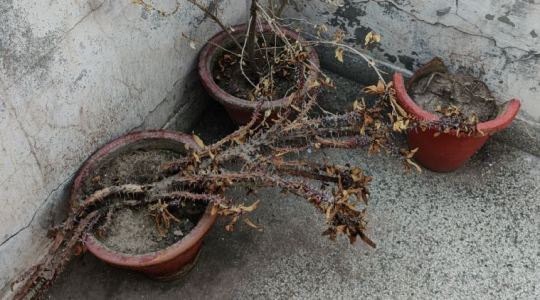

Photo shot with OnePlus 8 48MP camera mode. This is not the default mode and you have to switch it on before you click. (Photo shot by Nandagopal Rajan)


48MP image cropped still shows good details. (Photo shot by Nandagopal Rajan)
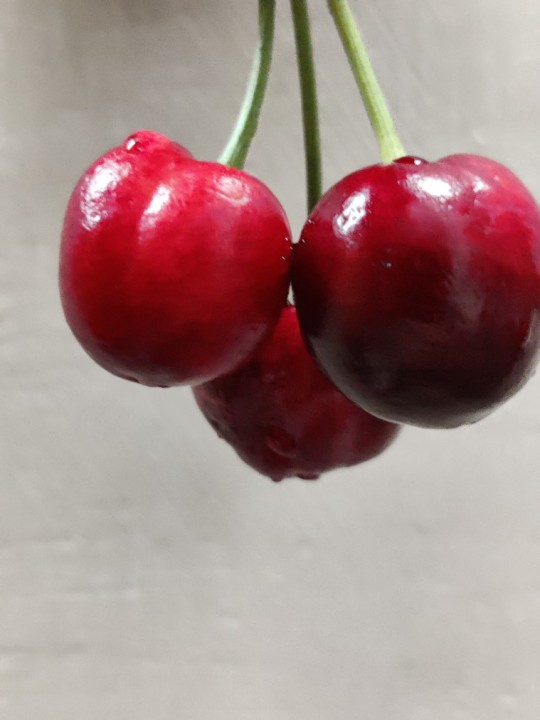

Photo shot by Nandagopal Rajan using OnePlus 8


Photo shot by Nandagopal Rajan using OnePlus 8


Low-light photo shot with the OnePlus 8. (Sample shot by Nandagopal Rajan)


Macro shot take from OnePlus 8 (Sample shot by Nandagopal Rajan)


Macro shot take from OnePlus 8 (Sample shot by Nandagopal Rajan)


Macro shot take from OnePlus 8 (Sample shot by Nandagopal Rajan)
I also loved the Super Macro mode which can give some stunning shots in normal light. This feature is getting popular in smartphones and the OnePlus 8 now offers one of the best implementations of it. The 4K Cine mode at 60fps could make this a go-to phone for lot of creative people, especially since you have 256GB of storage of play with. The 4K Cine Mode combined with the hybrid stabilisation makes this closest you can get to a professional video camera on an Android phone.
When you shoot in Cine mode the frame gets cropped into 21:9 and you have to keep an eye out for what gets cropped out in the process.
//www.instagram.com/embed.js
If you use this phone with the battery saver mode on, the 4300 mAh battery can last up to two days on a full charge. Even if you do run out, the Warp charge can set you up for another day in just about 20 minutes or so.
What to keep in mind while buying the OnePlus 8?
In a week or so I used the phone, there were no major issues that I noticed. One thing did stand out though. When listening to something at full volume, you can actually feel the music in your hands. This can be a bit irritating but seems to be something acquired because of the thin 8mm frame of the phone.


The first thing anyone will like about the OnePlus 8 is the 90Hz Fluid Display which is really smooth. (Express photo: Nandagopal Rajan)
Who should buy the OnePlus 8 and why?
The OnePlus 8 is a no-nonsense flagship that ticks all the boxes when it comes to what users need. With this phone, OnePlus has again shown that it can keep things simple and focus on what is critical to the user.
The OnePlus 8 makes for a good upgrade for anyone on the models before the OnePlus 7 series. Also, those considering to upgrade from a budget Android to something more superior. Also, I highly recommend this for gamers and those who like to indulge in some serious photography or videography with their phones.
At the moment, this is one of the best Android smartphones you can buy. And again, OnePlus shows that you really don’t need to have a flagship price and a long list of features to offer a flagship experience.
📣 The Indian Express is now on Telegram. Click here to join our channel (@indianexpress) and stay updated with the latest headlines
For all the latest Technology News, download Indian Express App.
© IE Online Media Services Pvt Ltd
0 notes
Text
Navigating November 2019
I love being in the middle of the holiday season. So many get togethers, fat-ass blankets are on the bed, the snow is on its way, presents are coming, I love it all. It’s finally time for reflection and to celebrate the entire year that has come and gone. It’s the best time of the damn year. So excited for December to start. Here’s what happened last month:
Chrissy Teigen started her own website and though I haven’t tried any of her recipes on it yet, I intend to soon. I’ll likely start with this Lemon & Walnut Pasta since it’s been pretty popular. One thing I do like so far about the site? The newsletter that she emails out. She gives restaurant recommendations in them, which I happen to love.
I rewatched The Game and it’s still as great as I remembered. Michael Douglas can do no wrong.
Quick question: does anyone ever change up their makeup routine? I want to and don’t know how. I’m thinking maybe I’ll go the YouTube-tutorials route, but they can be so boring. Any suggestions welcome. I do not want to watch James Charles. His face bothers me.
I tried the Hard Kombucha from Trader Joe’s and it’s absolutely nothing special at all. The regular non-alcoholic stuff is way tastier.
I rewatched Rosemary’s Baby (I first saw it as a teenager and did. not. enjoy. it.) and surprise surprise: adult-me didn’t enjoy it either. It’s just really frustrating to watch. Mia Farrow makes all these terrible decisions and her husband has sex with her when she’s unconscious (???) and it’s just a lot. Must remember to never watch again.
We bought a new couch! It’s been a very big deal.
The TWA Hotel just keeps getting cooler: they’re going to have an ice skating rink this winter.
Love this cartoon:

Above Photo: Elilis Rosen, The New Yorker
I tried the Staten Island-style pizza at Joe & Pat’s in the East Village and it was good, but nothing to write home about. Skinny pizza is skinny pizza.
We haven’t watched any old Twilight Zone episodes in forever, probably because we forgot about it but also maybe because I think we’ve already seen all the good ones. But we recently watched The Long Morrow episode (mainly because it’s mentioned in a Gilmore Girls episode where it’s noted how romantic this episode is supposed to be) and WOOF. It fucking blew! I was pissed. I should’ve known it would suck though because it was “Logan’s favourite episode.” Serves me right.
I tried these cauliflower crackers from ALDI and whoa. Greatest cracker. This was also the first time I’ve ever been to an ALDI and I was expecting a bit more, to be honest. It’s just a dumpy grocery store? Why all the caps?
I’ve been following this woman Arielle for a few years now and I like her a lot. She used to work for Buzzfeed and that’s where I’d first heard of her (don’t judge me) and now I just sort of like to keep up with her life and what she’s doing. Very sweet, likable person to follow. This sounds vague as hell, but I’m really just mentioning it here because I feel like it’s hard to come across good people to follow who don’t make you feel bad about your own life and are sort of inspiring.
You know how you’ll buy something that’s supposed to change your life and you use it for a week and then never again? Yeah, that’s me with every single thing on my dresser. ANYWAY, I’ve actually started to use the Origins GinZing Eye Cream every night for the past little while and it really works, I think. (God, this just reminded me that I need to start remembering to put on neck cream. I can’t remember where I heard someone say that no one cares about their neck when they’re young and then WHAM one day your neck looks like that of an elderly turkey.)
I really thought I wanted to buy this new Frozen Colourpop palette but then I realized that I actually only want that colour in the middle, soooo I might just get this Huda palette in Topaz instead. (Yeah, I just bought it.) I’m very in the mood to do holiday makeup this year.
I think I’ve decided that there are way better eyeliners out there than Fenty’s Flyliner. It sticks to your eyelashes so that a coat of mascara can’t go on smoothly! It sucks. There! I’ve said it! Still love the sponge, though.
I rewatched The Day After Tomorrow and I’ve gotta say… I love movies like these. Dante’s Peak. Twister. This one. Love watching the world get all fucked up. But really, did climate change WRITE this movie? It’s great.
I have been watching so much Living Single and maaaaaaaan, this show’s perfect. It’s funny, it’s got heart, it’s not a typical kind of sitcom, there are minimal white people, it’s got it all! Love it so much. Wish reruns were easier to find on TV.
Hulu is having a sale right now where it’s $2/per month for a year. Yeah, that can’t be right. Check it out, might be worth it. Sale ends Monday December 2nd.
I am in love with these socks I got from Express. Love a smooth, soft sock in the wintertime.
I posted about my trip to New Orleans last month.
I made this Melt In Your Mouth Chicken and it was actually pretty good. Never would’ve even thought about coating chicken in yogurt.
I rewatched Big and of course I love this movie, it’s got a wish-granting robot machine in it. I should’ve wrote this damn movie!
Words can’t fully describe how much I love the Halloween and Thanksgiving and Christmas themed episodes of Bob’s Burgers. They’re always the best.

I watched Rumble in the Bronx and wow. Just a fun movie. Best part is by far the moment he launches a toddler out of harm’s way.
I went to Mister Paradise in the East Village and I’m sorry, it’s too expensive to drink in public these days. It’s nuts. One drink should never cost more than $15, have we all gone insane to silently agree to these parameters? And if you’re advertising “fancy sauce” for your fries, it better not be fucking ketchup mixed with mayo. That is some bullshit.
I finished Lindy West’s new book The Witches Are Coming and wrote a post about my favourite parts from it.
I watched True Lies and holy shit, a lot happens in this movie. In a good way. Fun watch.
I tried a sample of this Belief cream and it is luxurious as hell. Feels like it might be the perfect neck cream, too. You know, if you’re looking for that kind of thing (YOU SHOULD BE).
So I watched the Mr. Rogers movie with Tom Hanks and it’s just an unnecessary movie. I’m not hating on Tom Hanks, he’s fine in it (although he looks nothing like the man, it isn’t a good impersonation, the story doesn’t need to be told, ETC.) but it really just didn’t need to be made. A great Mr. Rogers movie already exists. They already did it! That being said, I teared up whenever any of the Mr. Rogers songs were sung. I can’t NOT cry at those songs, I’ve got a beating heart, don’t I?
So when I did Nathan’s podcast earlier this month, we talked briefly about going vegan for a week (we watched The Game Changers documentary) and we did it and now our lives are changed. Hahah, no no no, but that’d be wild. It was a hard week to do (mostly to cut out the dairy) but it did feel really good, so we’re going to try to limit meat and dairy much more strictly and see where that takes us. I promise not to talk about this for the rest of time.
I tried Trader Joe’s Vegan Mozzarella and holy hell, it was bad. Tasted like cooked plastic. Returned it immediately.
In contrast, their vegan butter was really, really good and a great substitution for regular butter.
I will forever love and miss In Living Color.
In true November fashion, I had my Thanksgiving croissant from Momofuku Milk Bar and I got it at their new flagship store in the city that is huge. They also had (vegan) apple pie soft serve that was insanely good and the seasonal pumpkin dulce de leche truffles they have right now are amazing. And the flagship location accepts cash! This better be the start of all the damn locations accepting cash. Don’t GET ME STARTED on places not accepting human cash.
Some thoughts on how to have a cheaper Christmas.
Some things that I’m looking forward to this month: I’m going to attempt to make (rather than buy) some of the Christmas gifts I’ve giving this year but we’ll see if this actually pans out, I’m awaiting Jenny Slate’s new book from the library, I definitely have to find time to watch Krampus, putting up the (real) Christmas tree since this is the first year we’re getting a normal, adult sized one, the first day of snow is apparently tomorrow (in NYC) and I’m in looooove with the fact that it’ll also be December 1st when this happens, taking the family Christmas card, I have an obligation to make these Nutella cookies, and I will definitely watch a few of these. Santa, get your ass over here!
If you’ve got any interest in reading last month’s roundup, you can see what went down in October over here!
0 notes